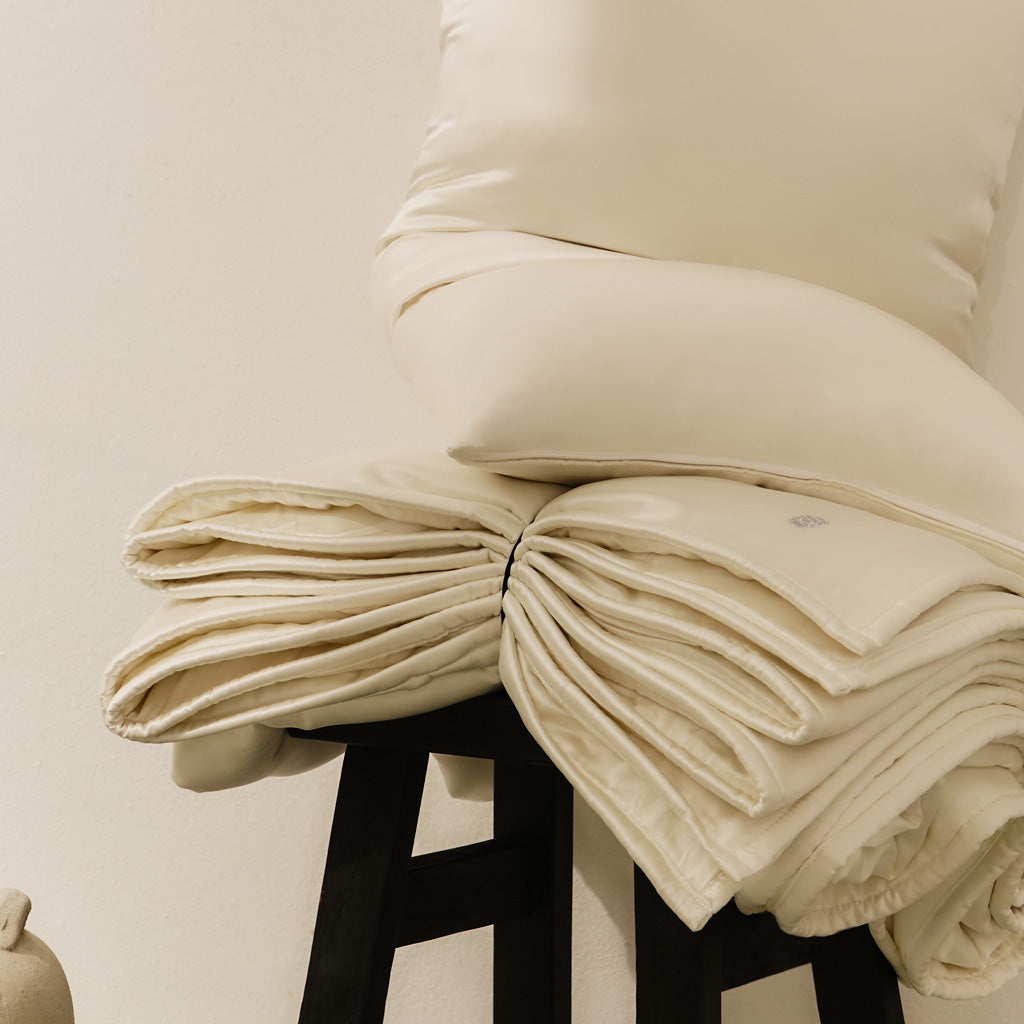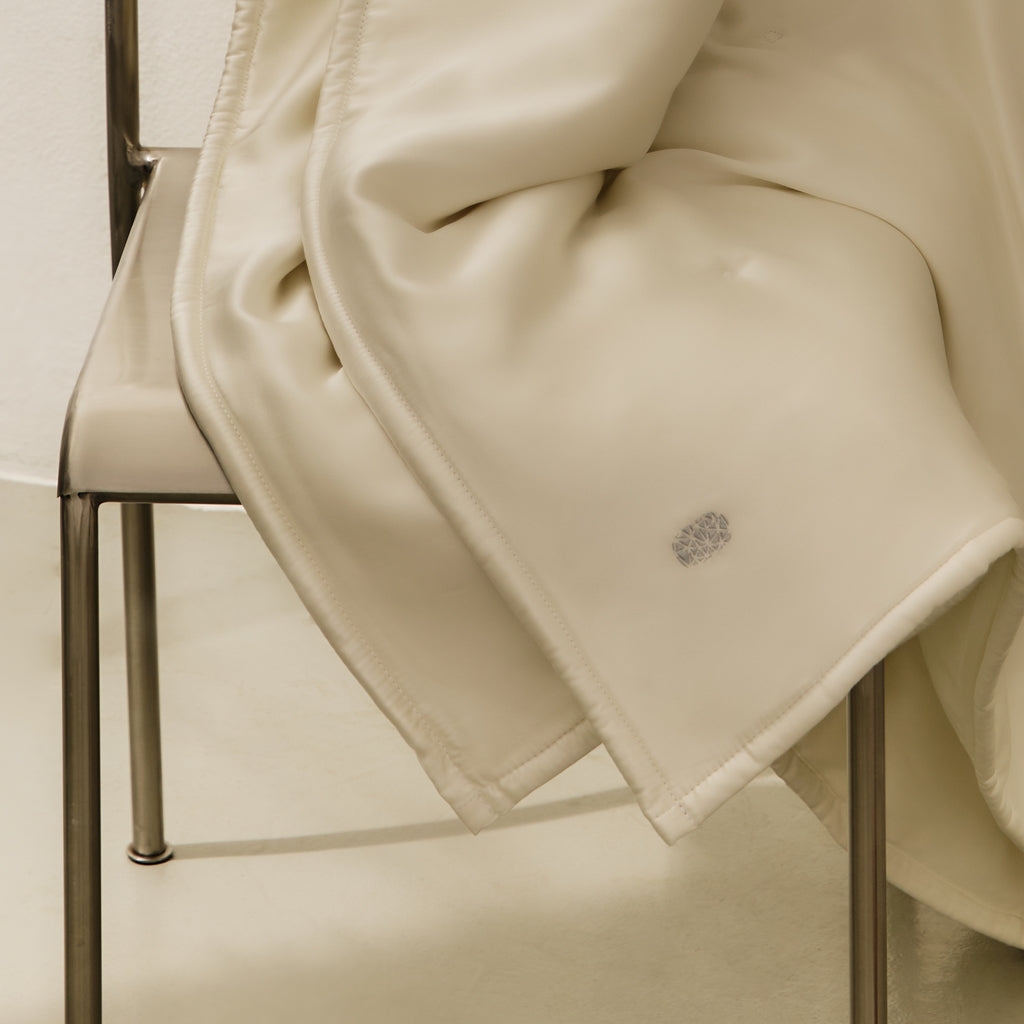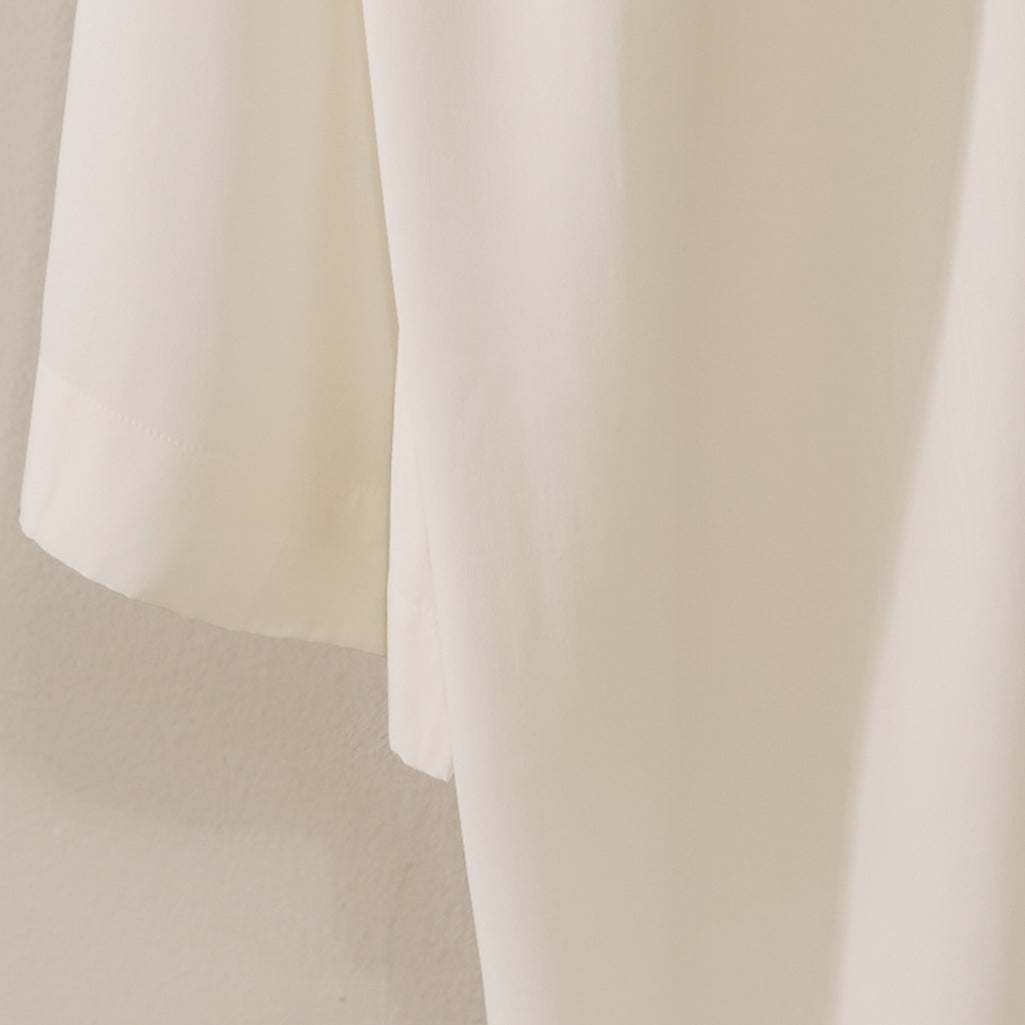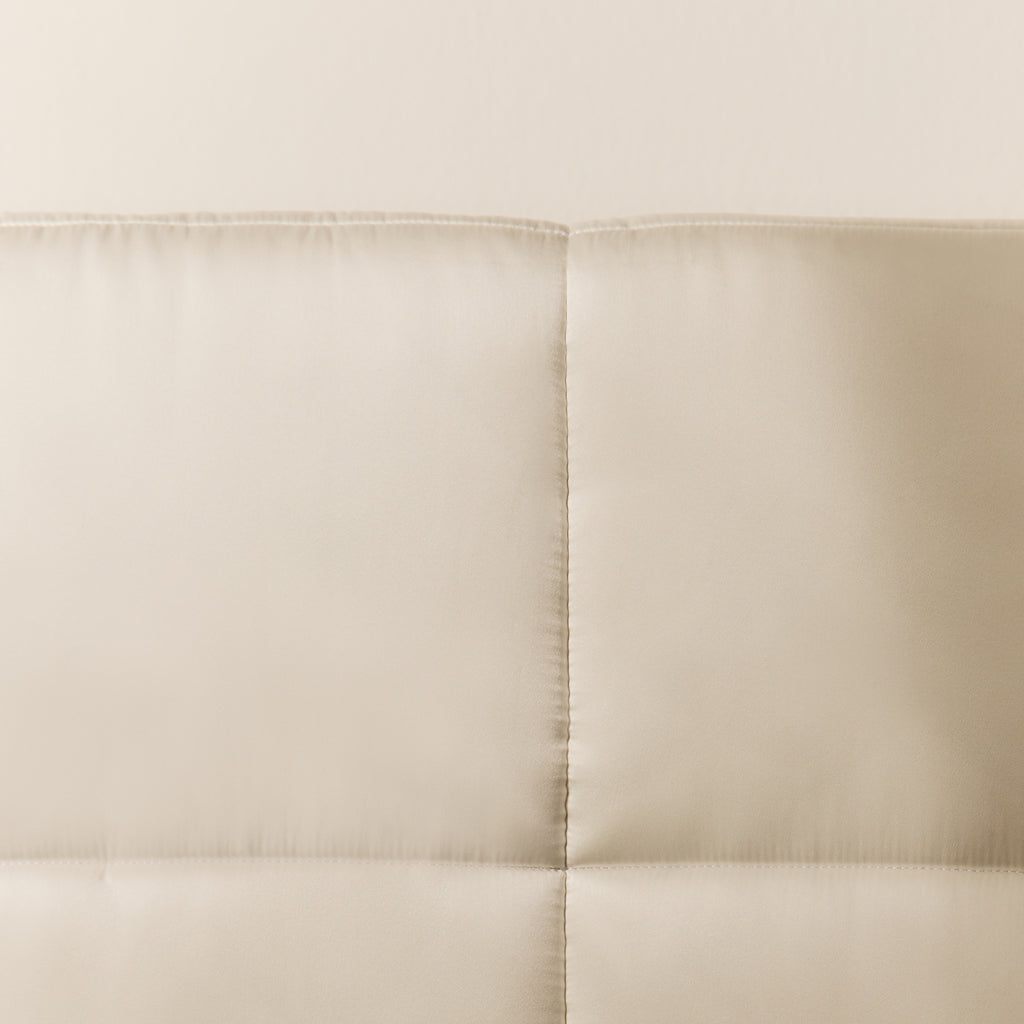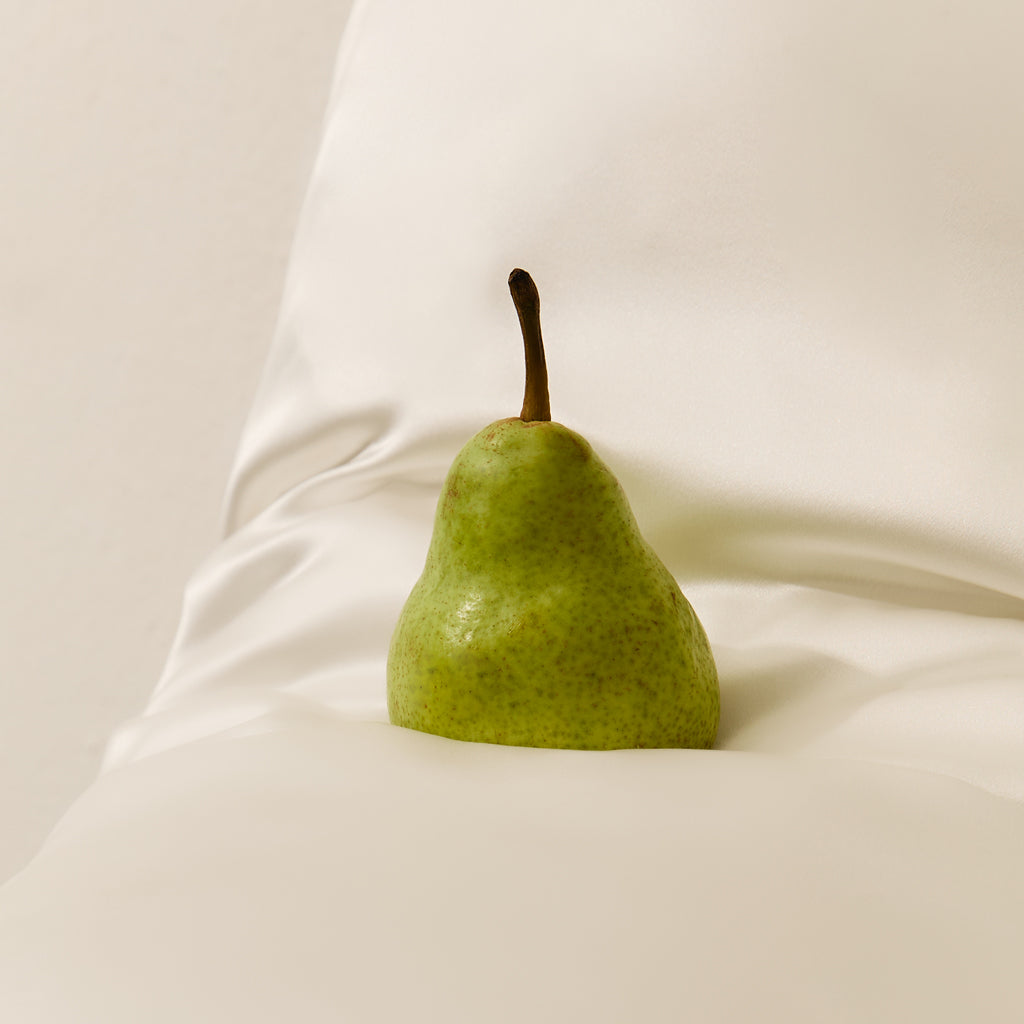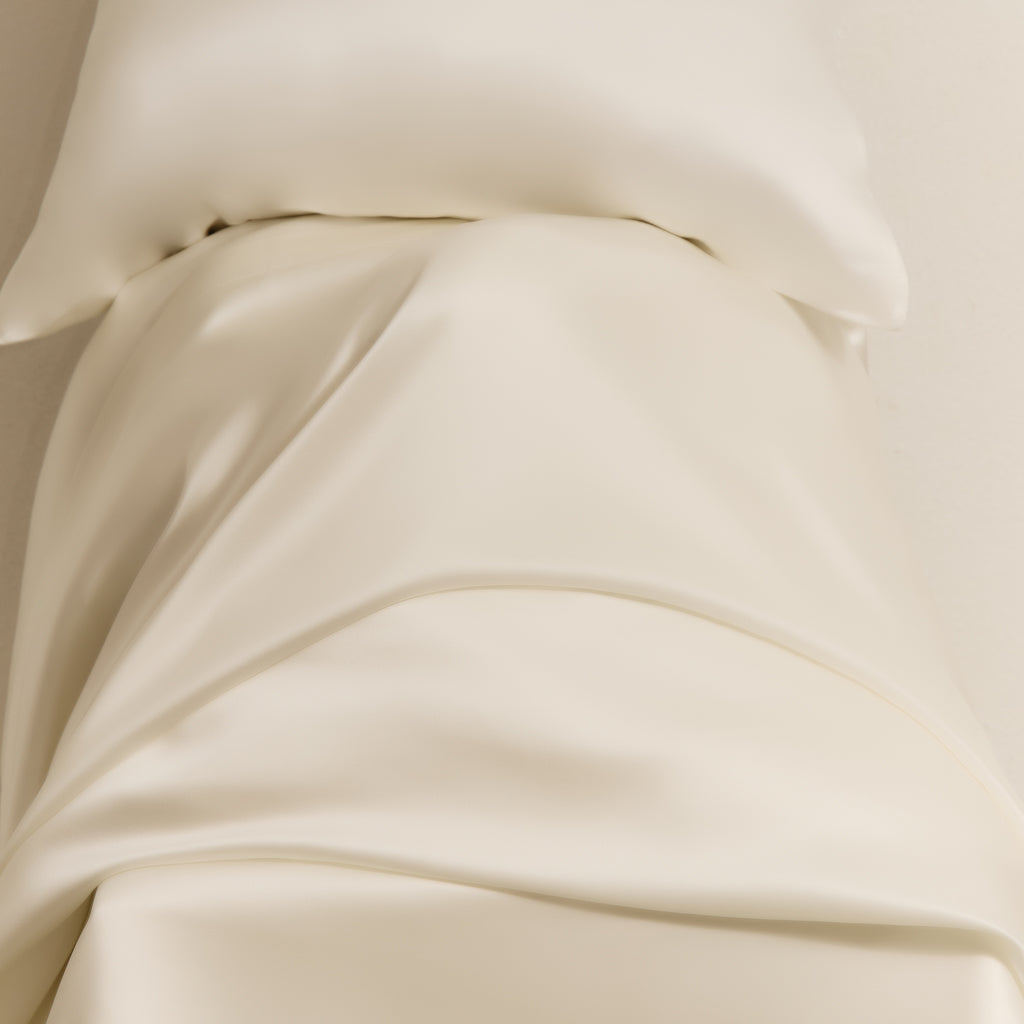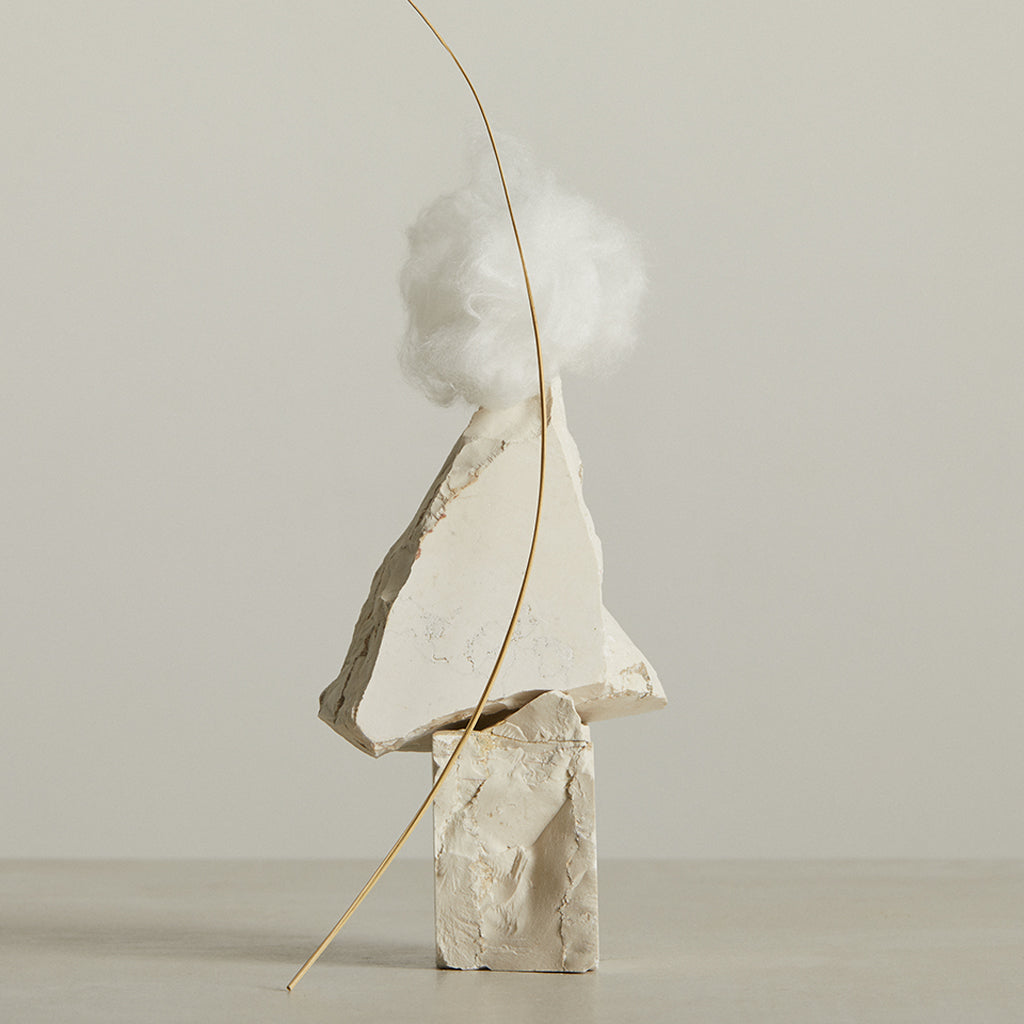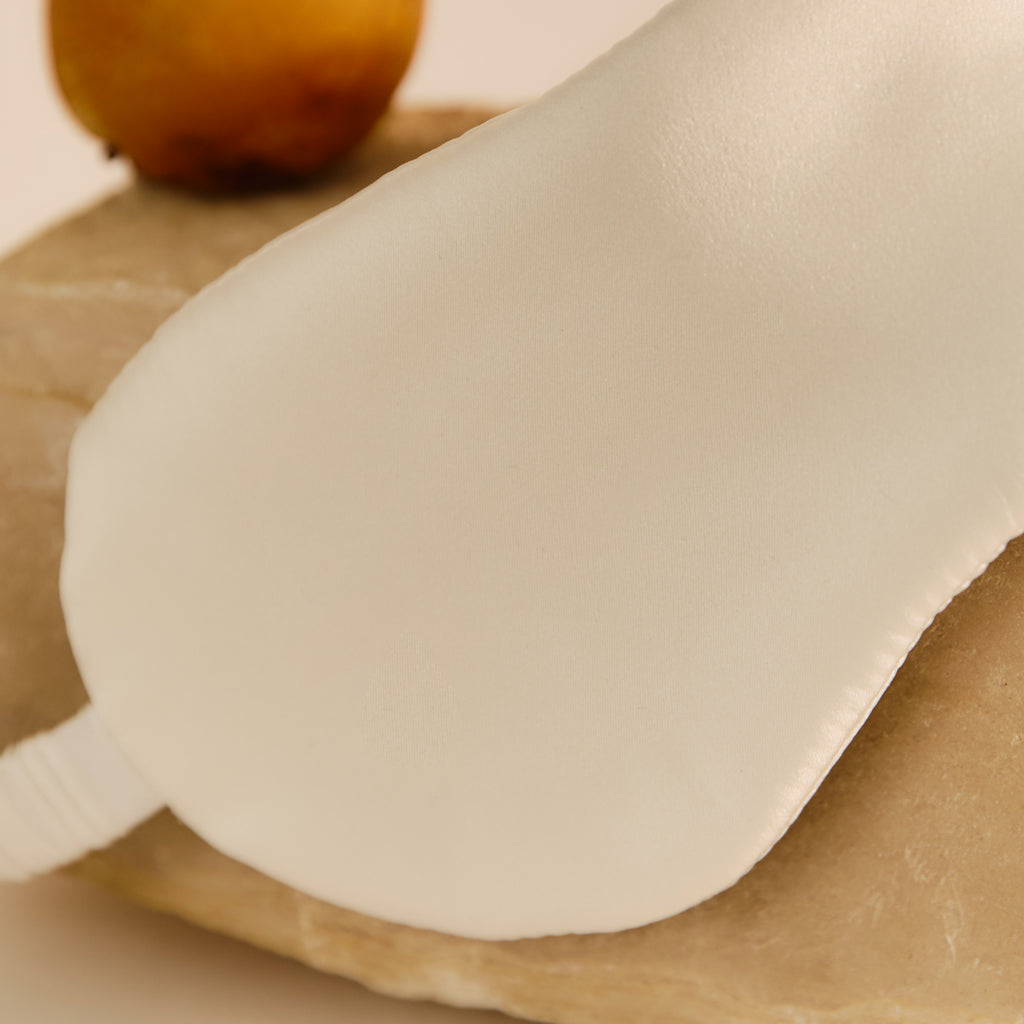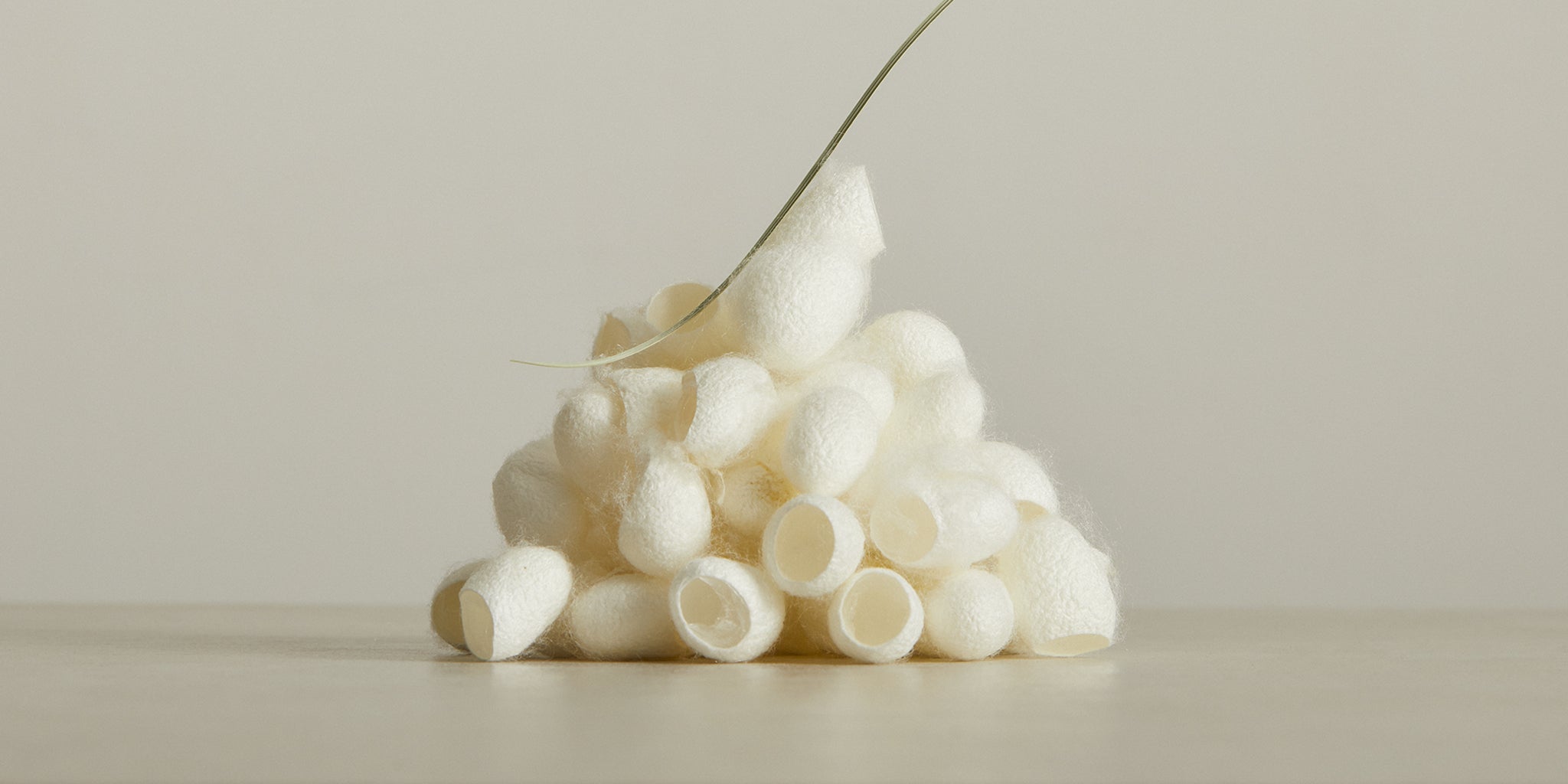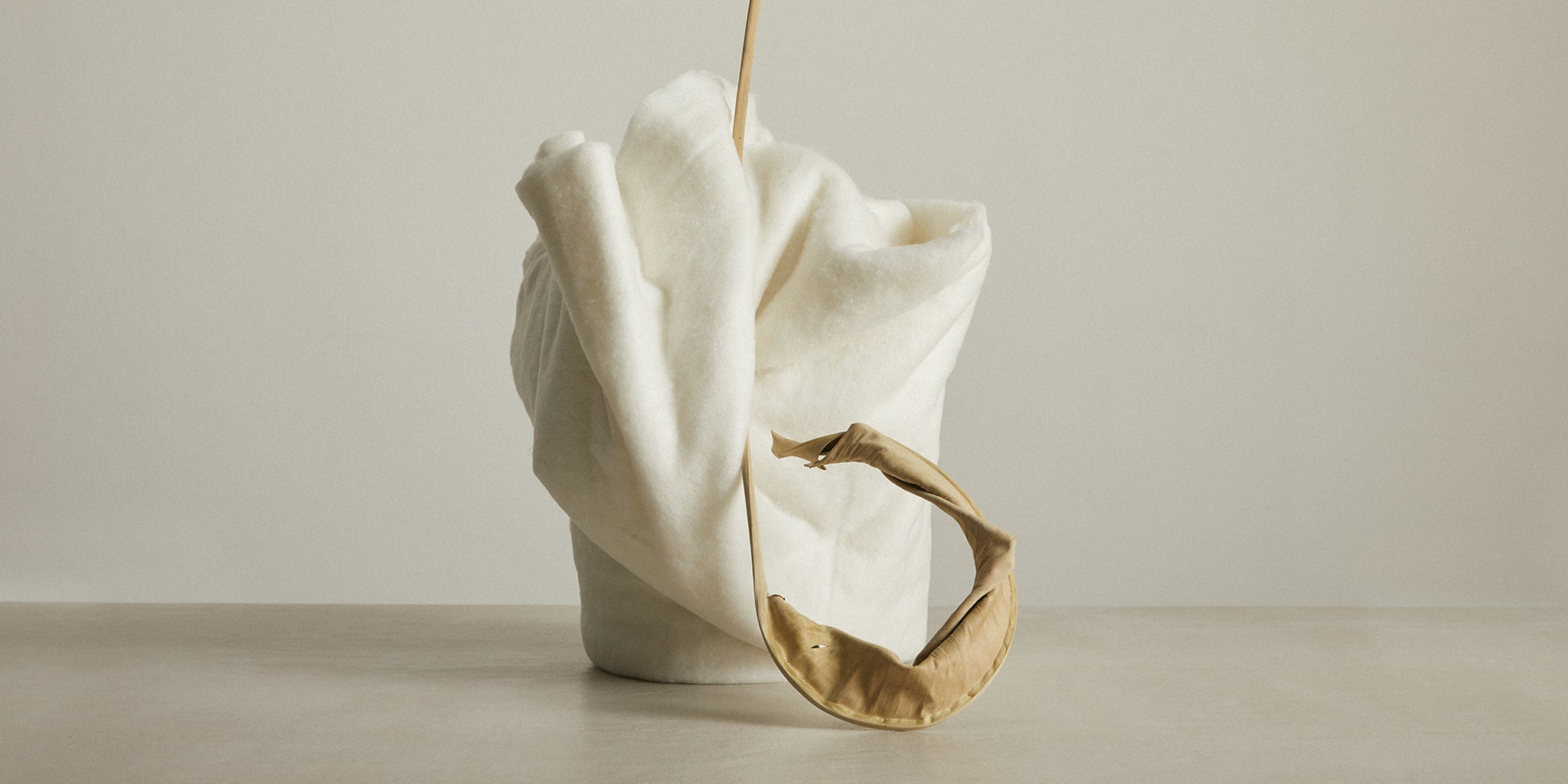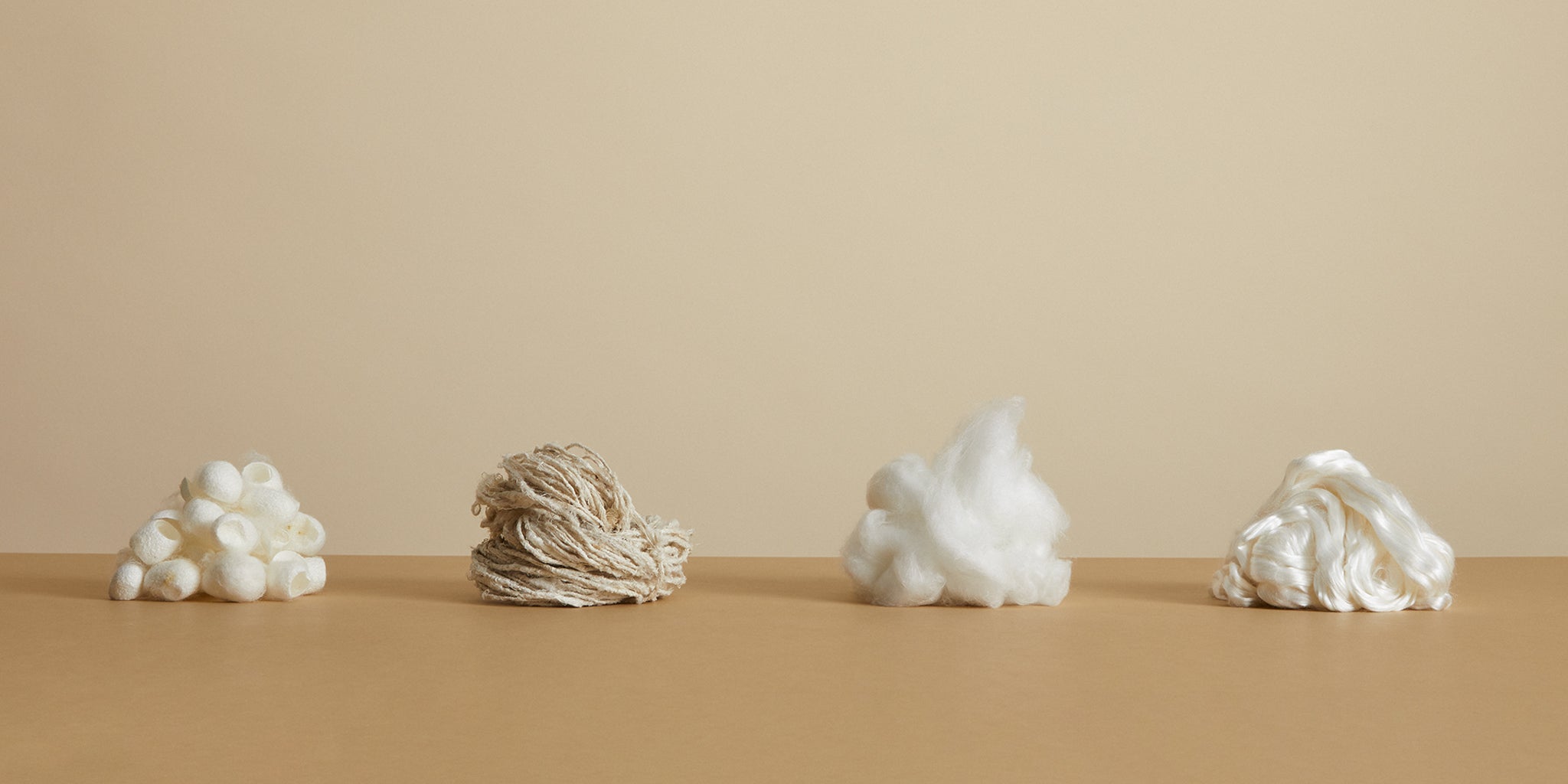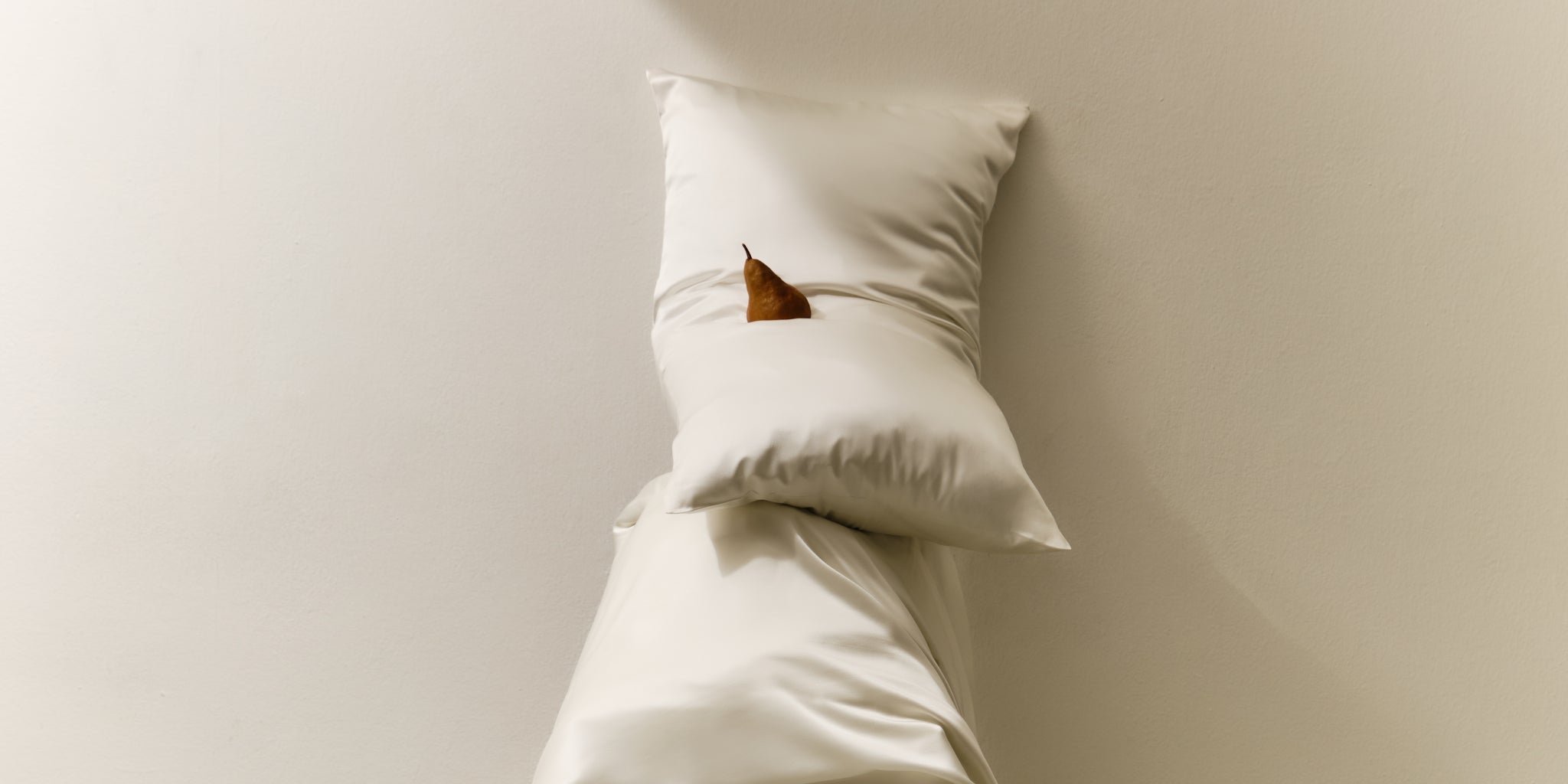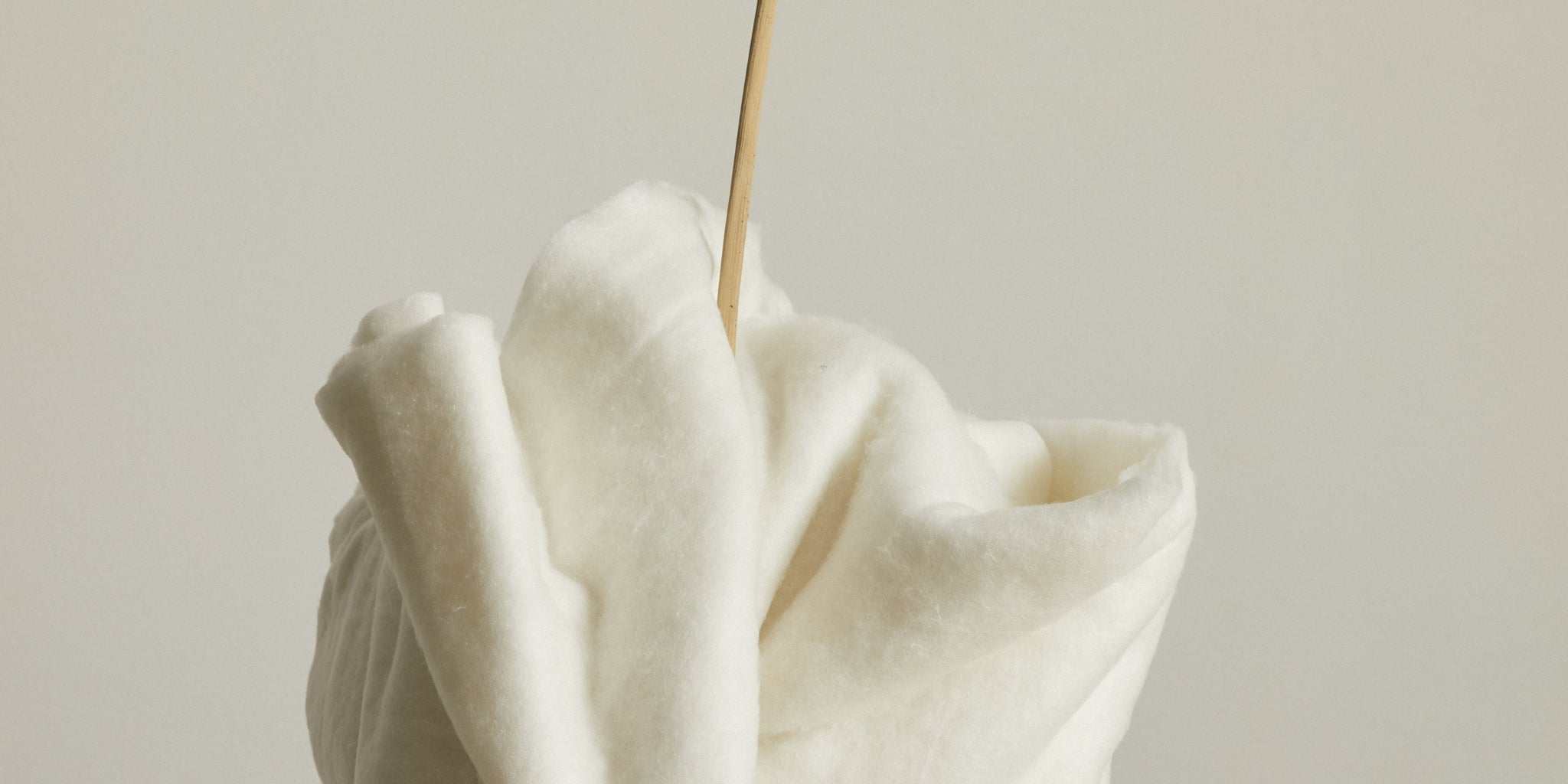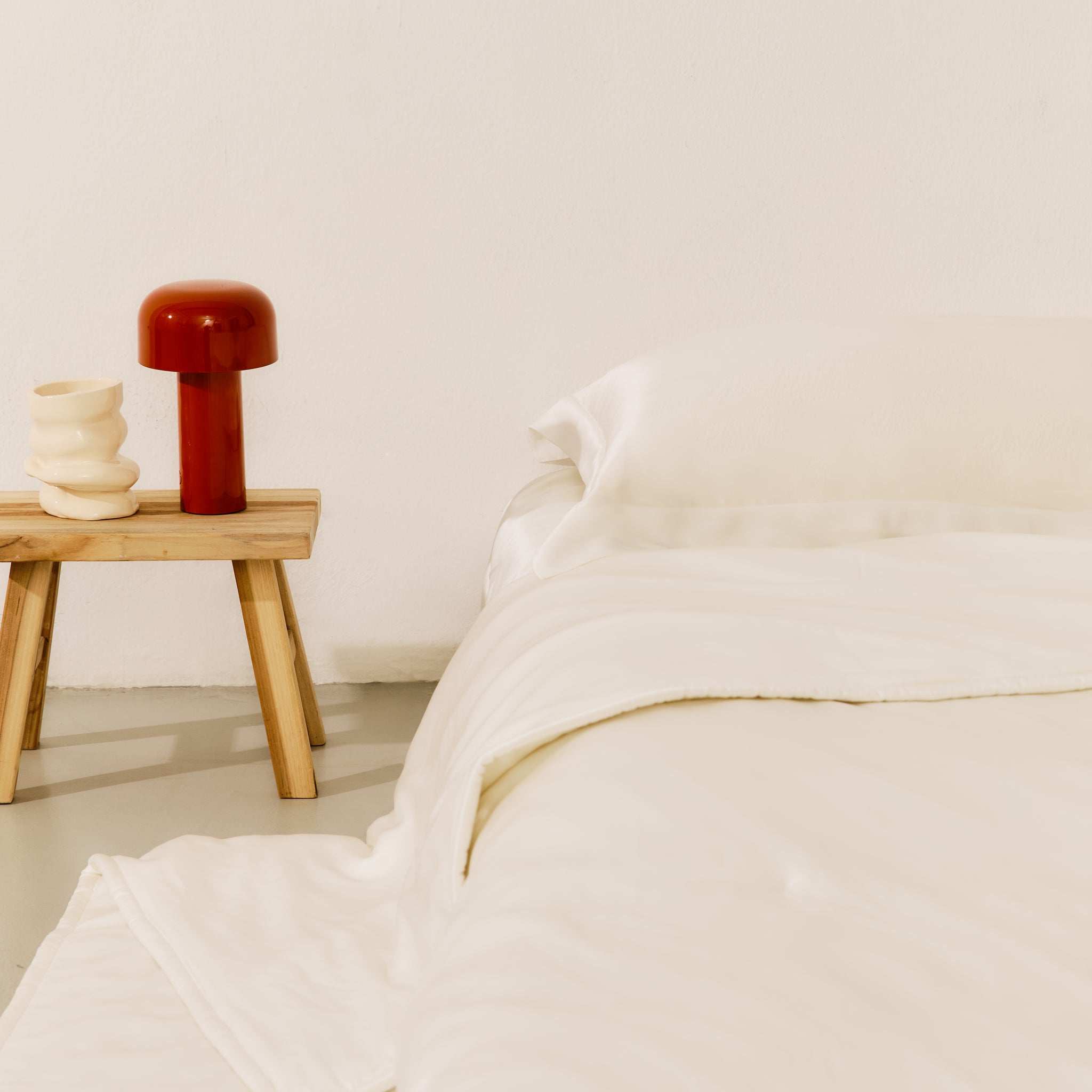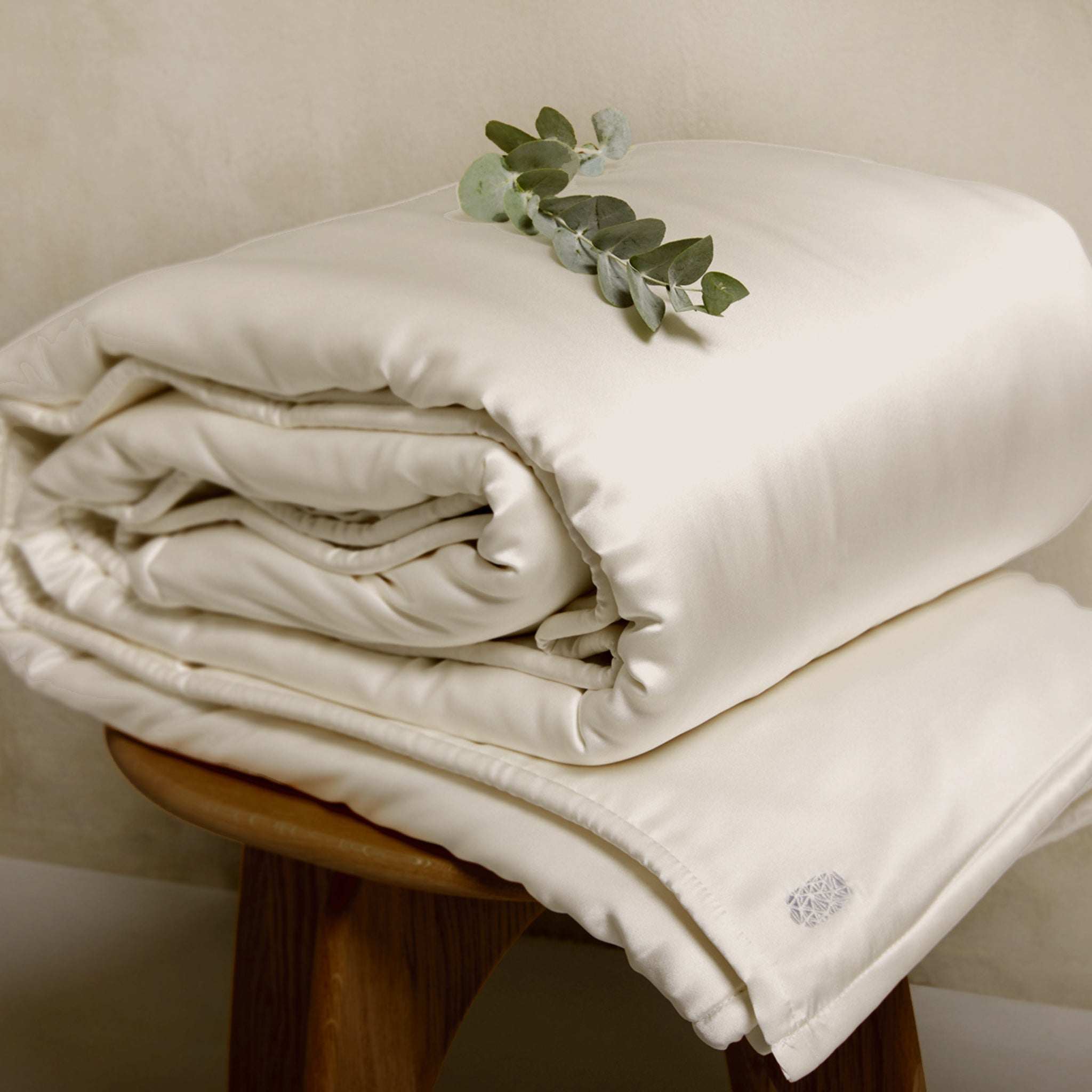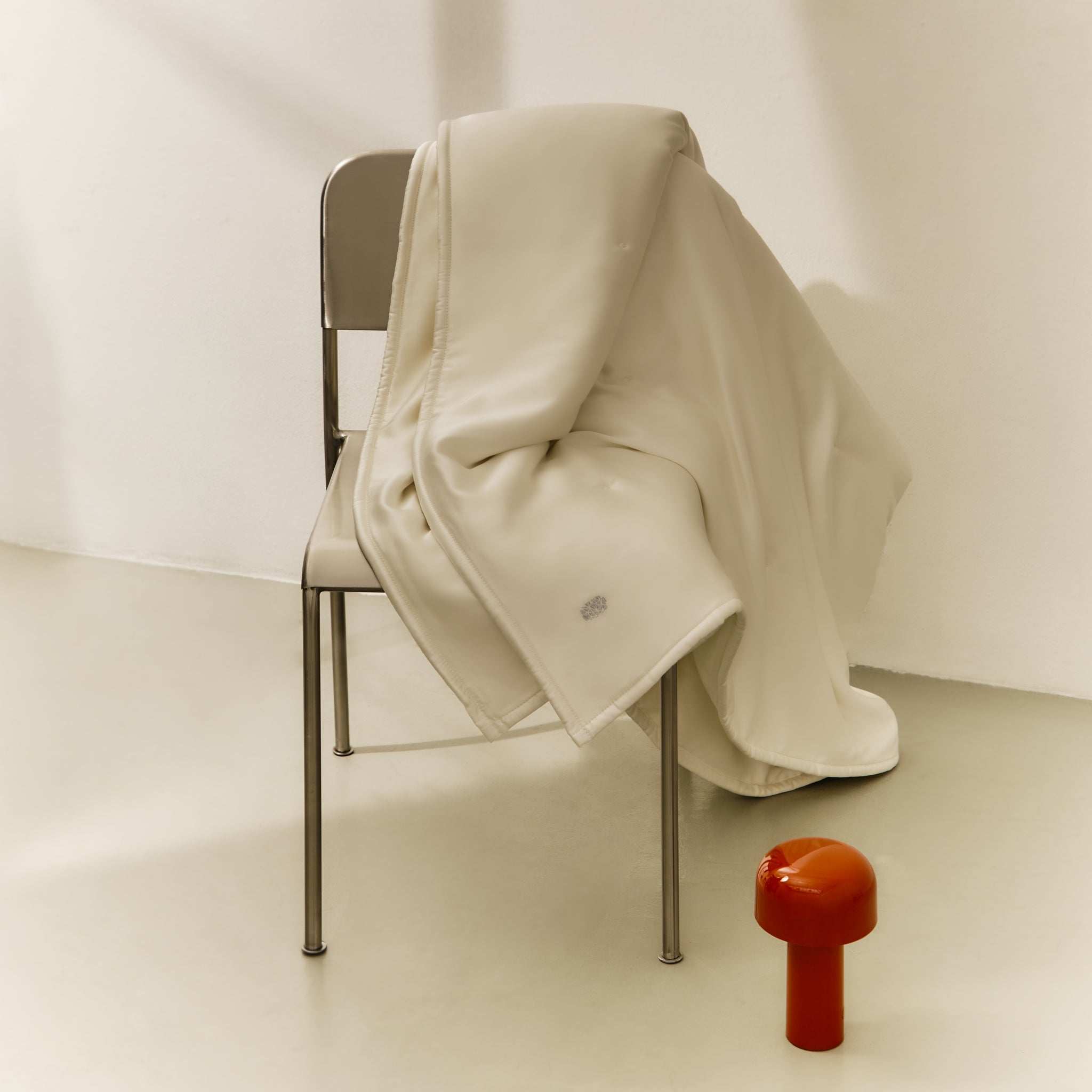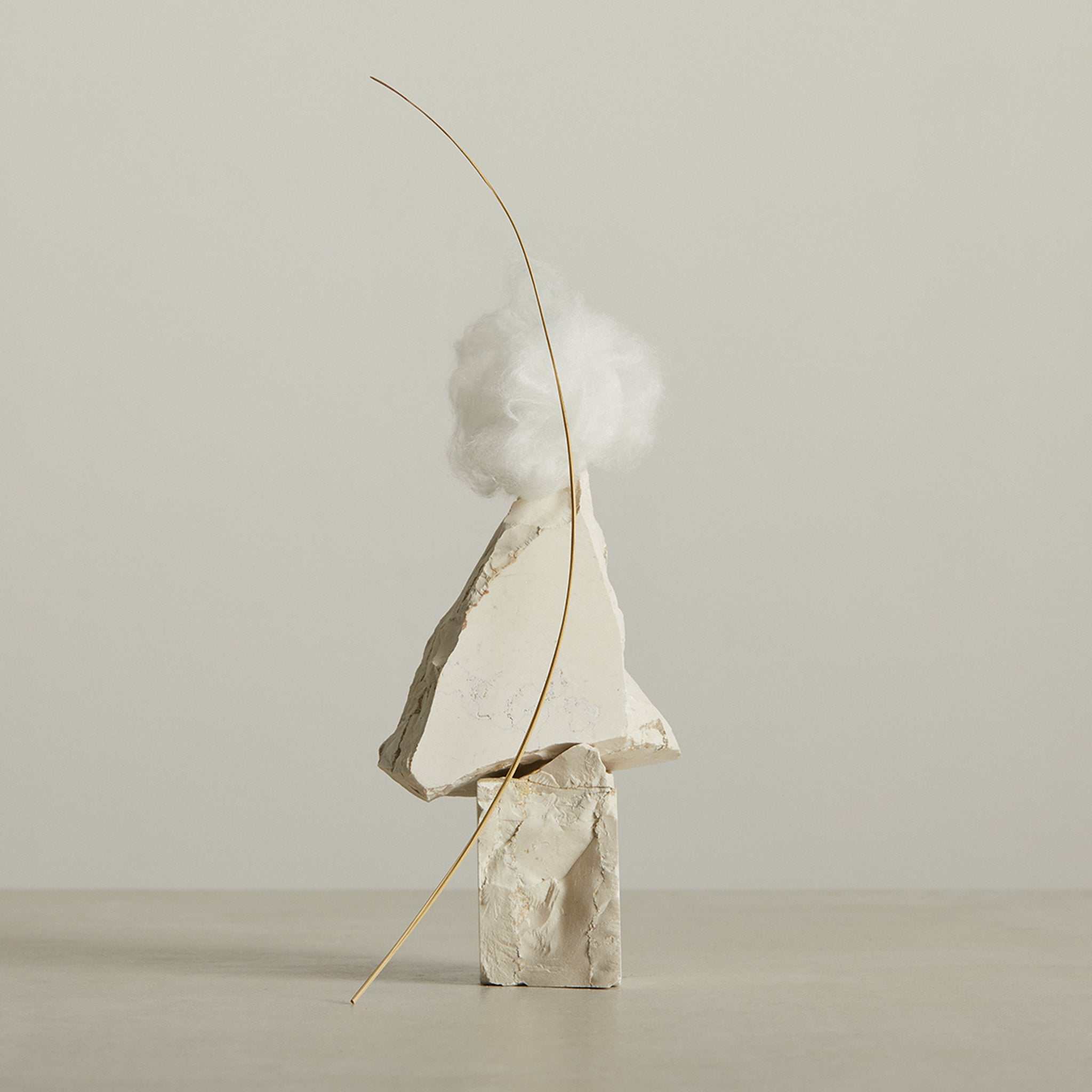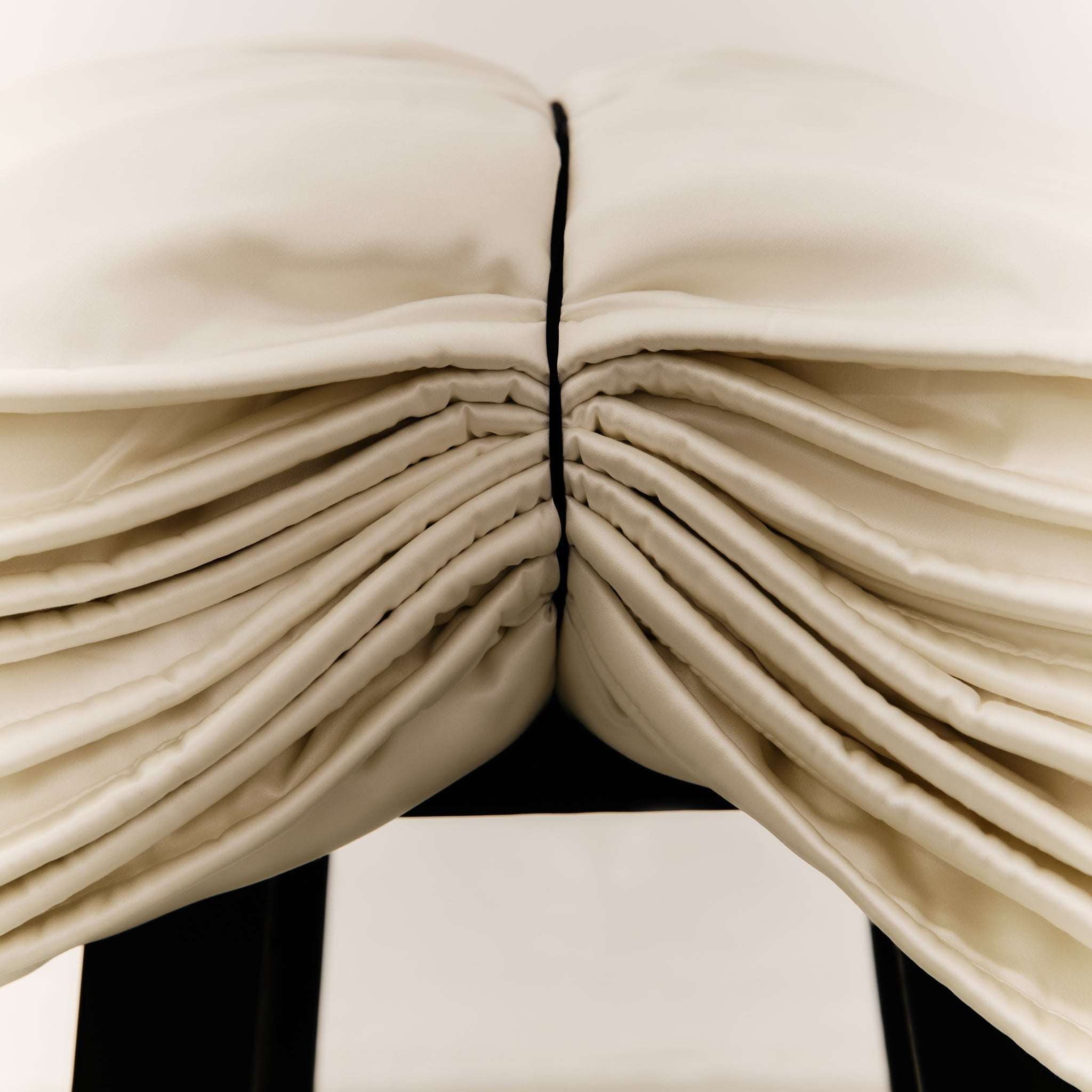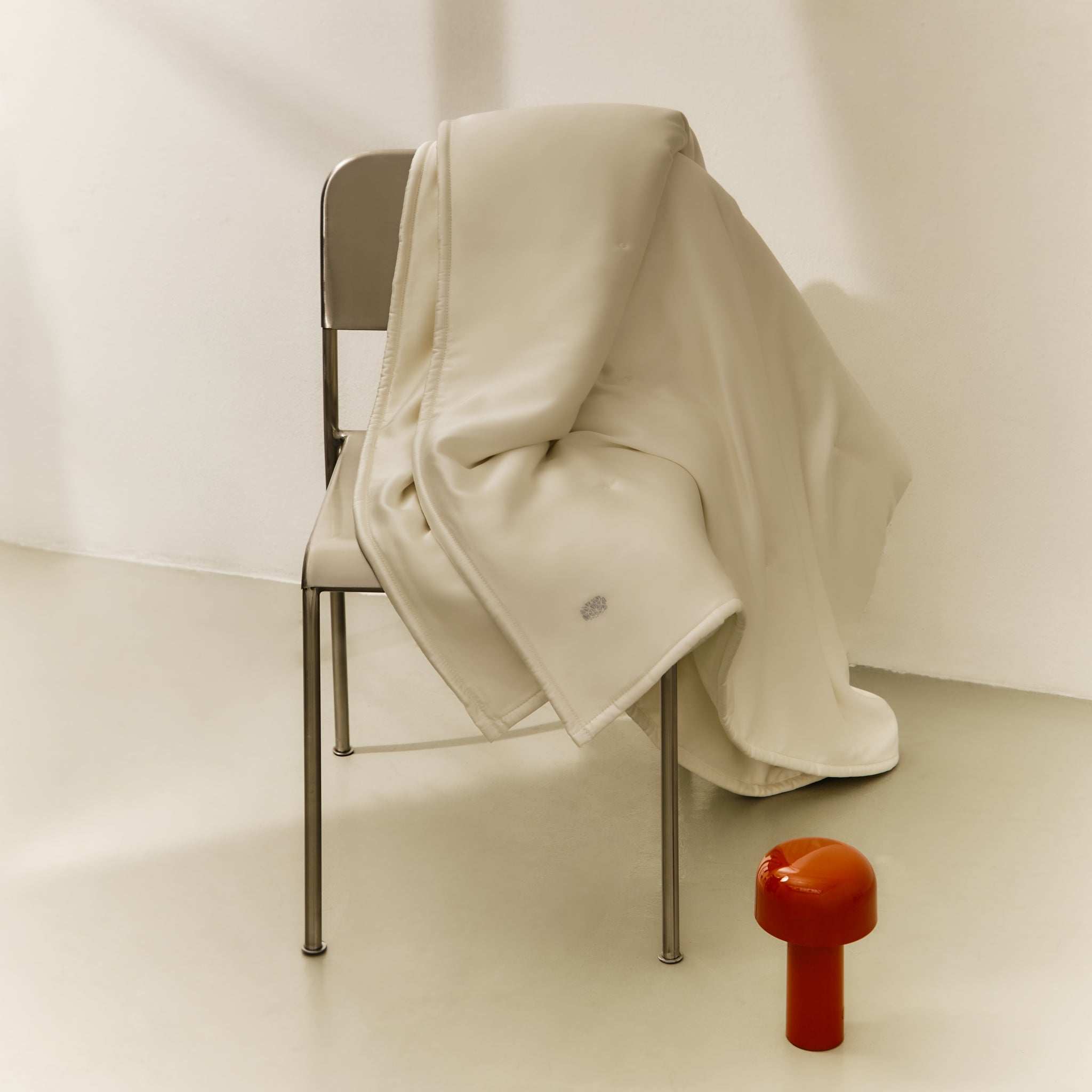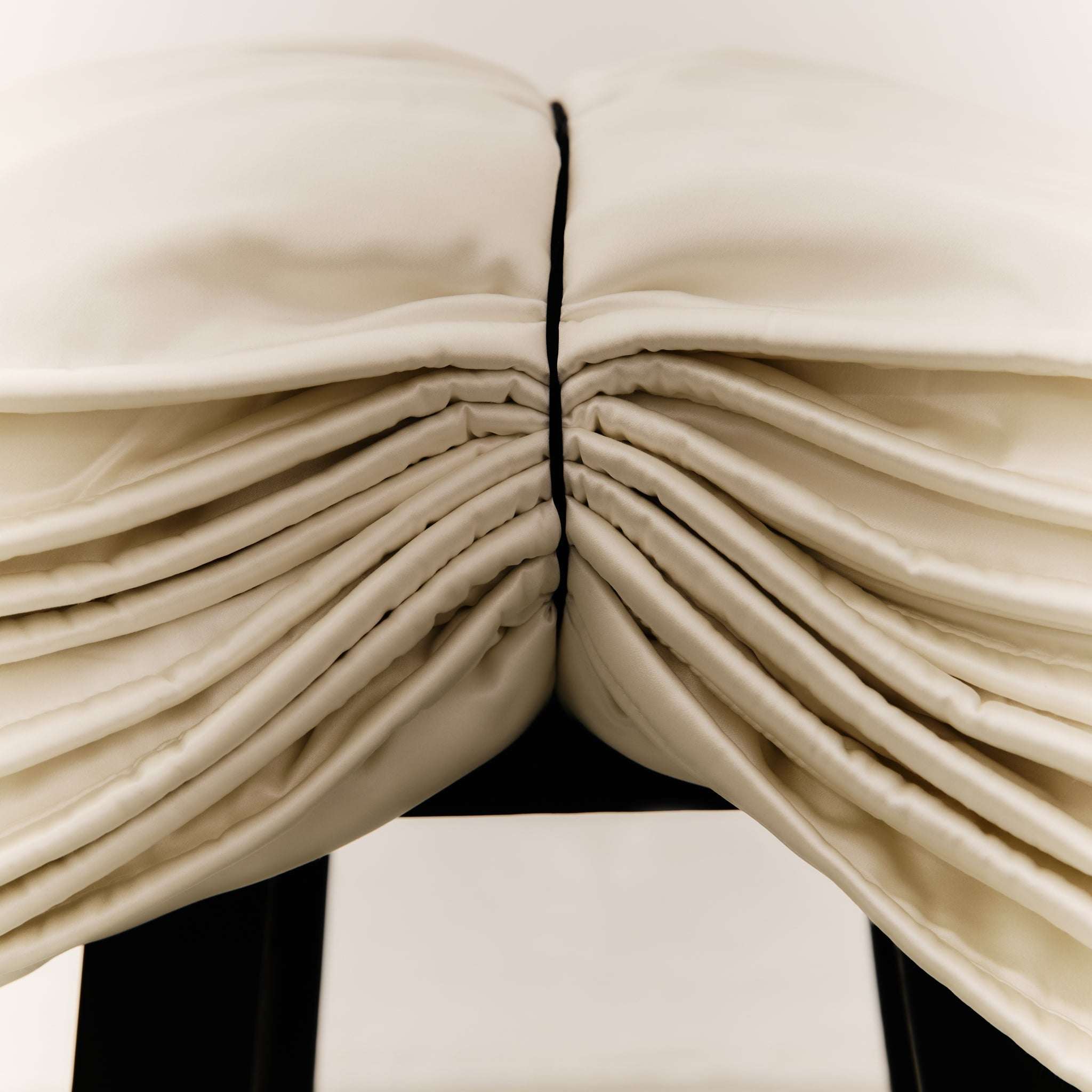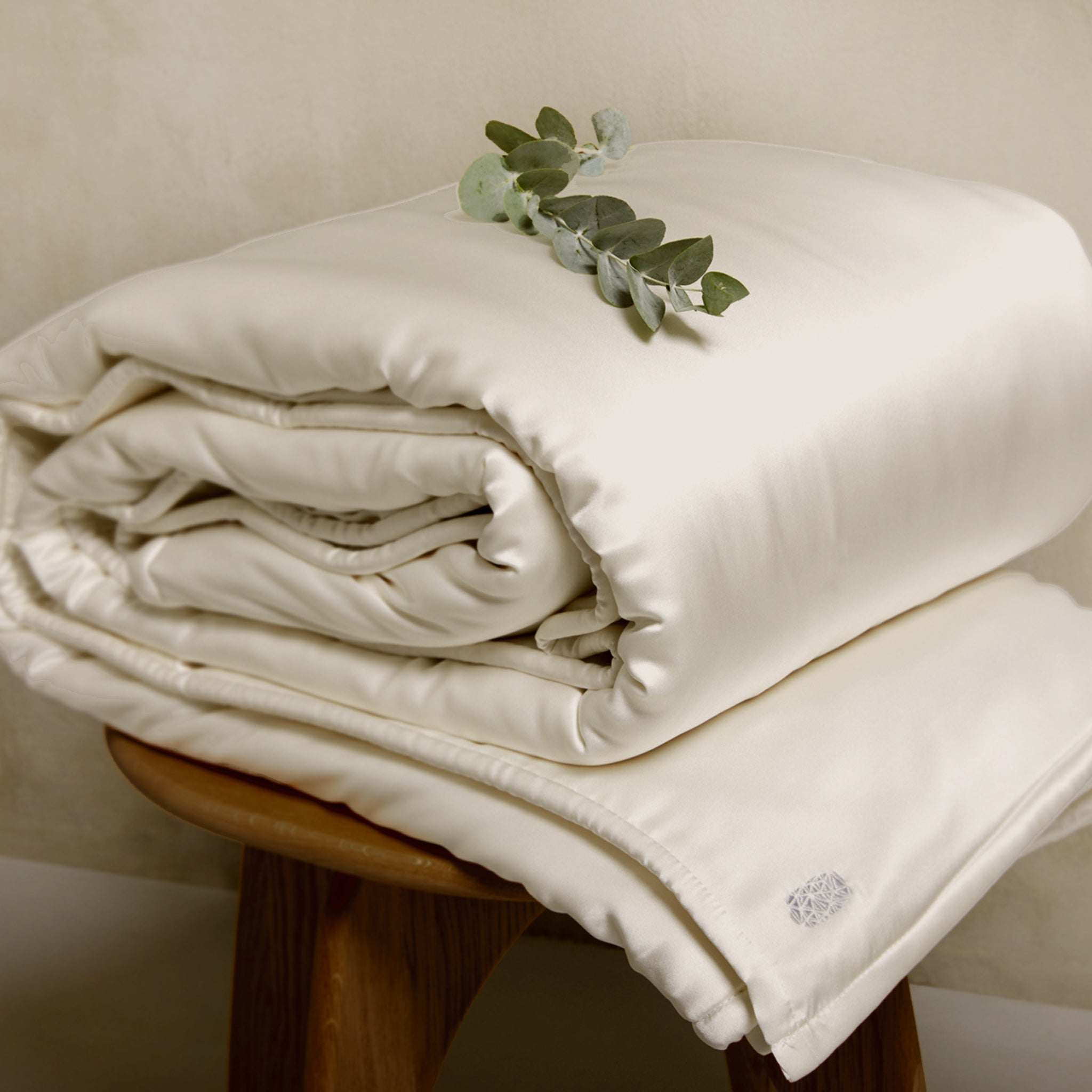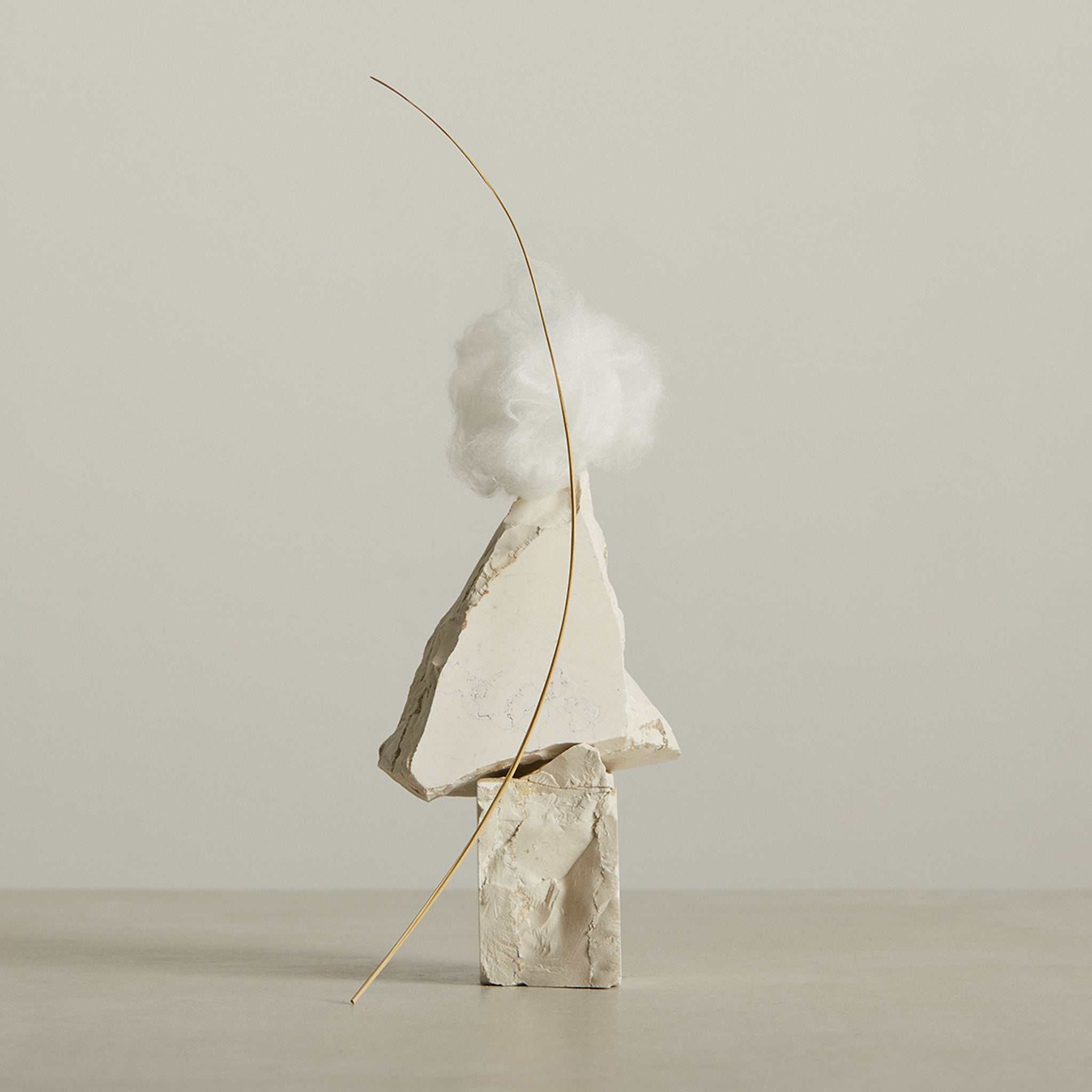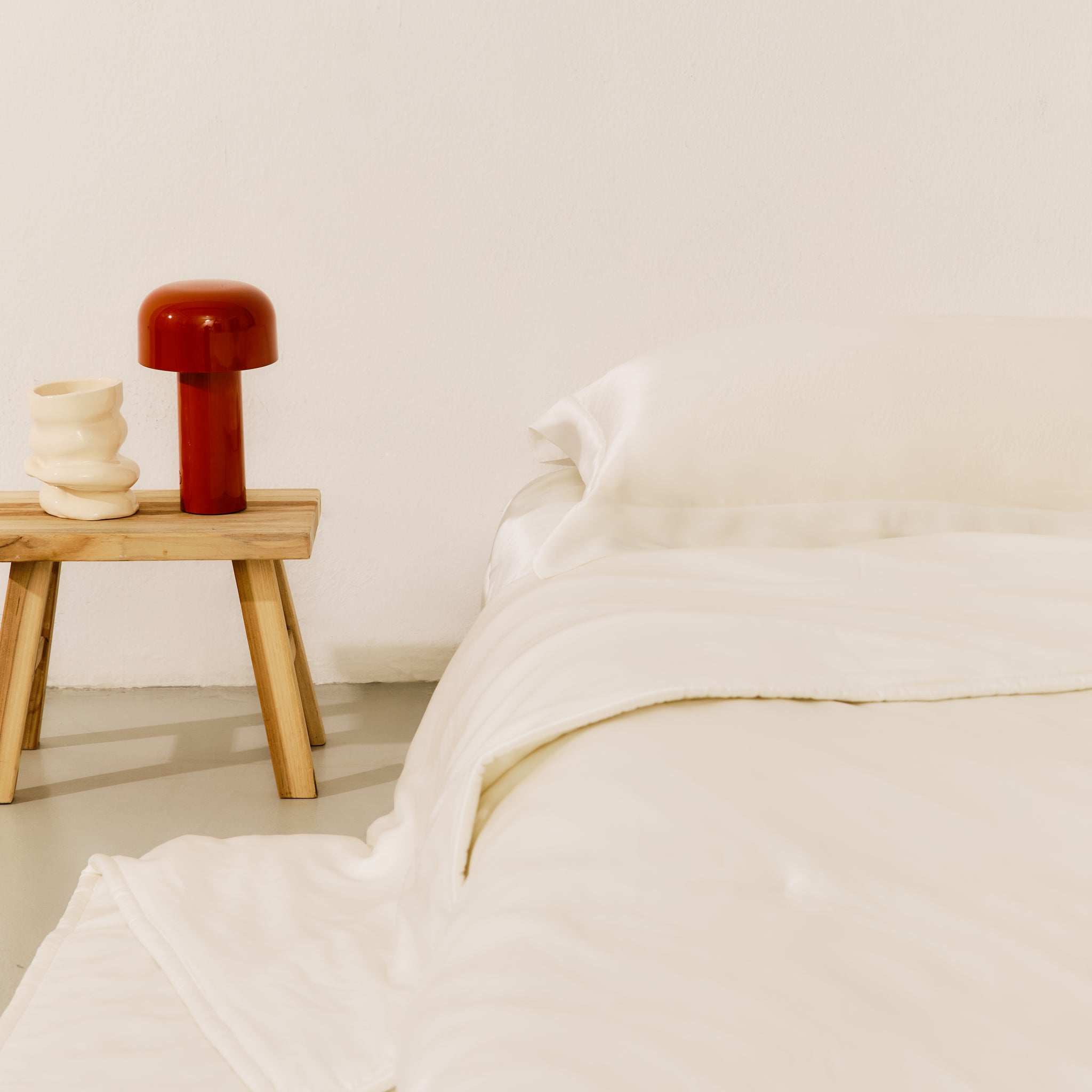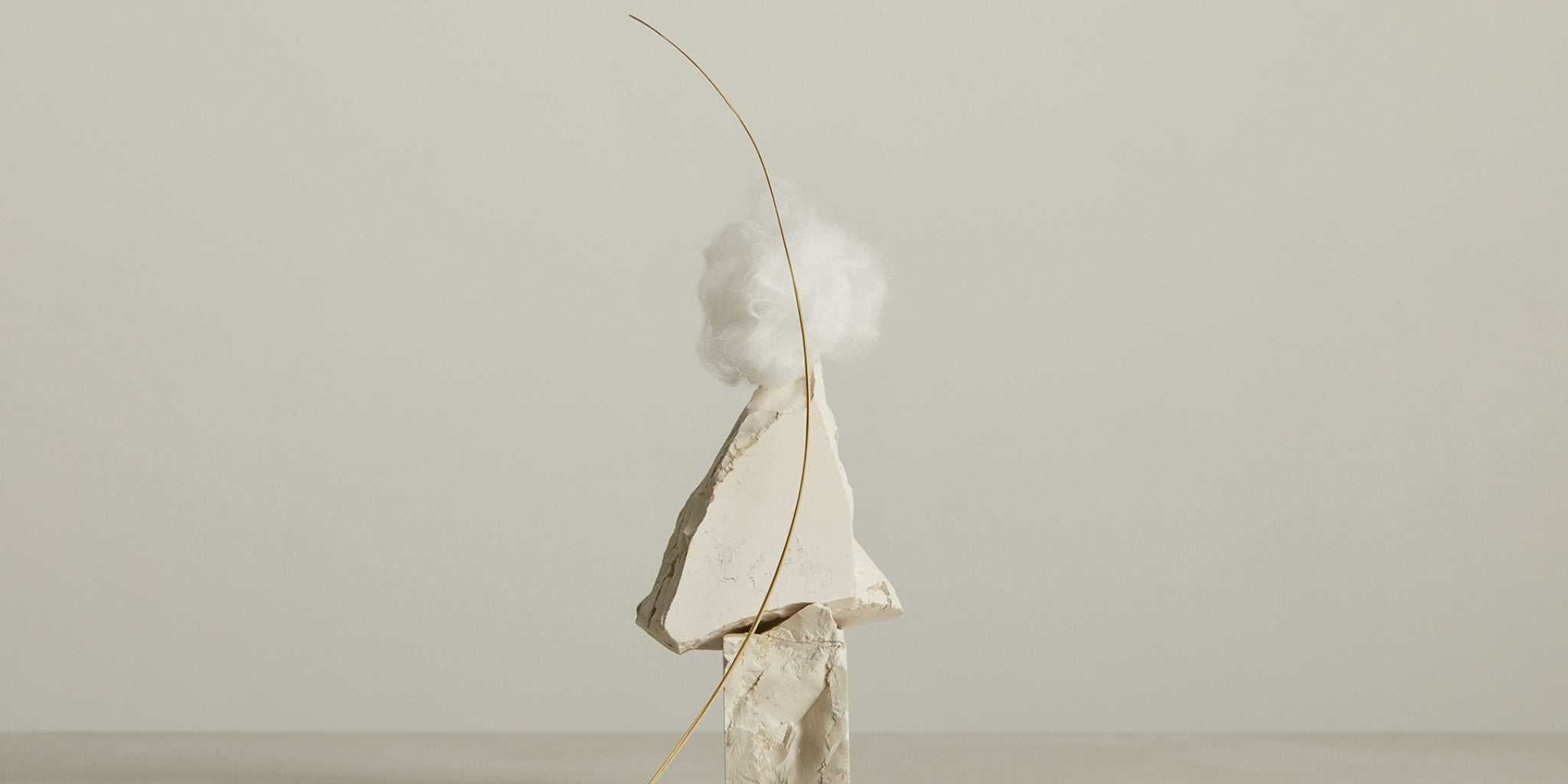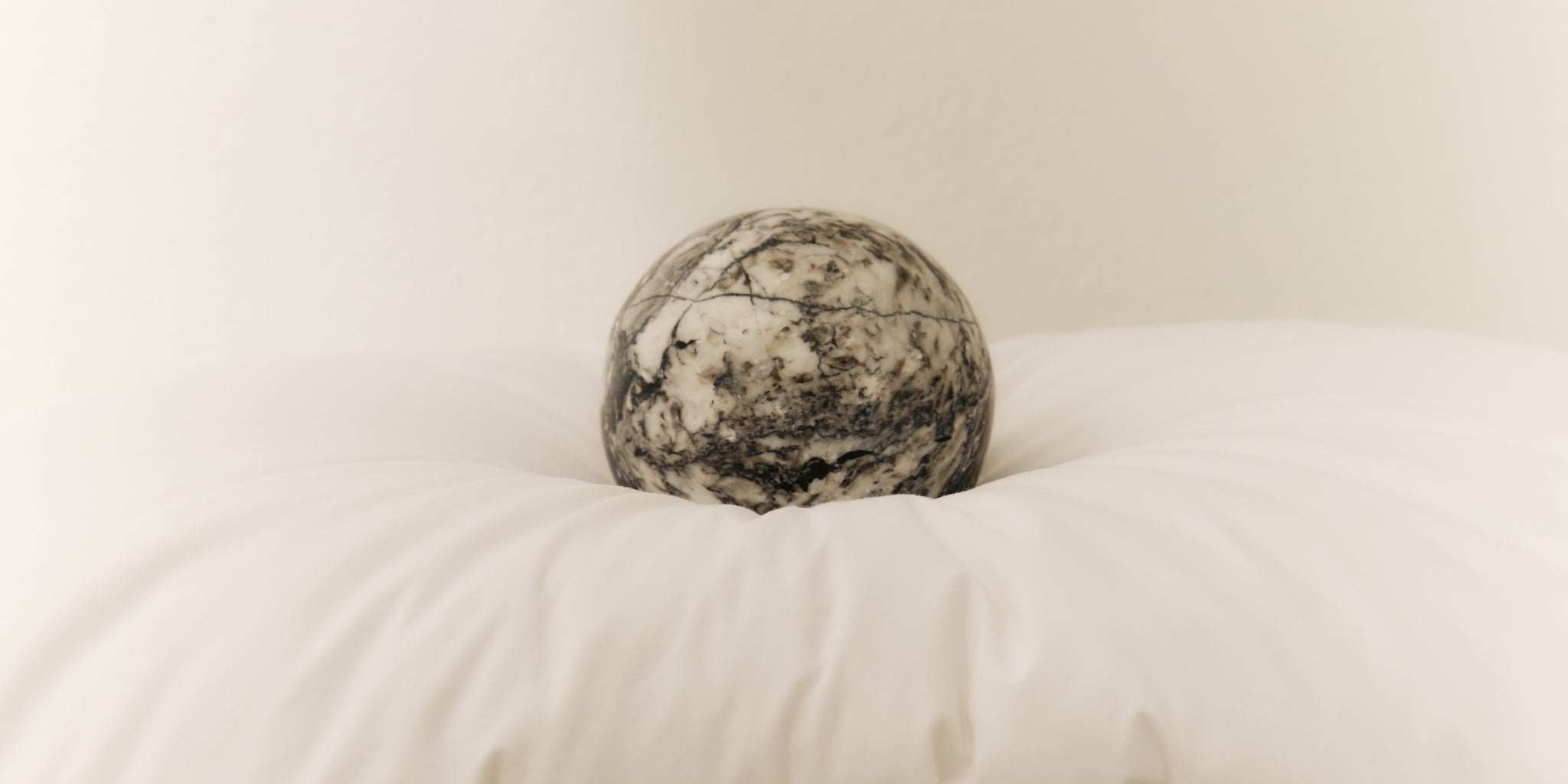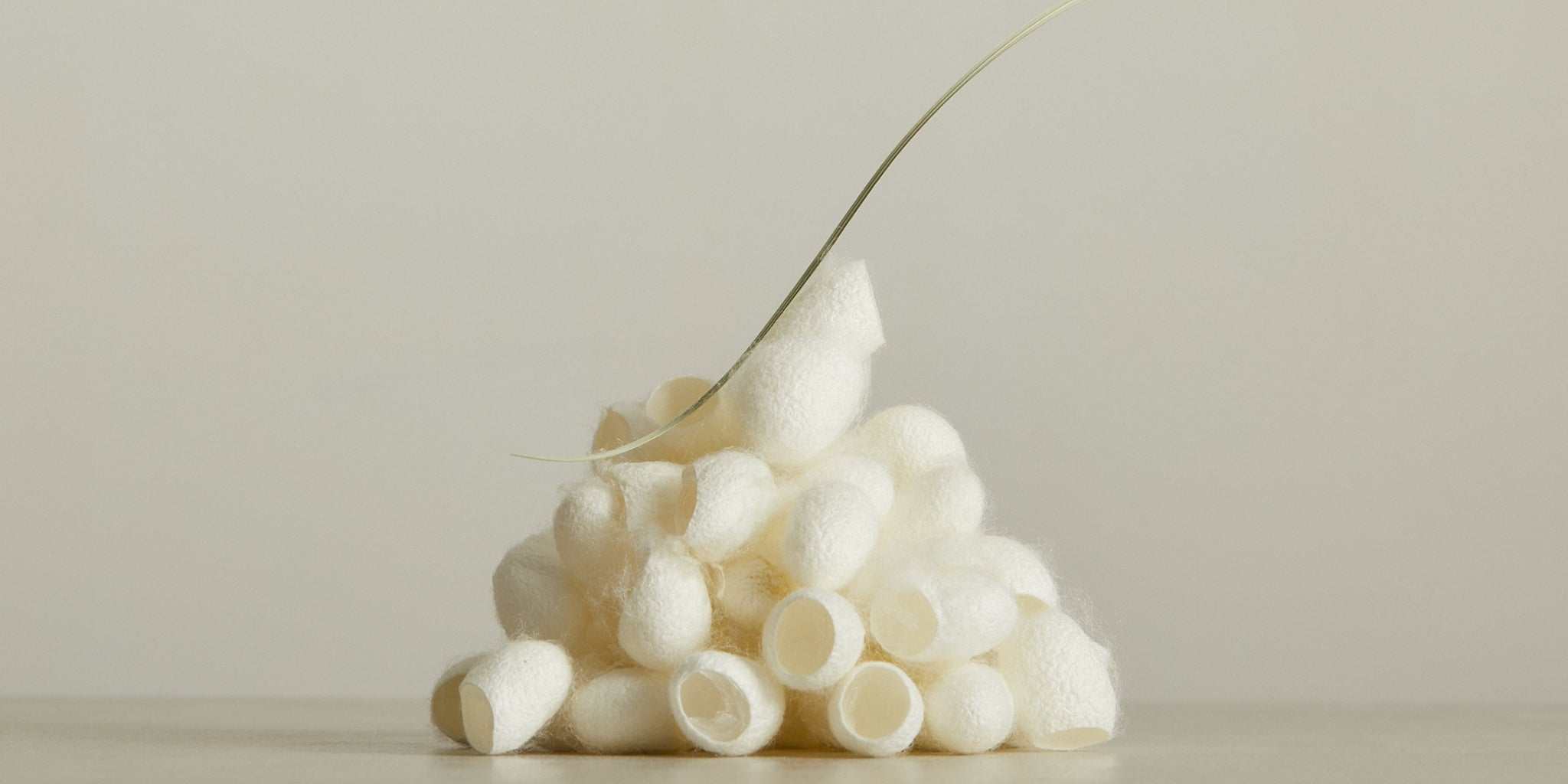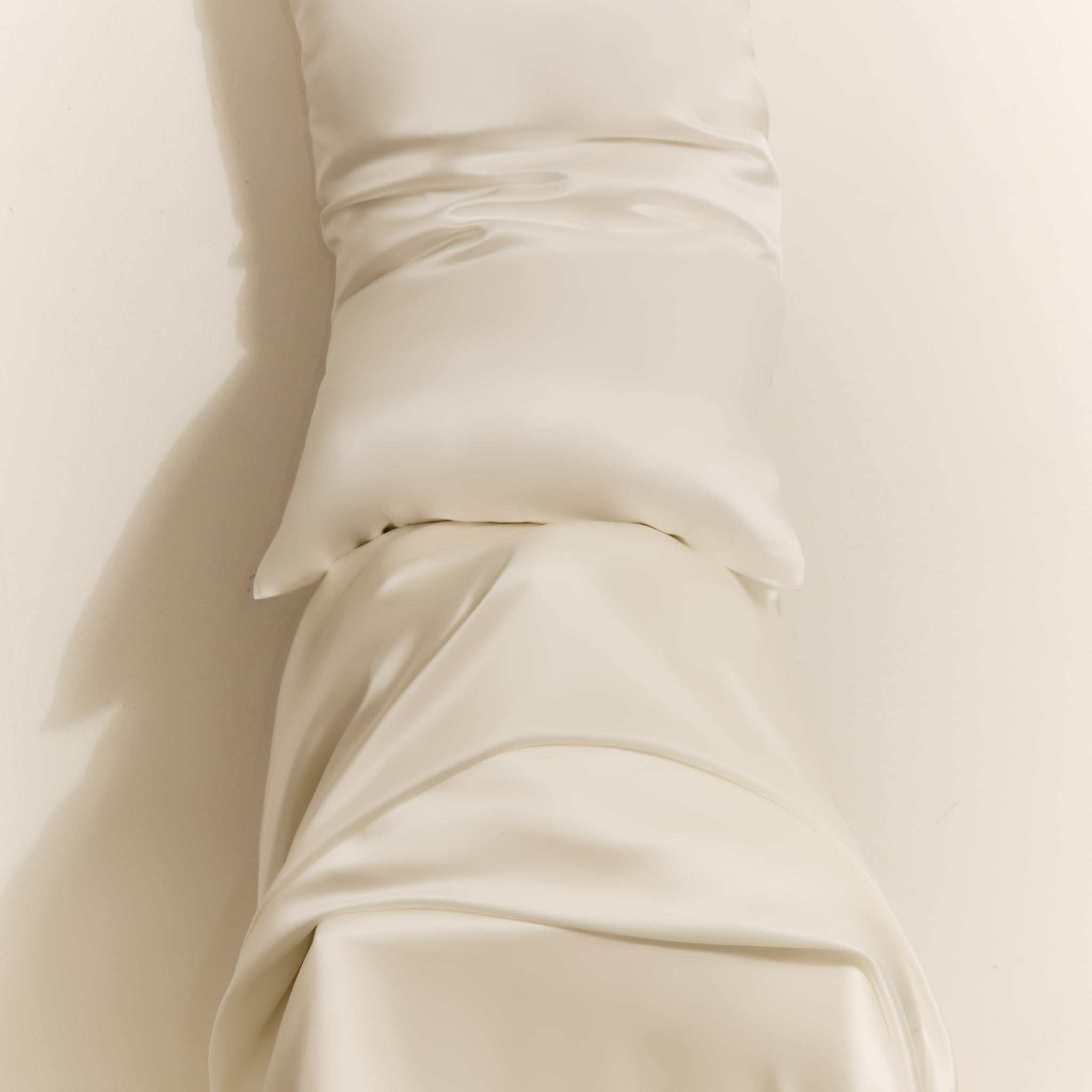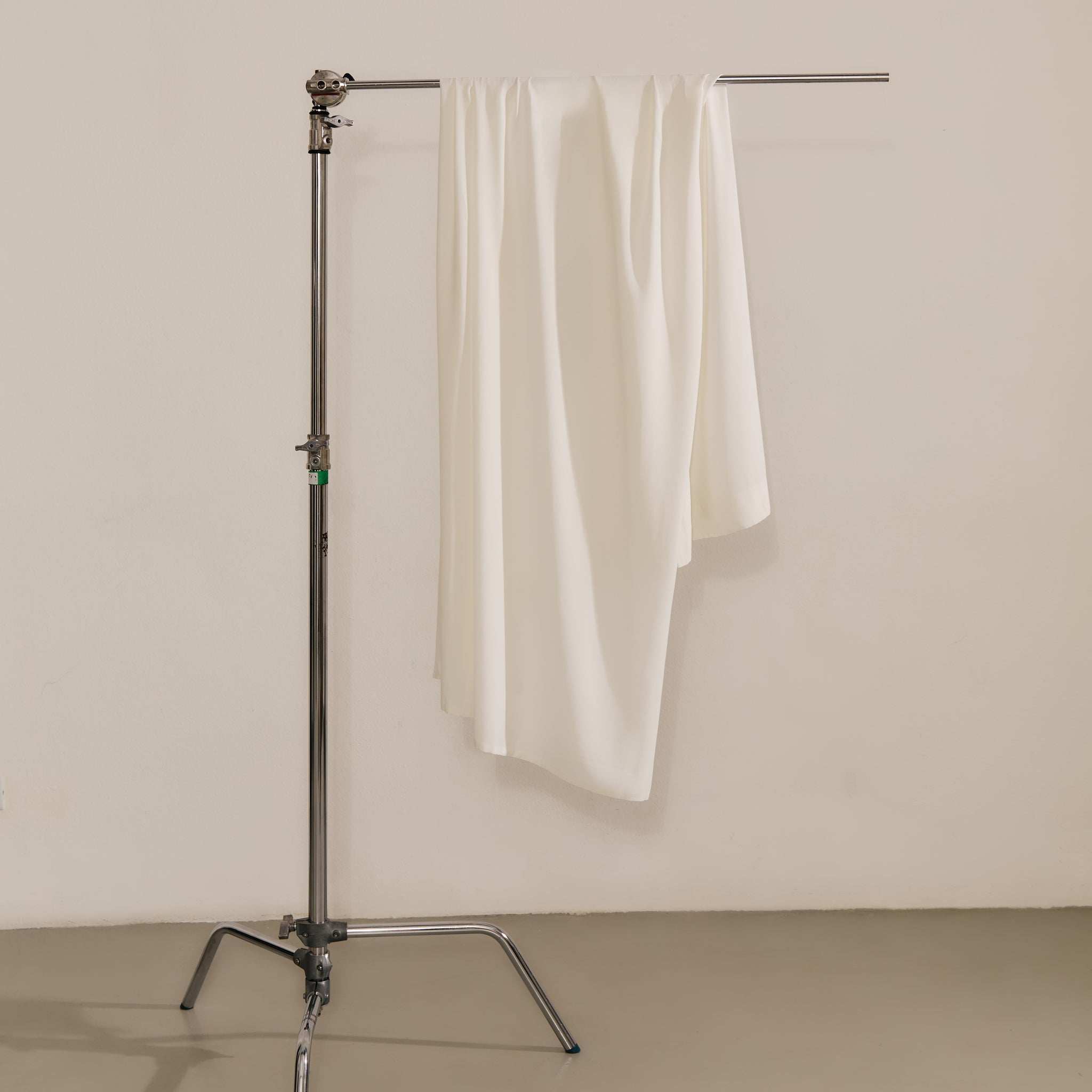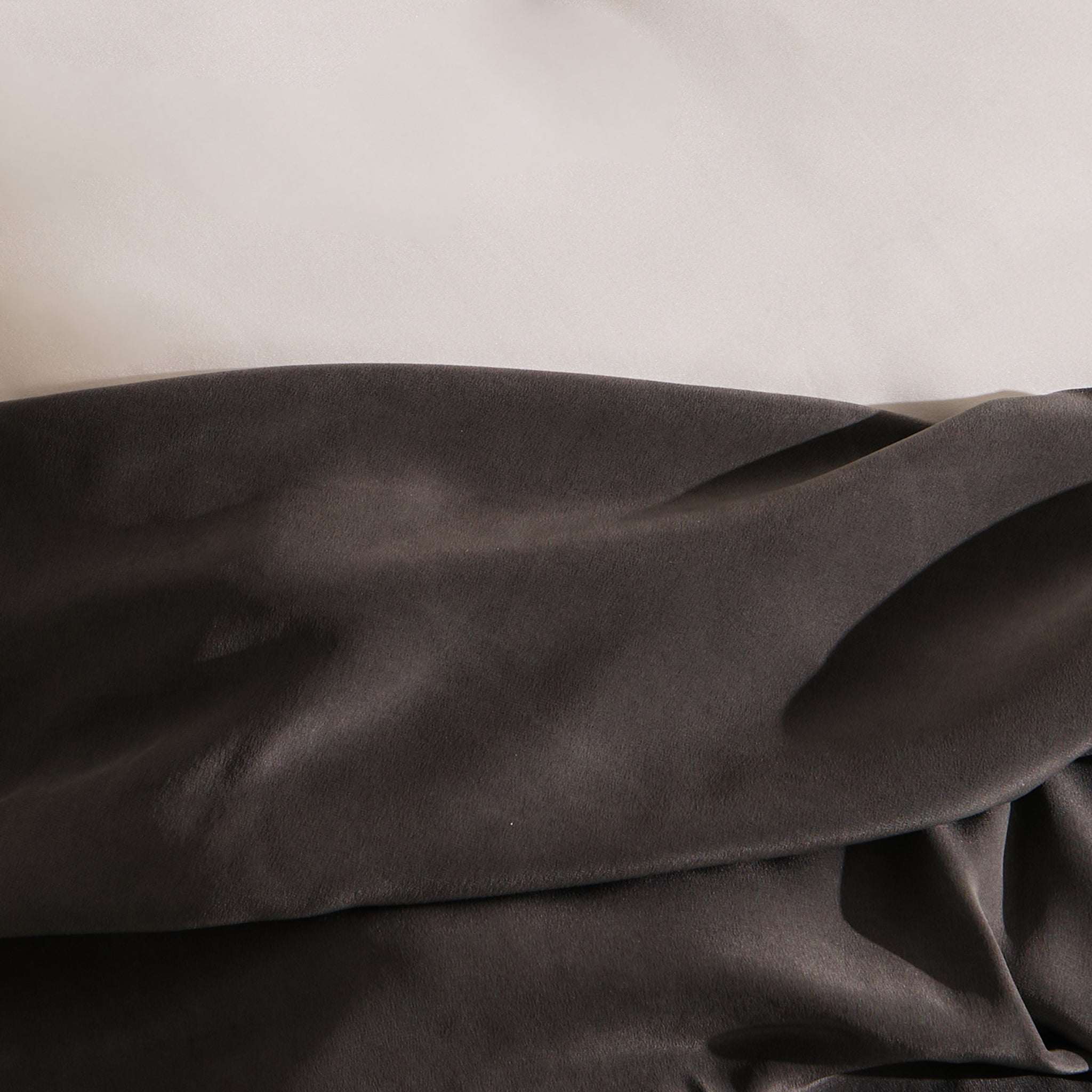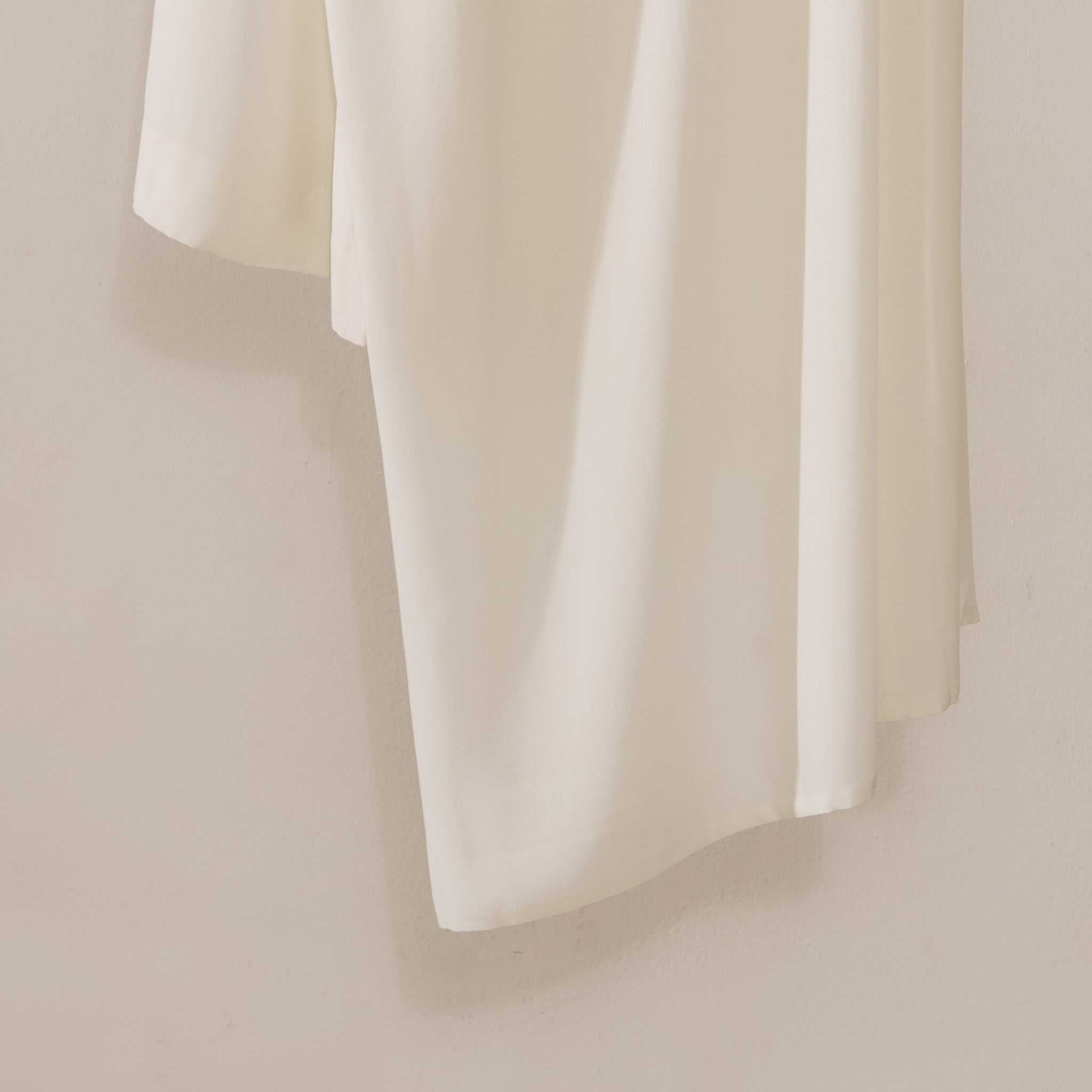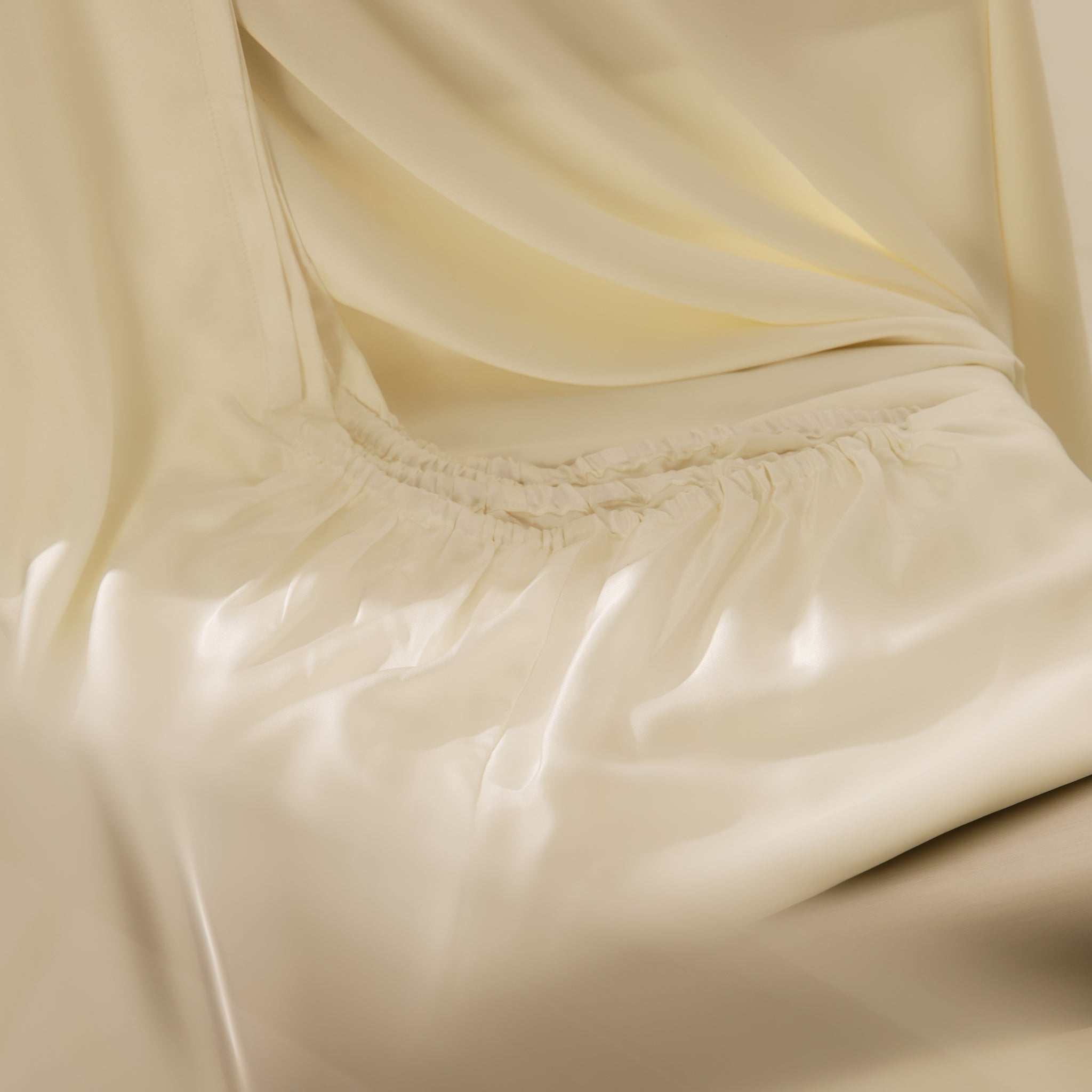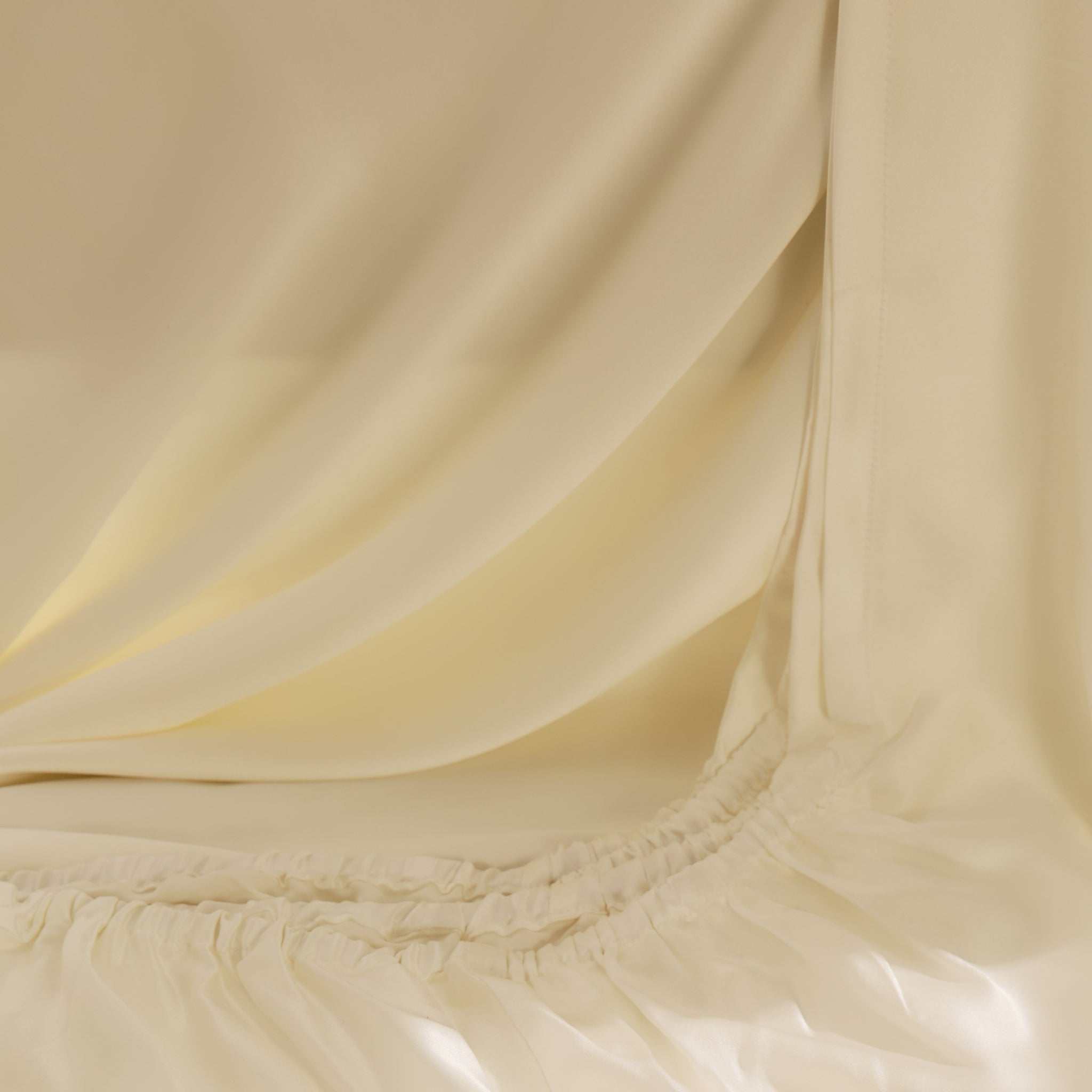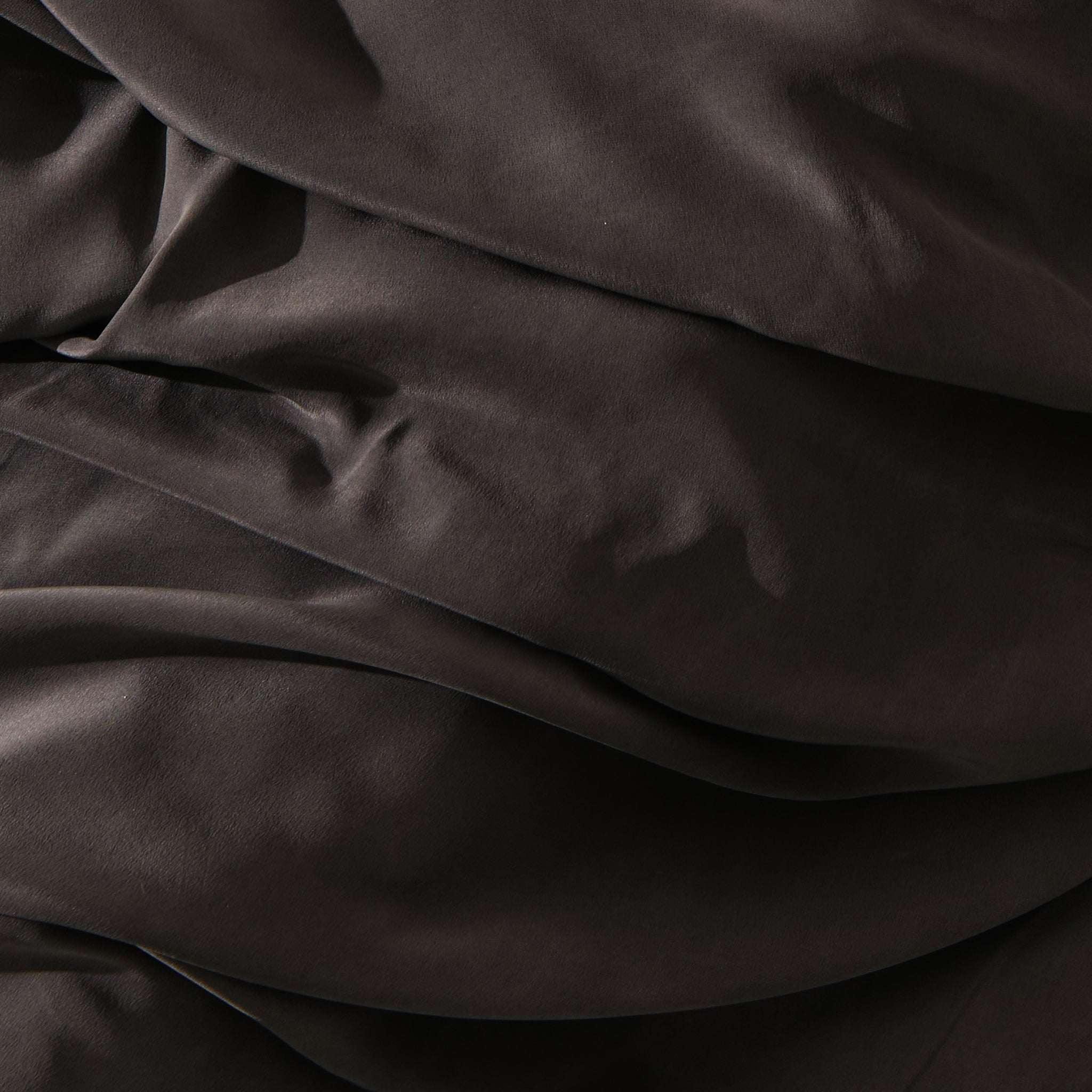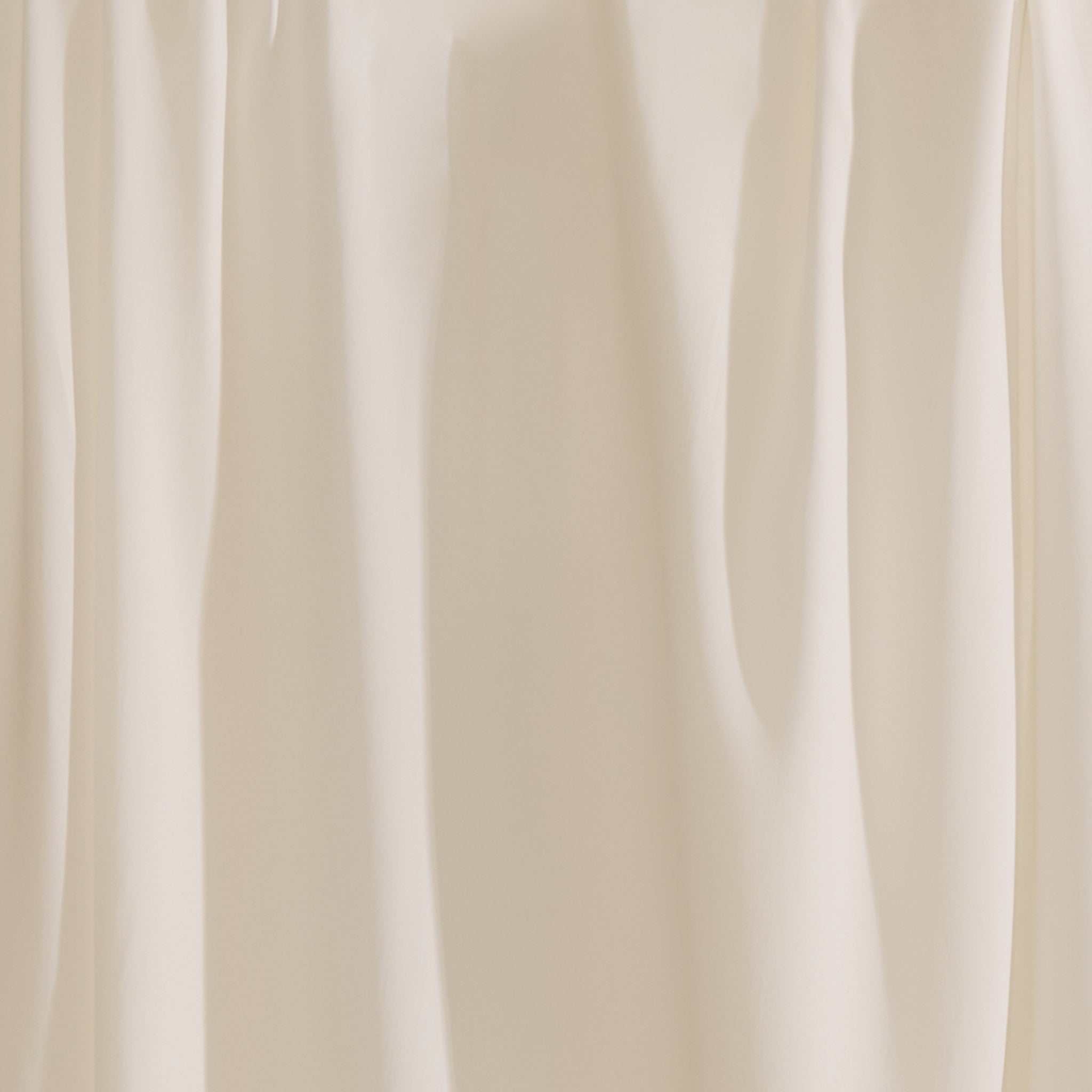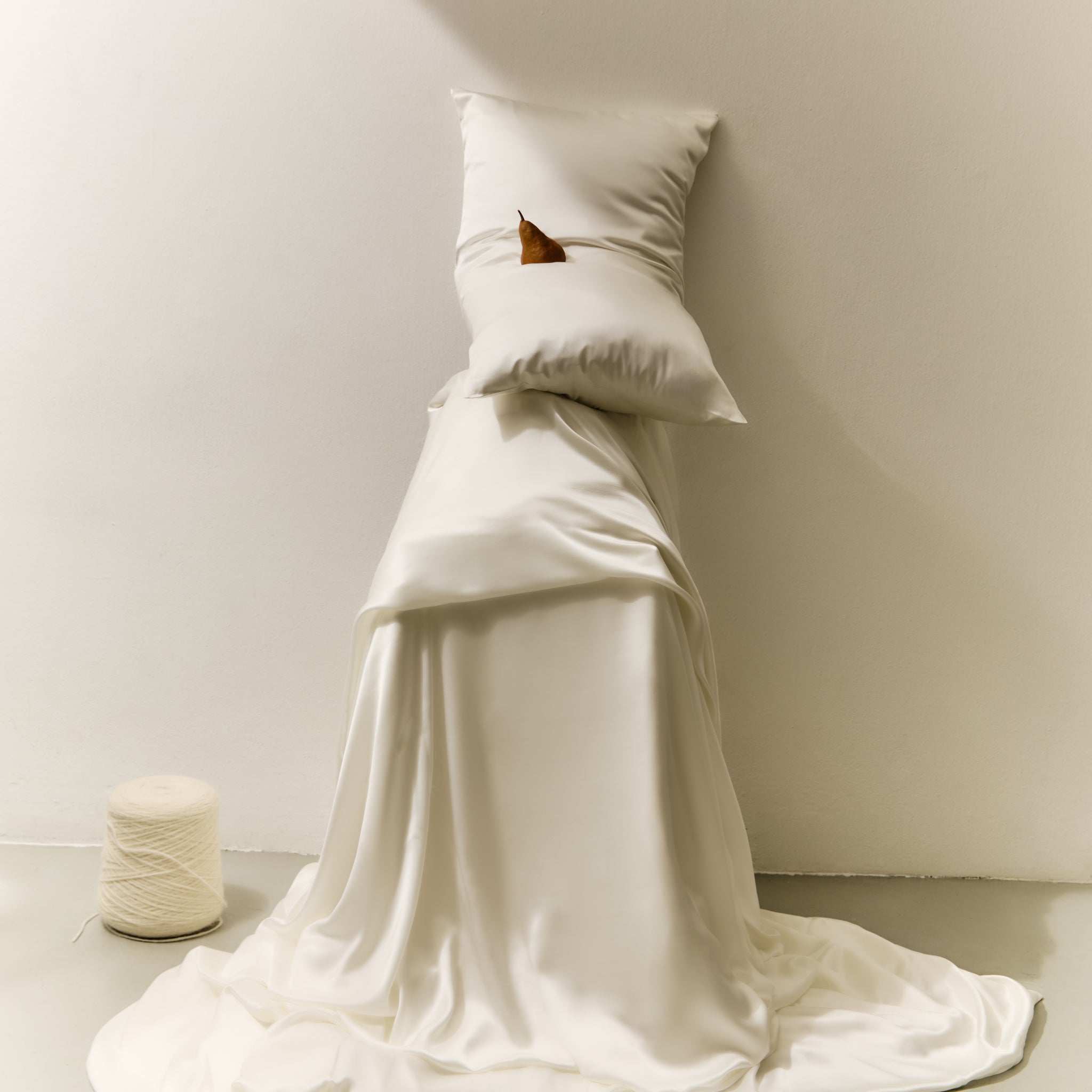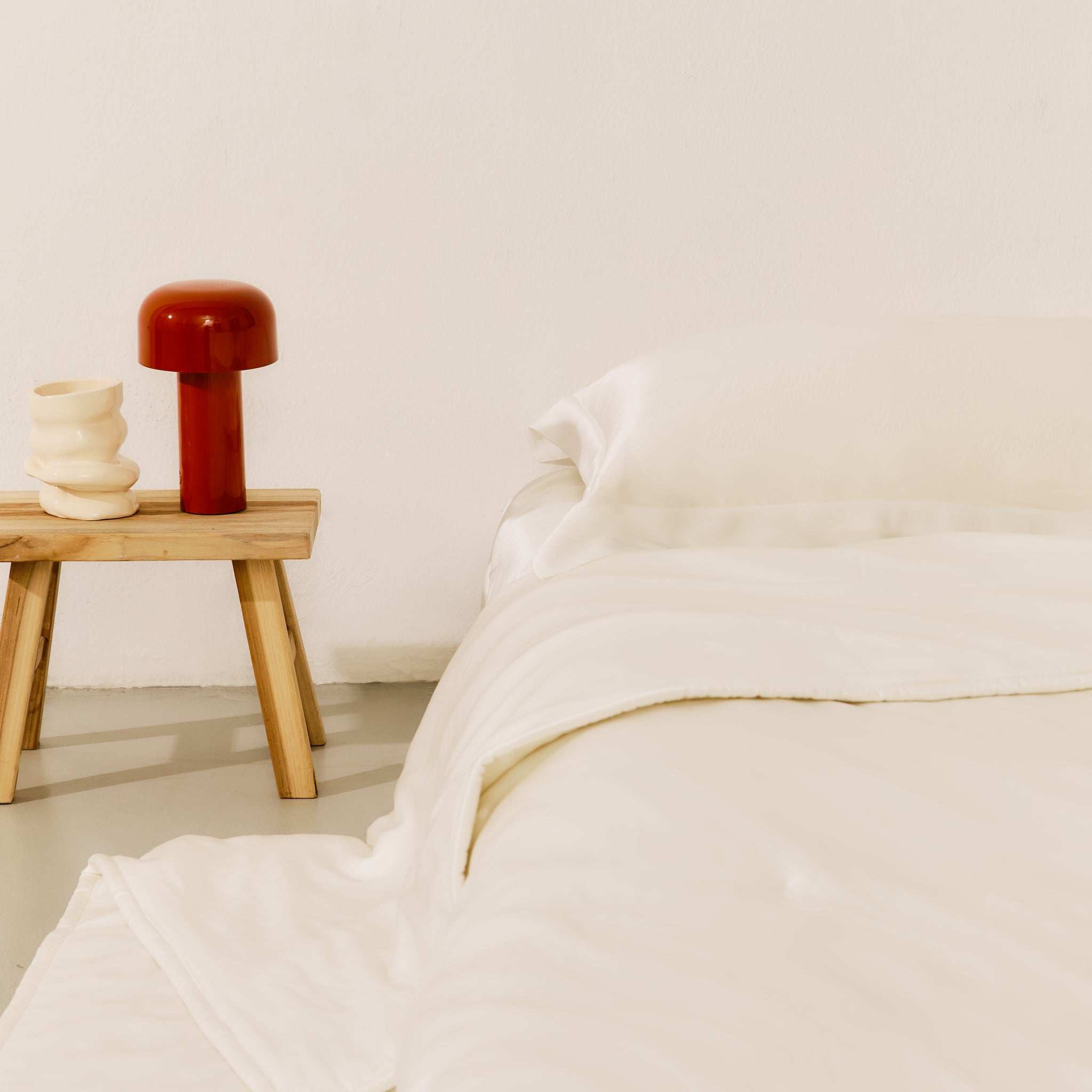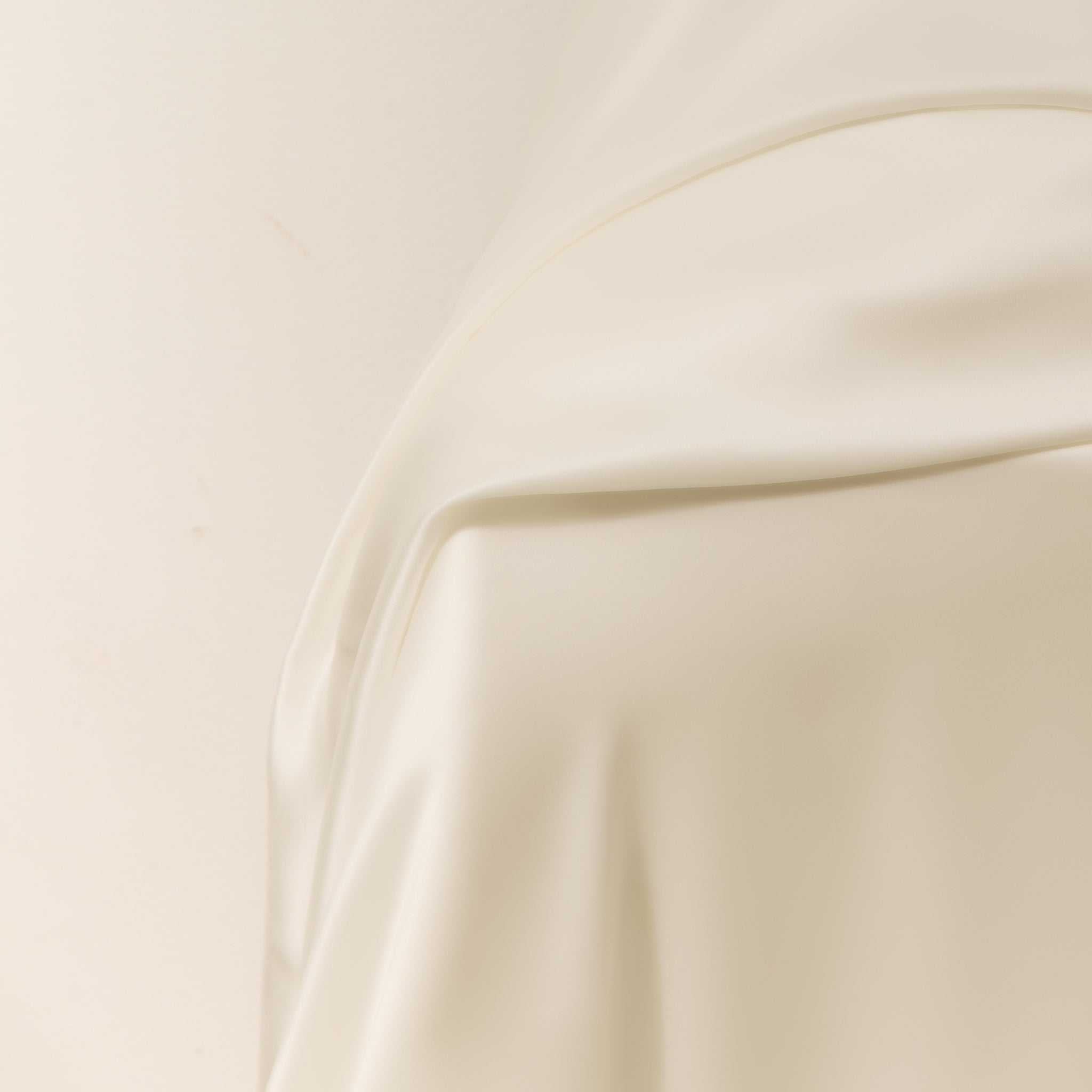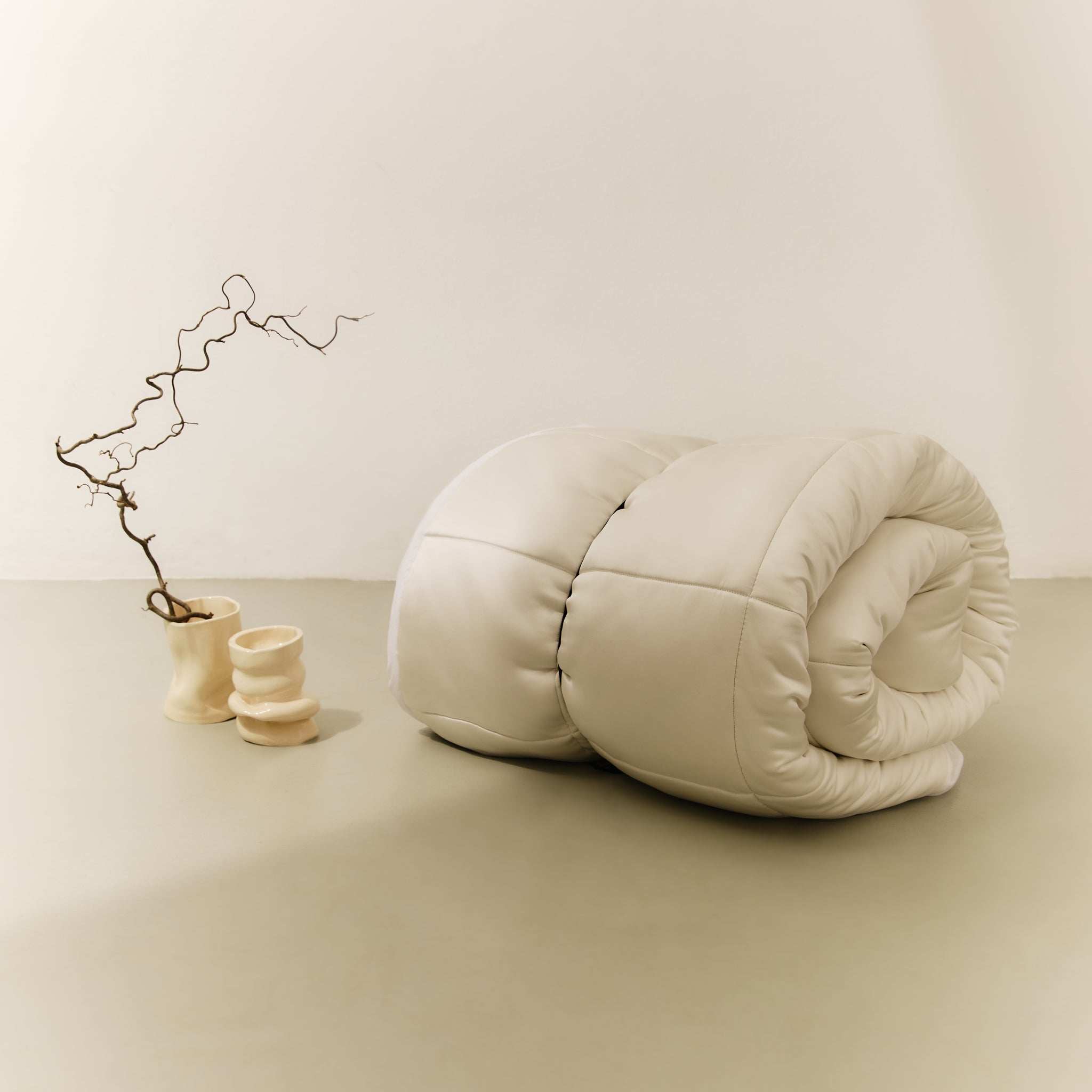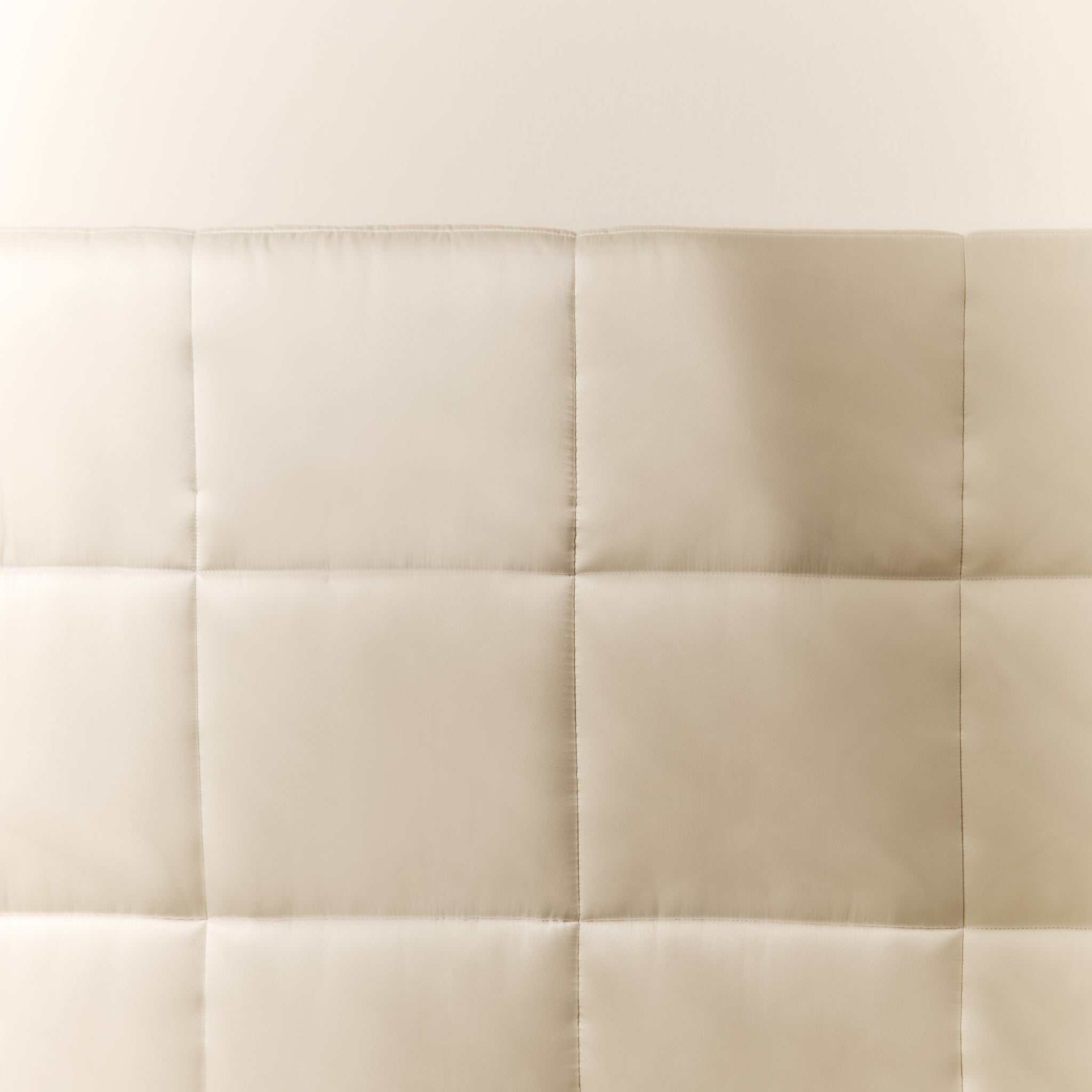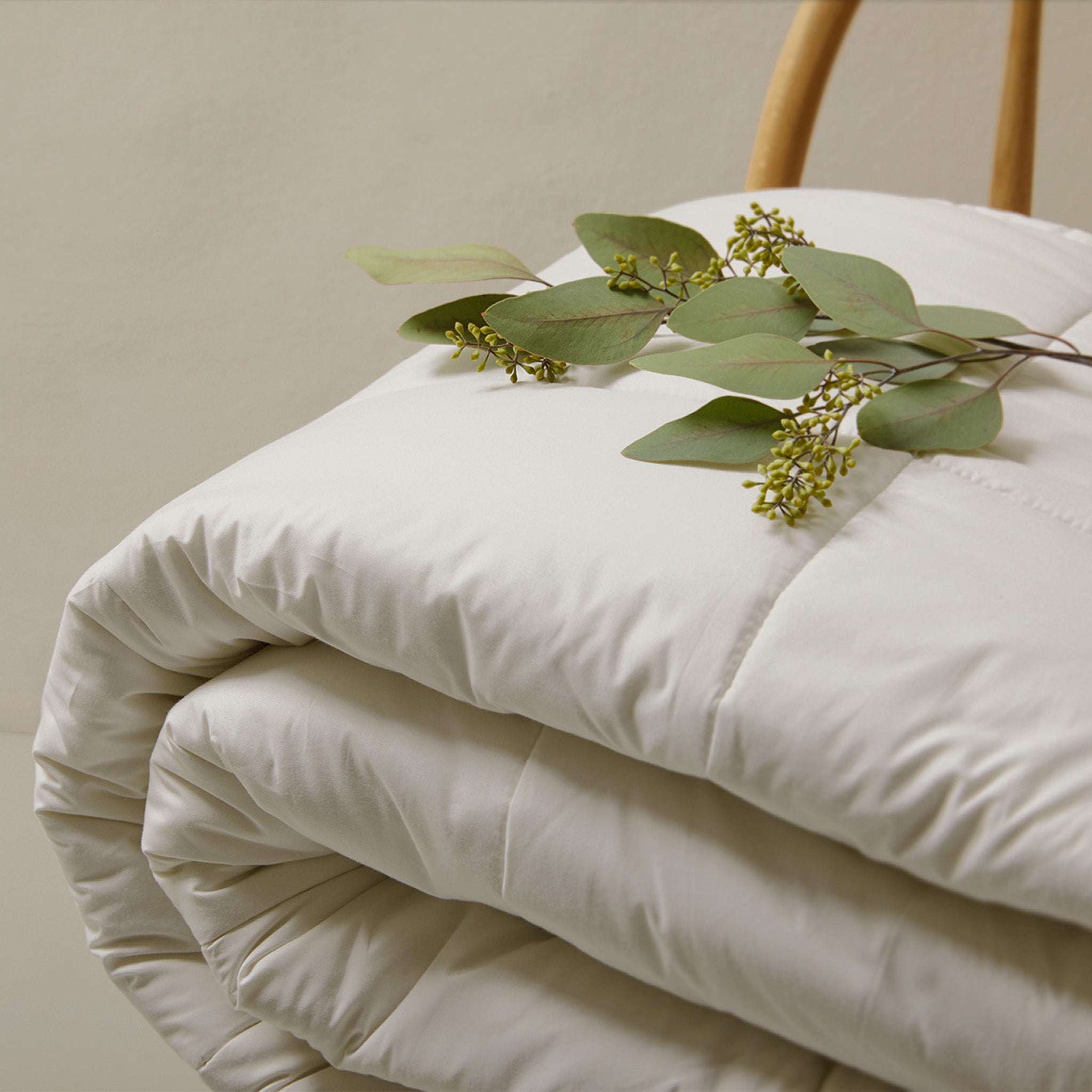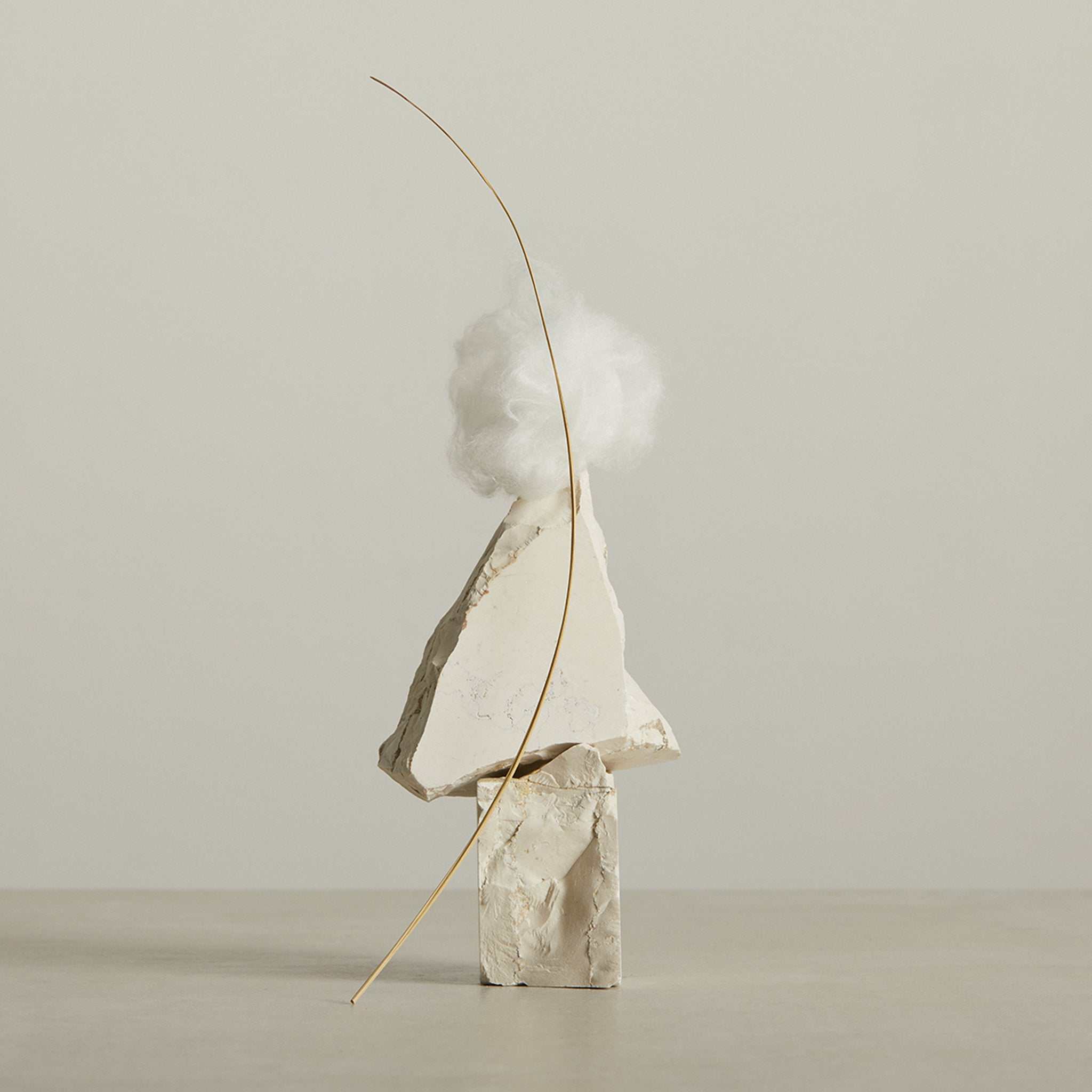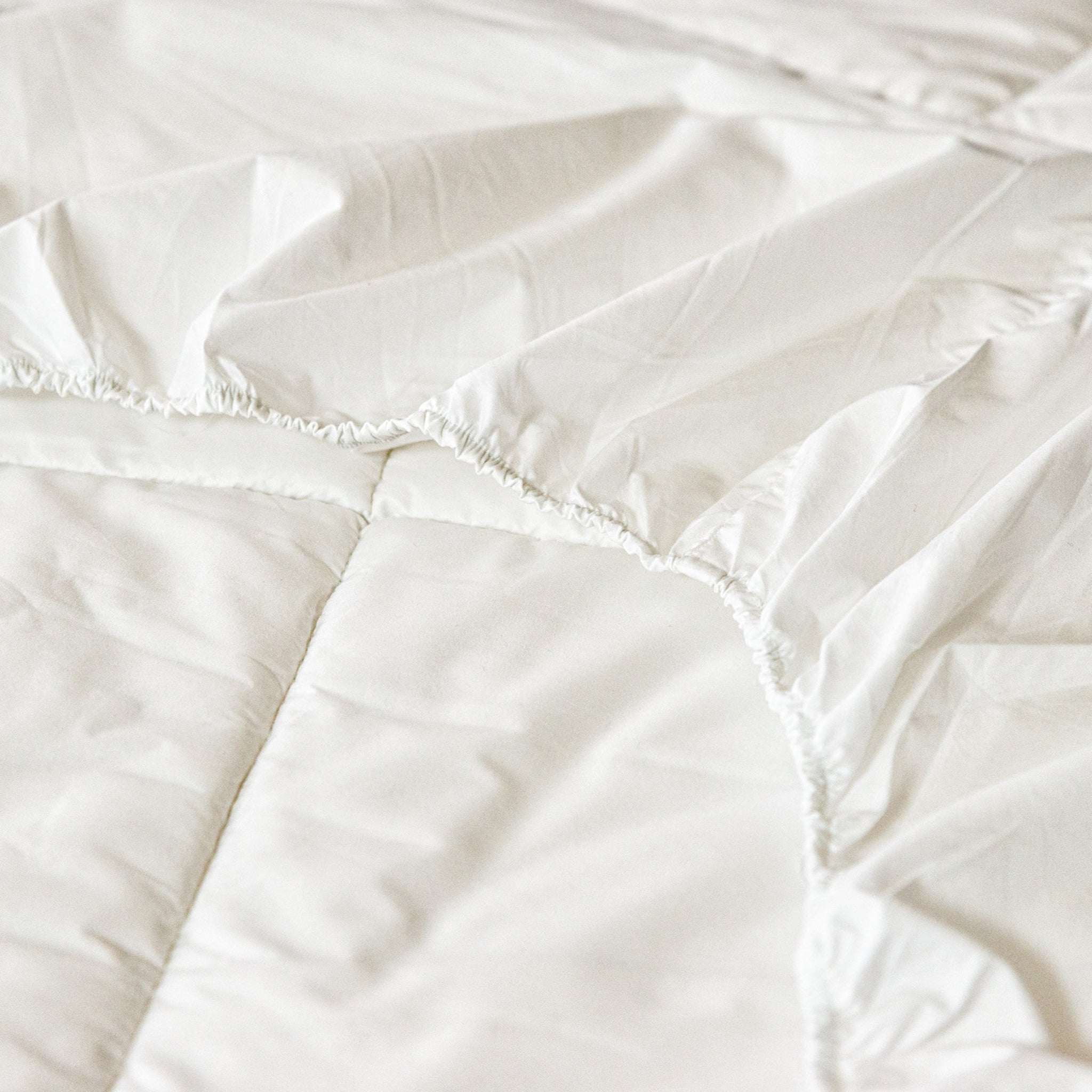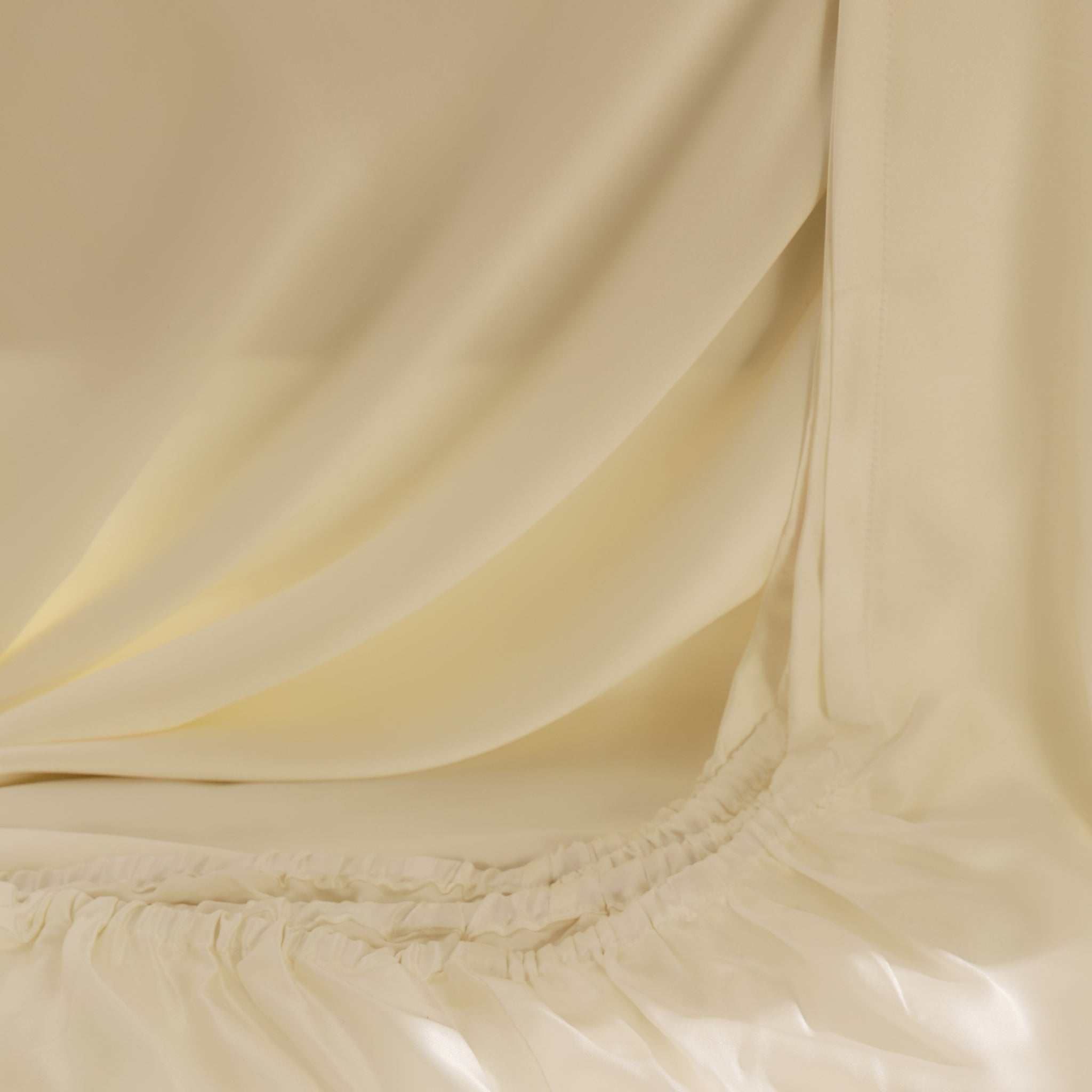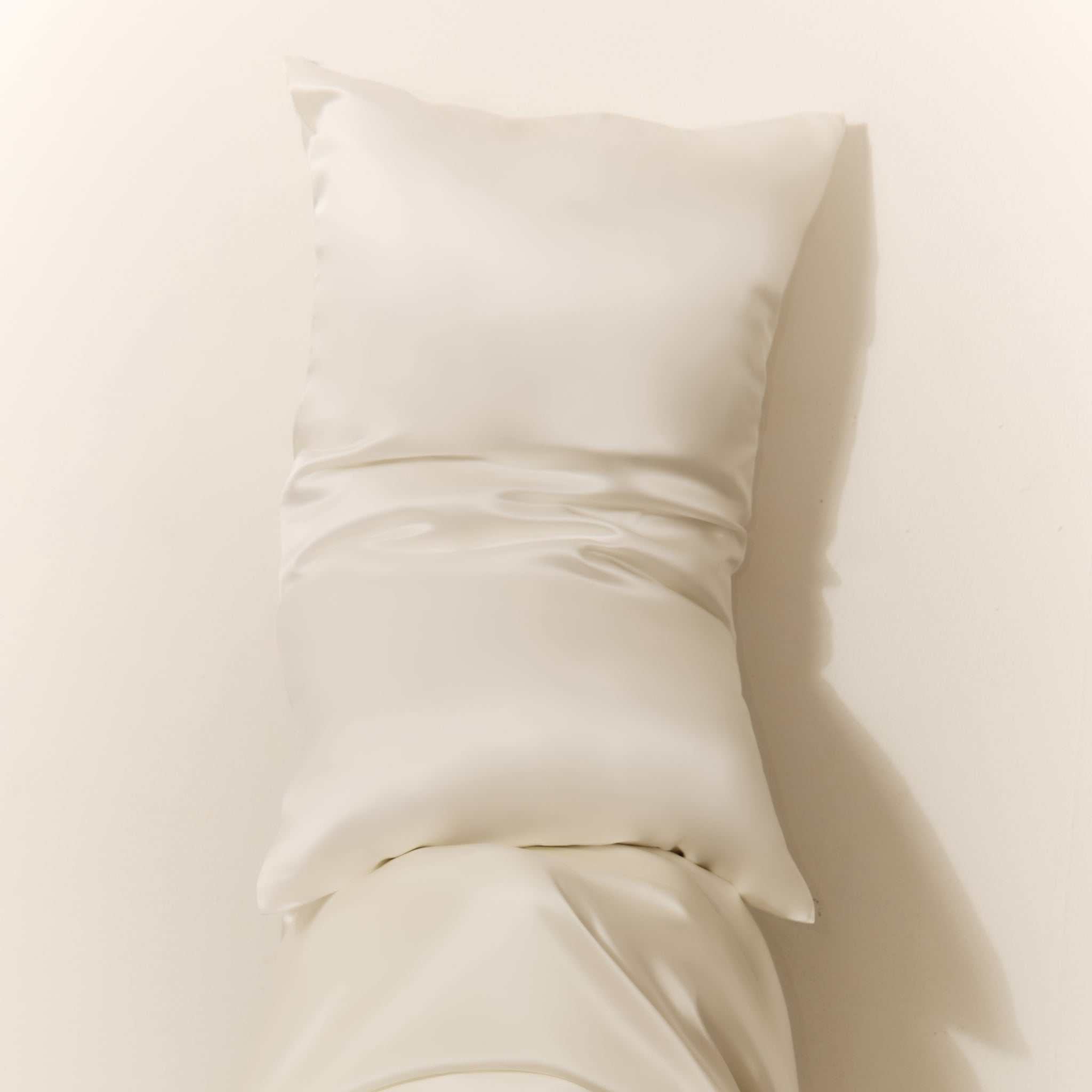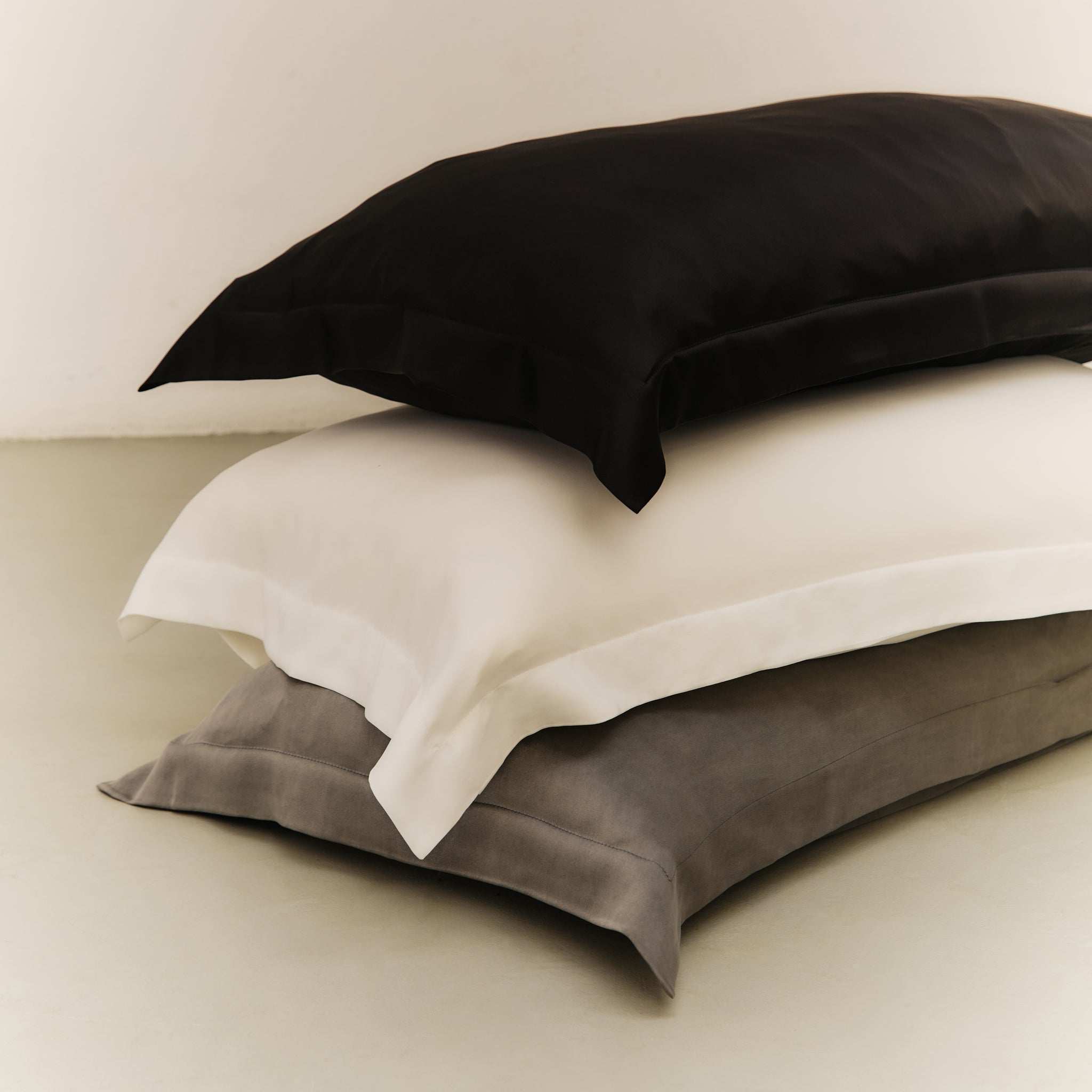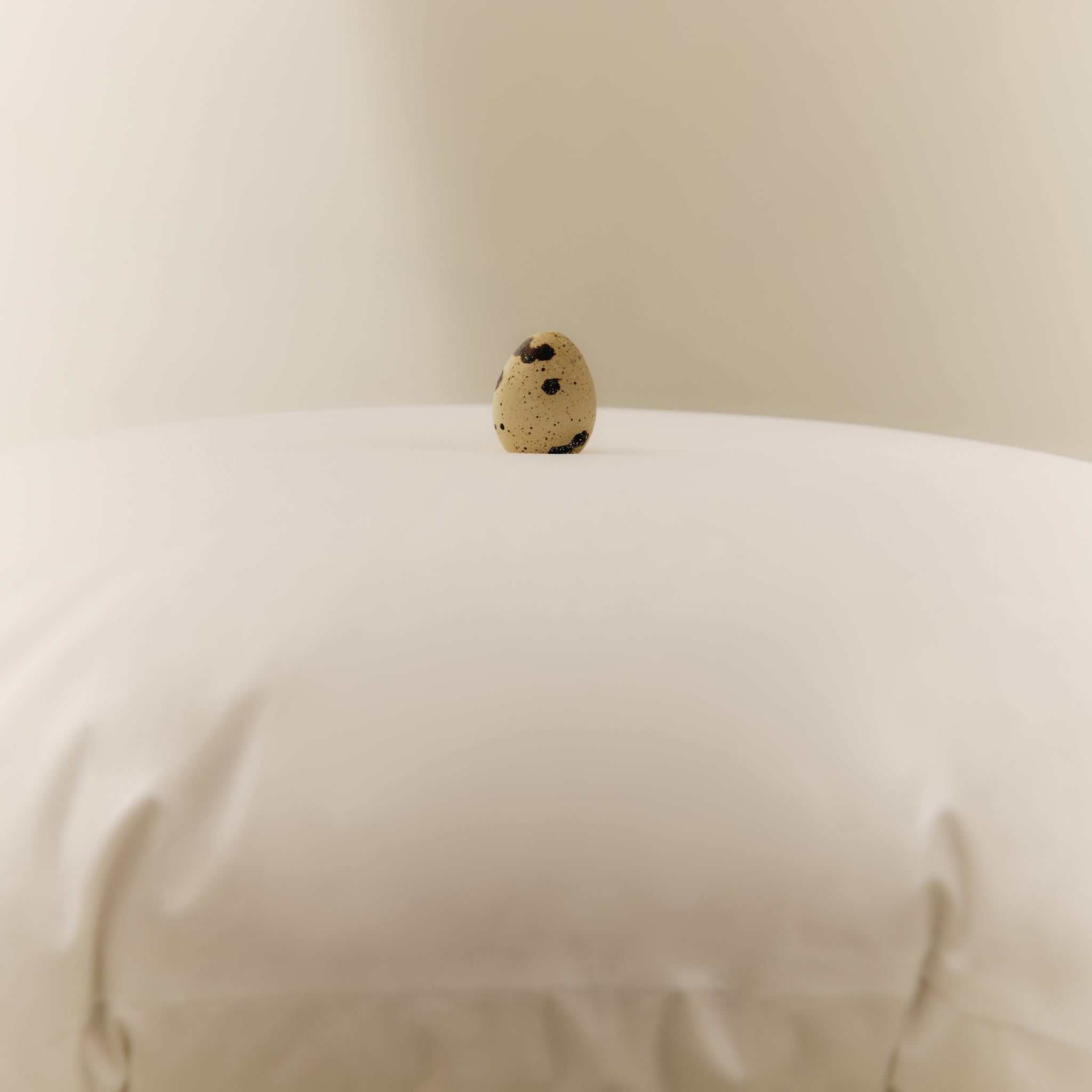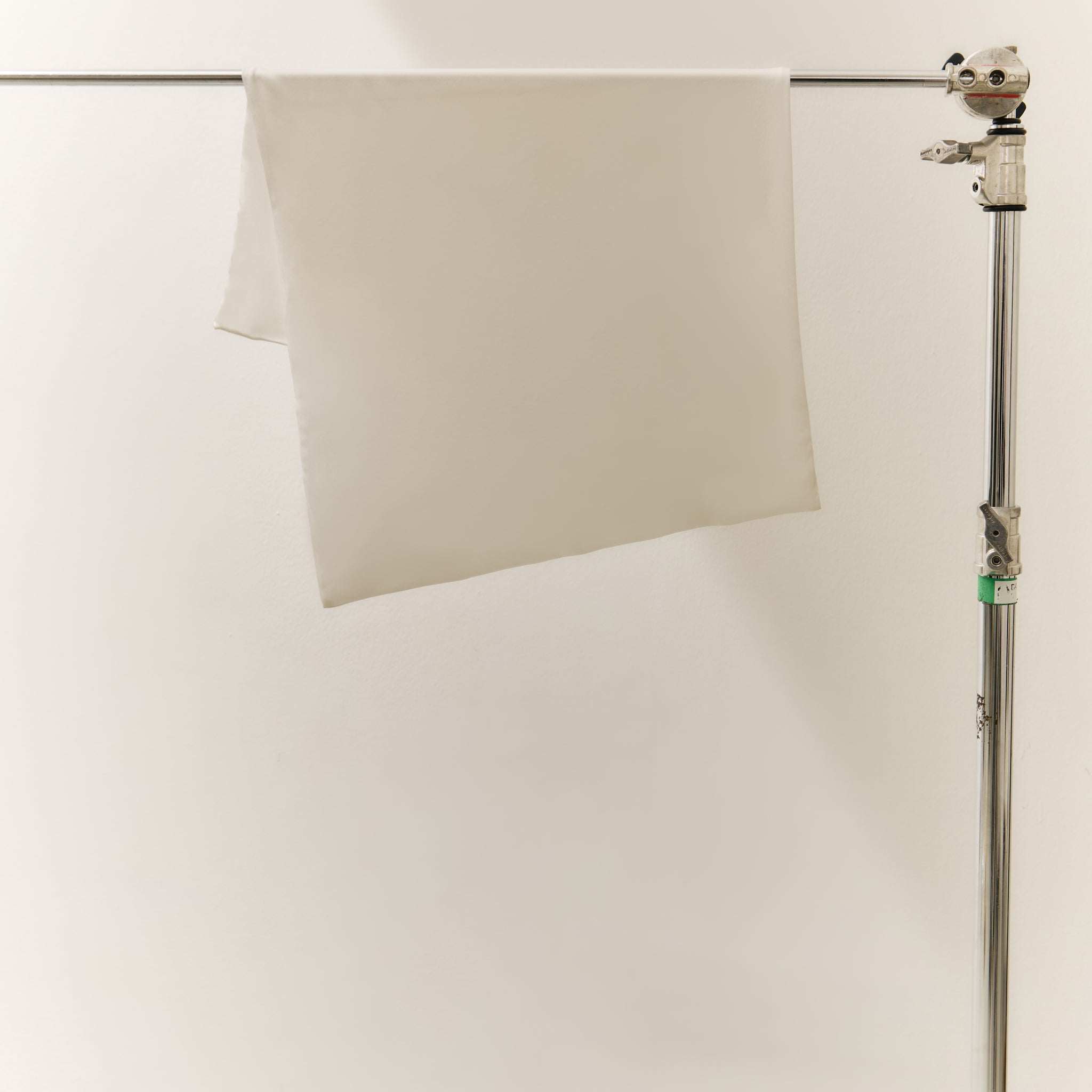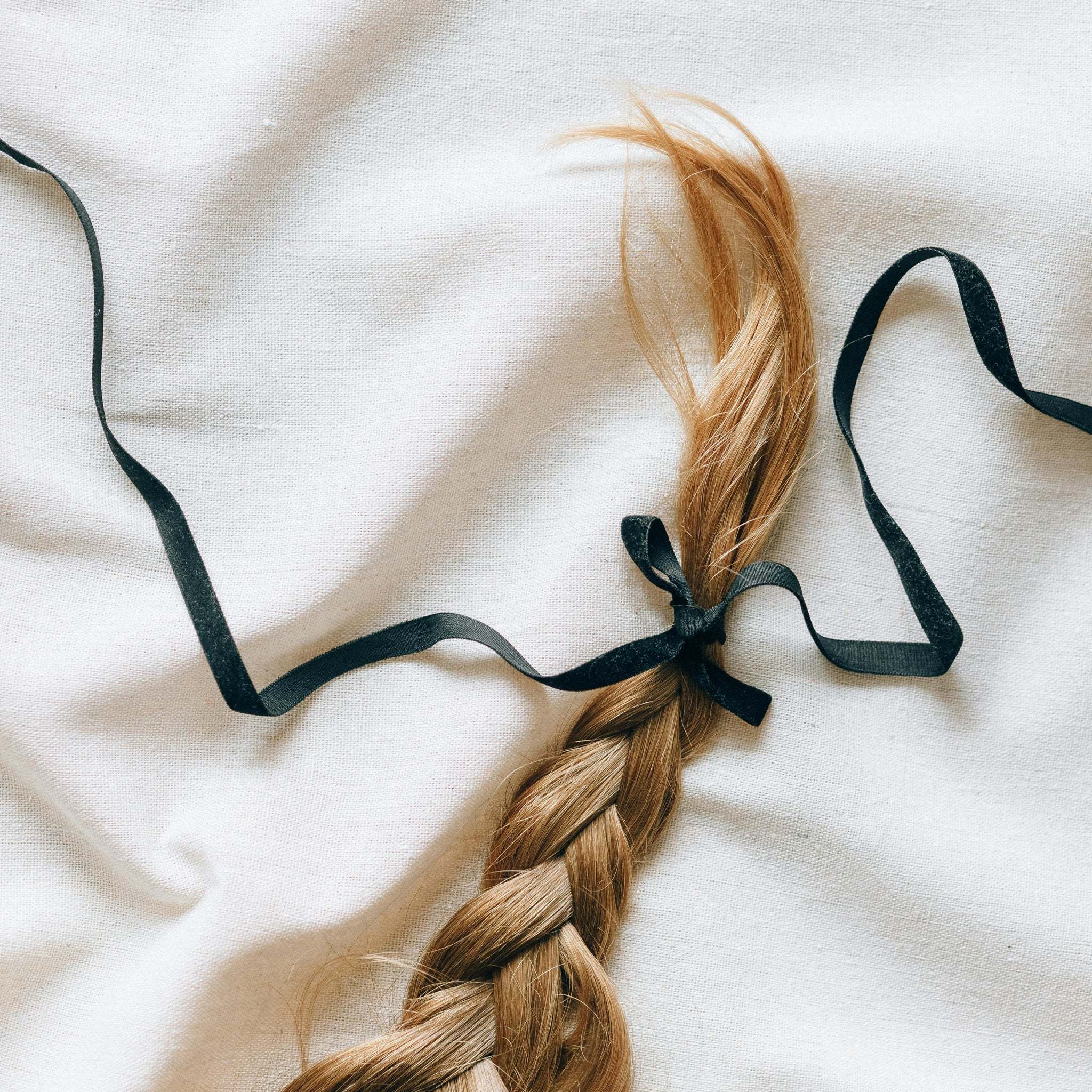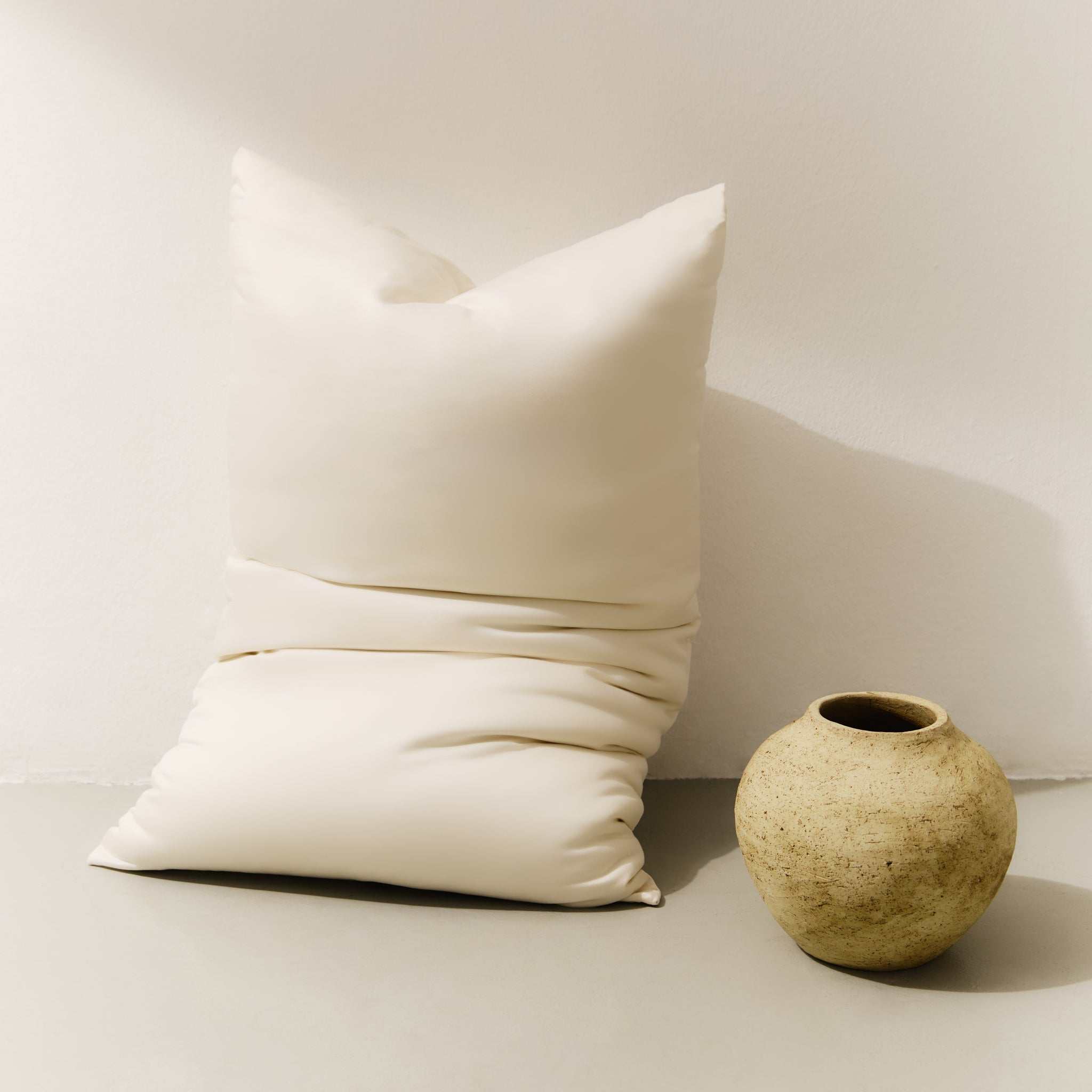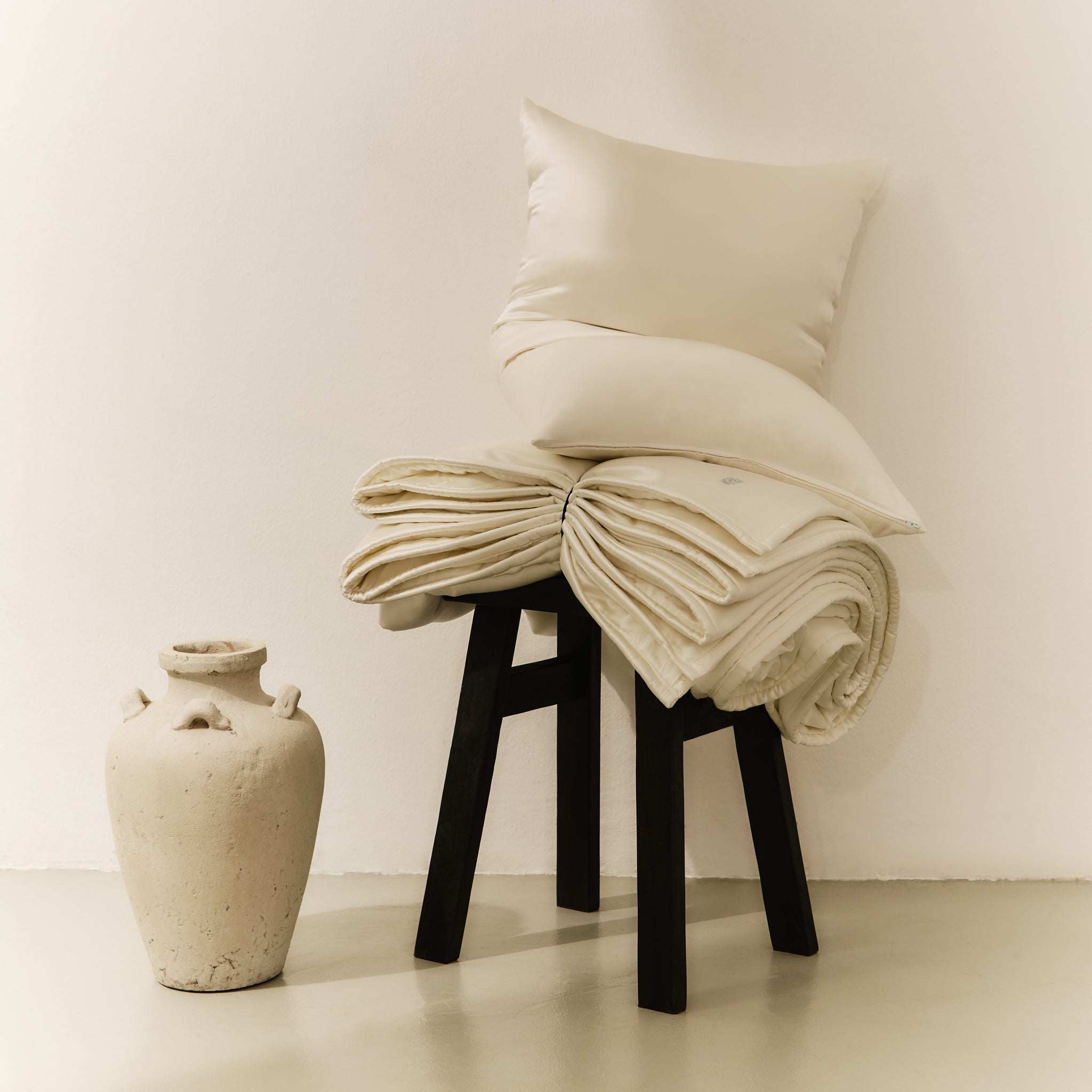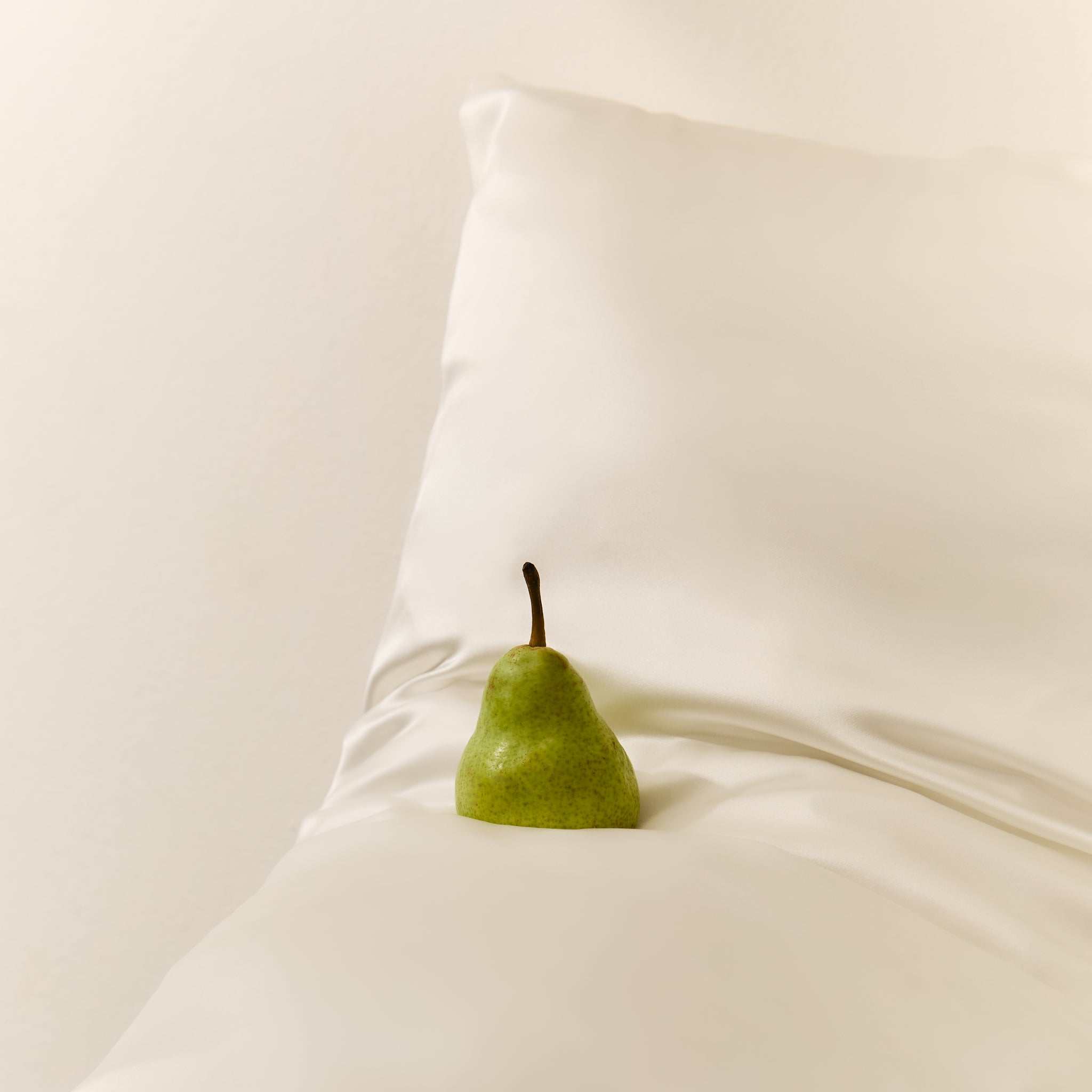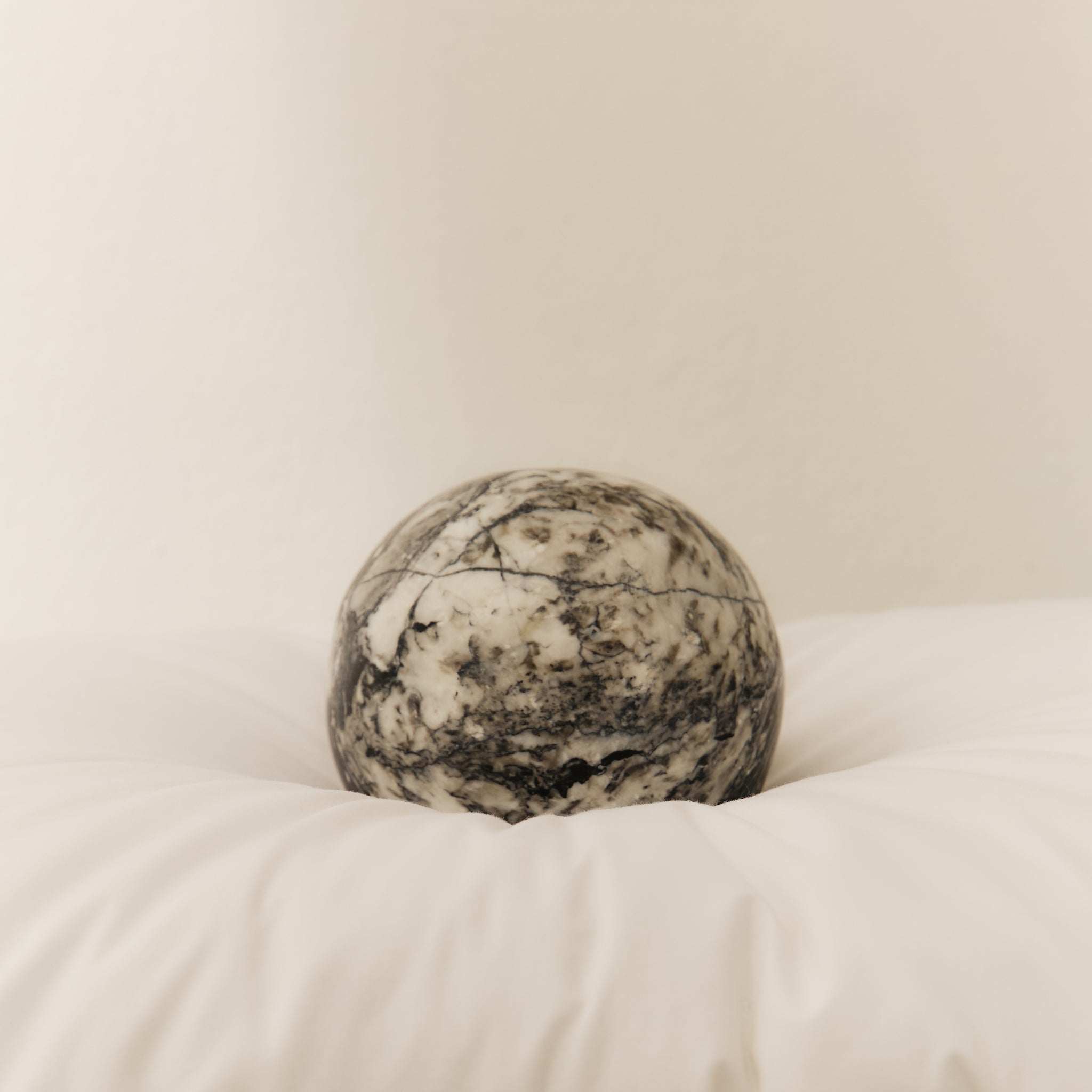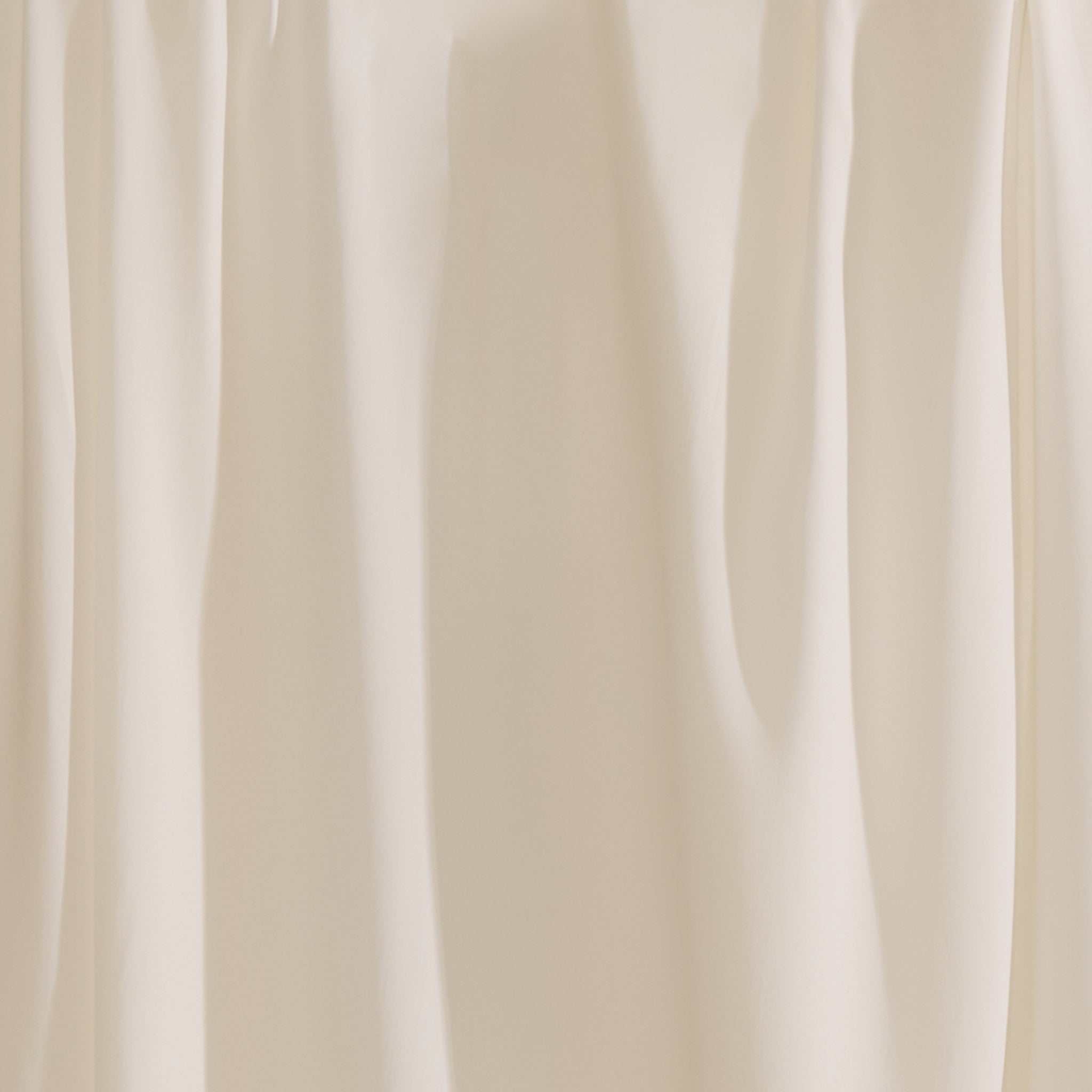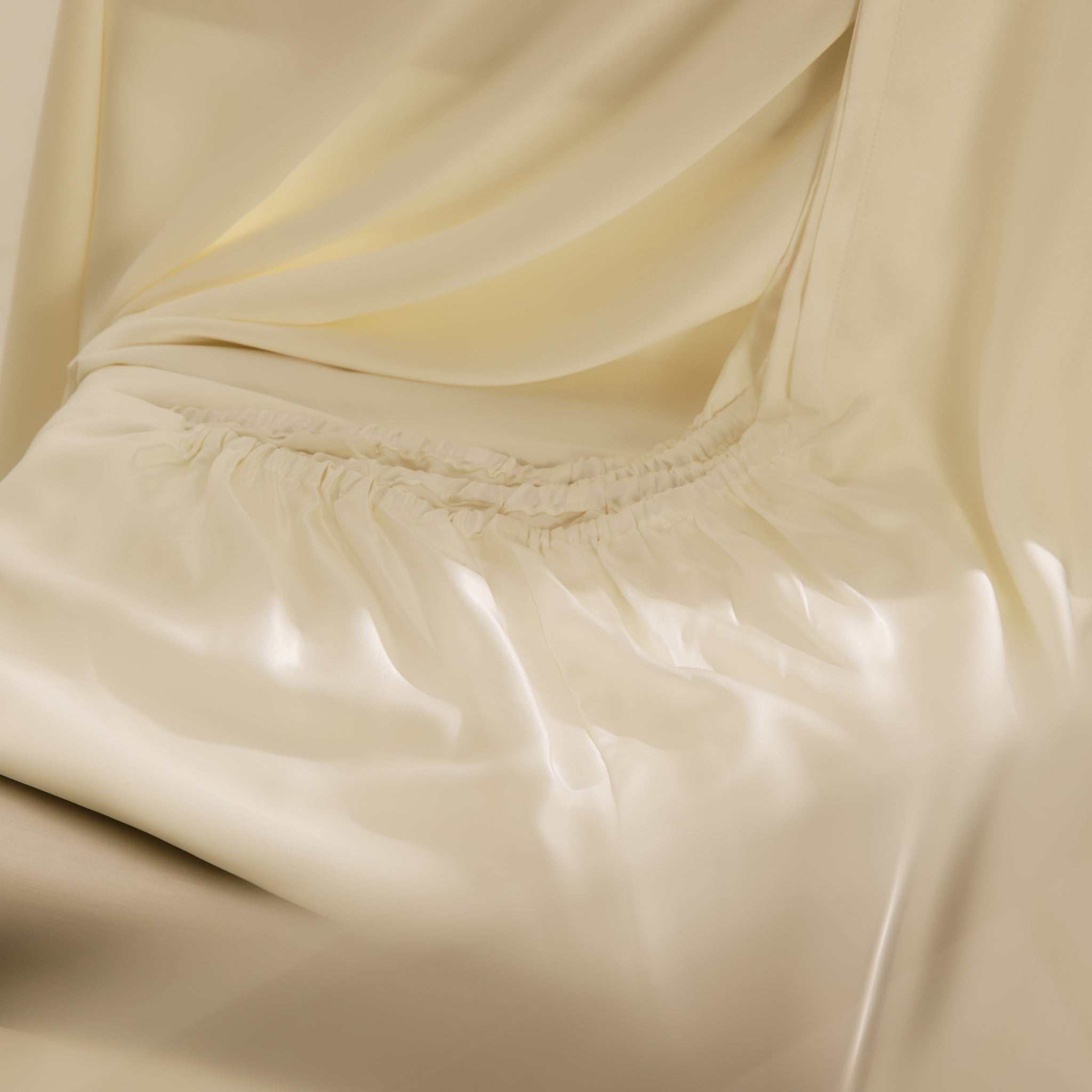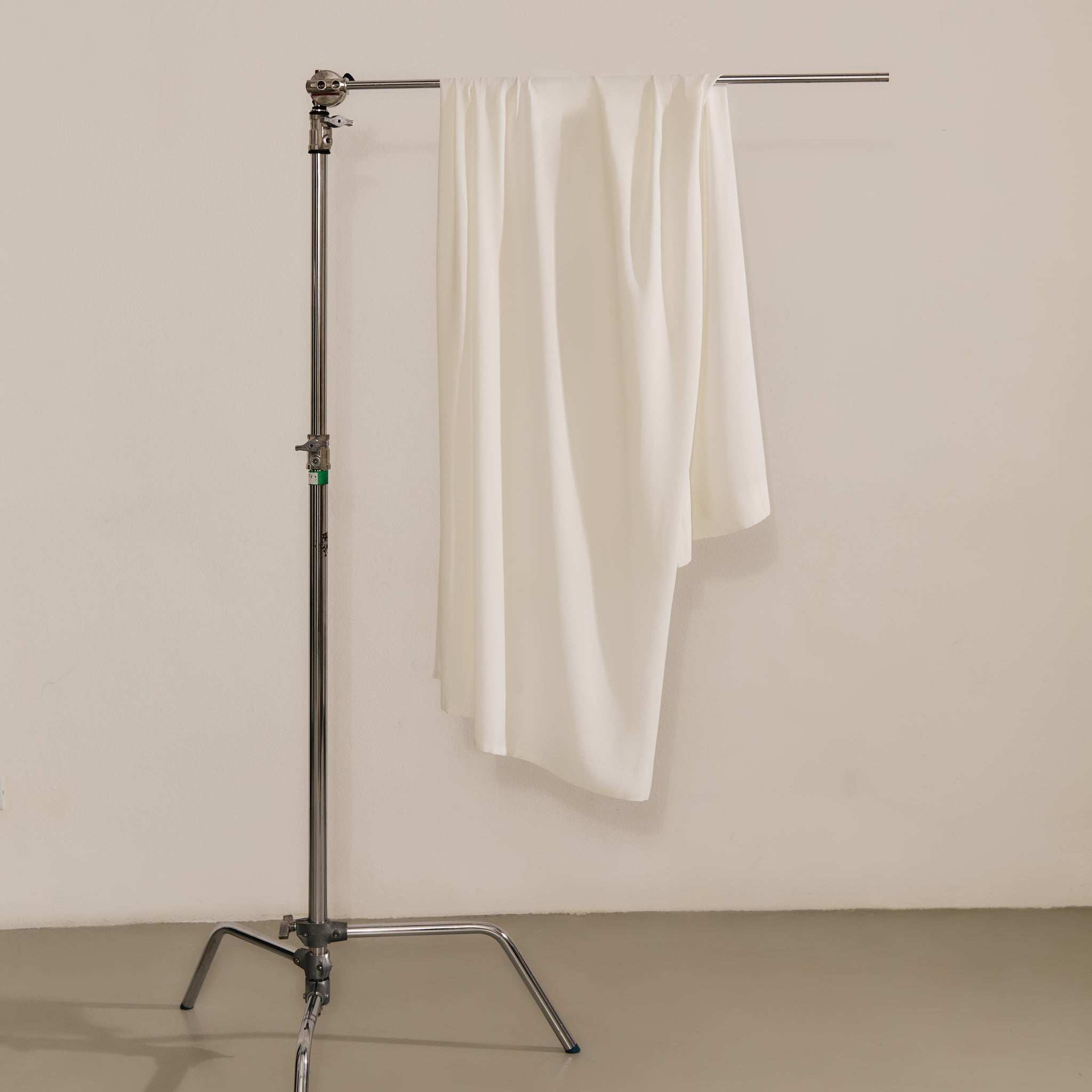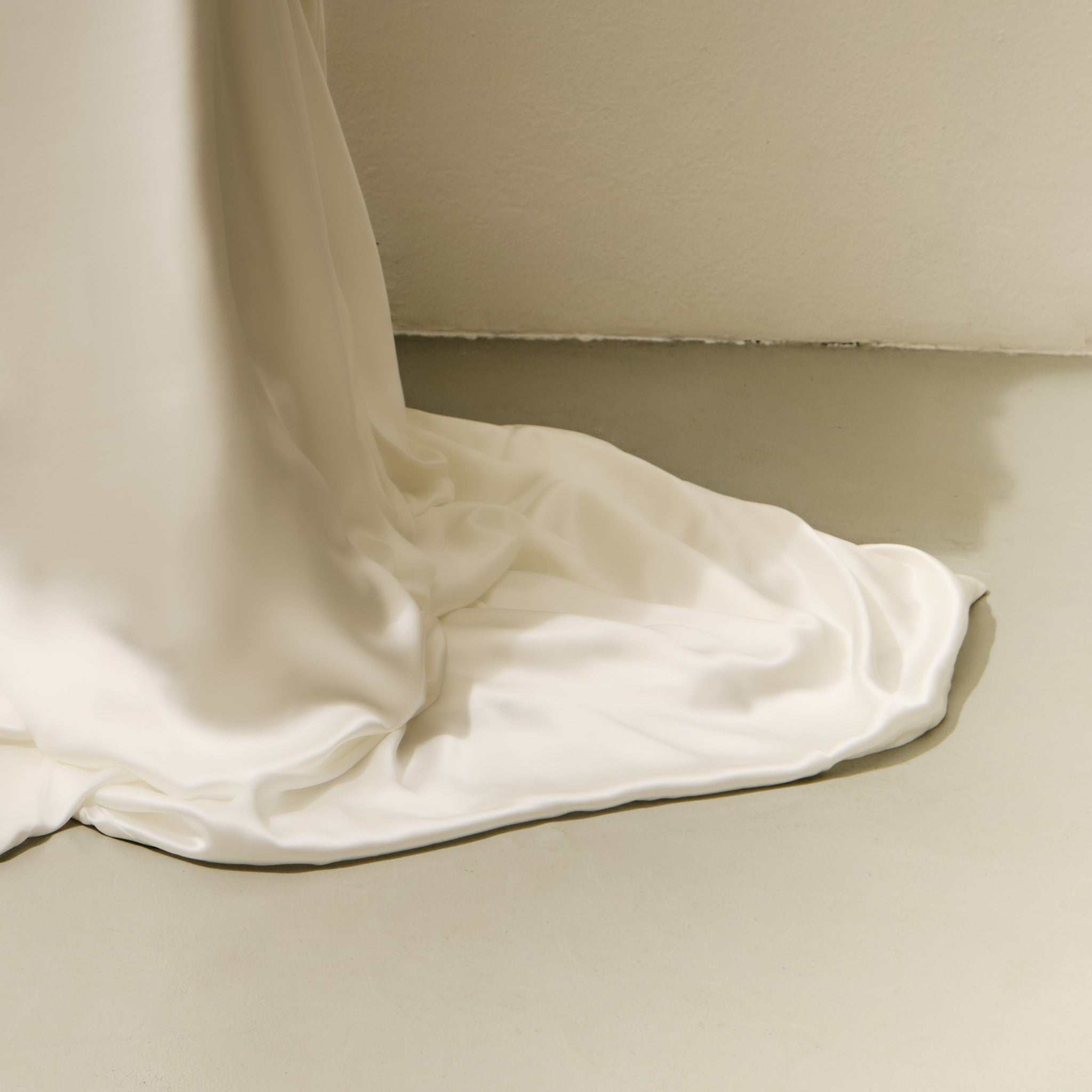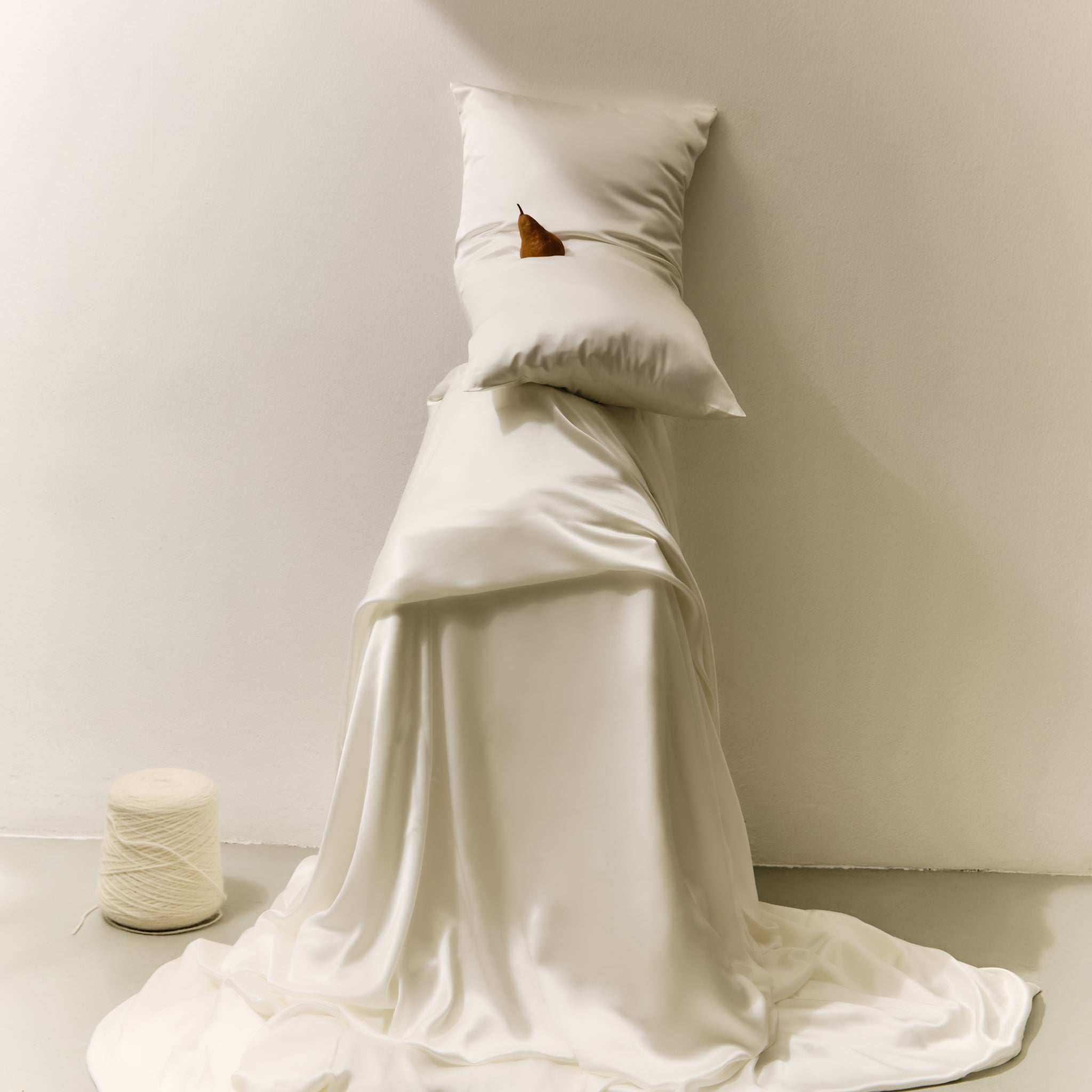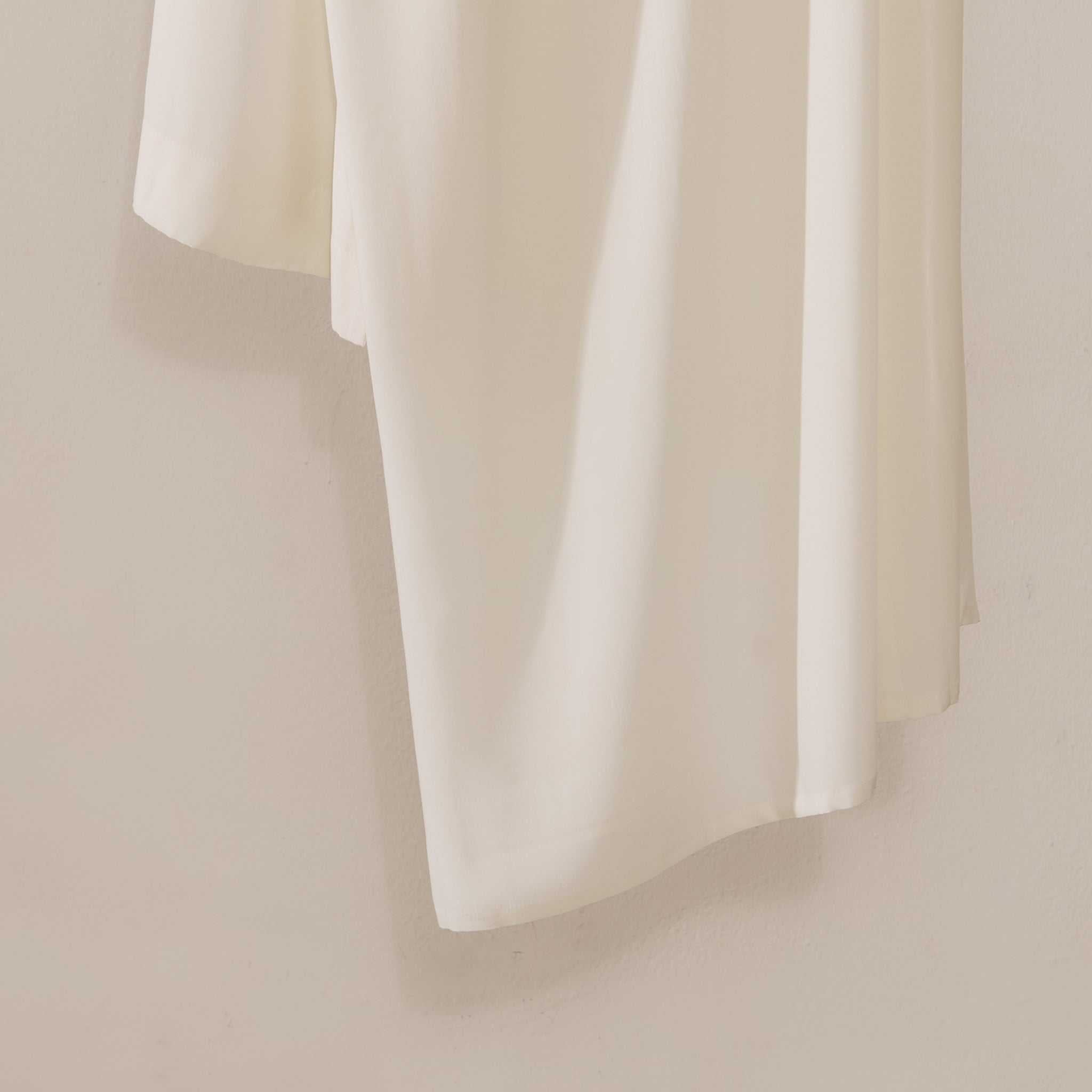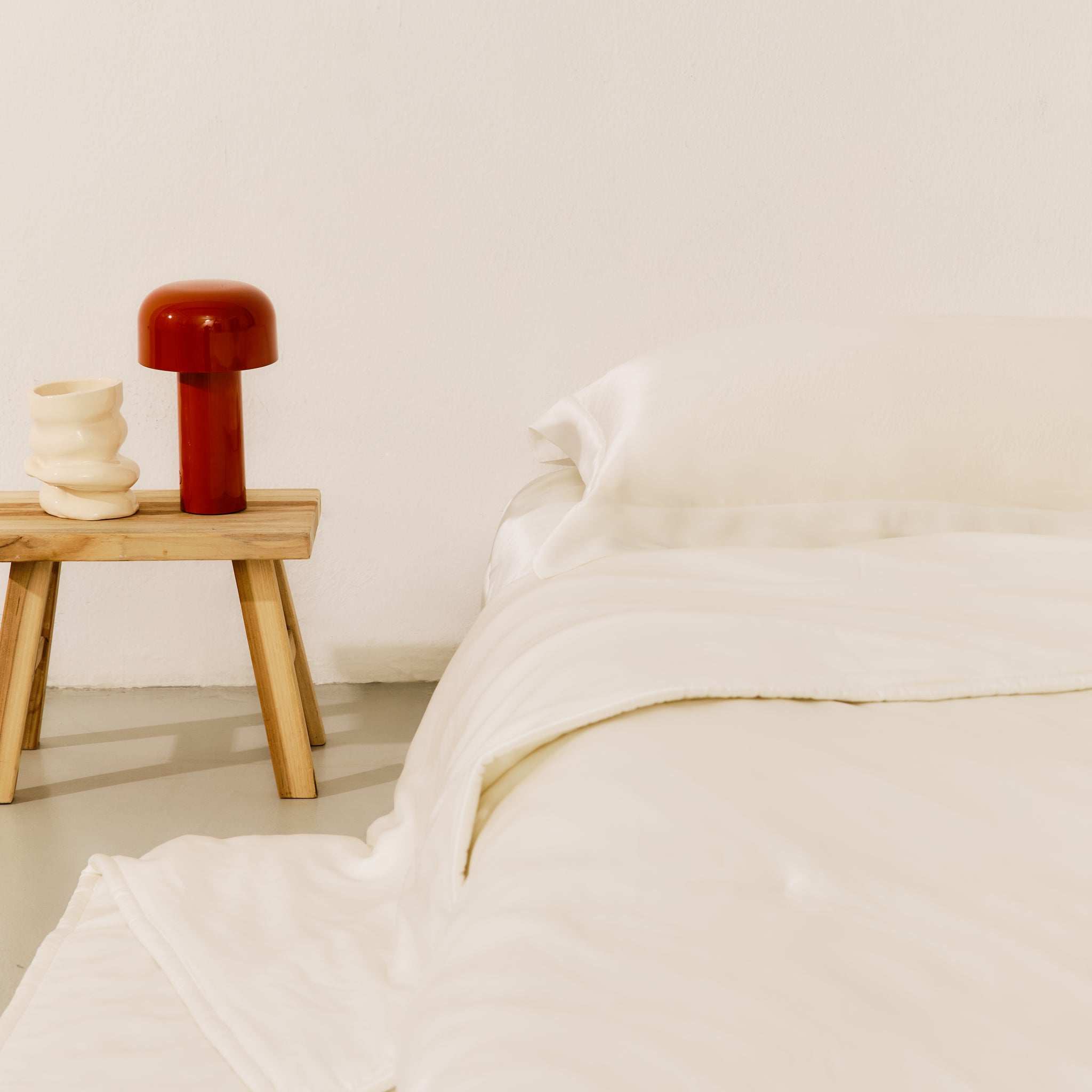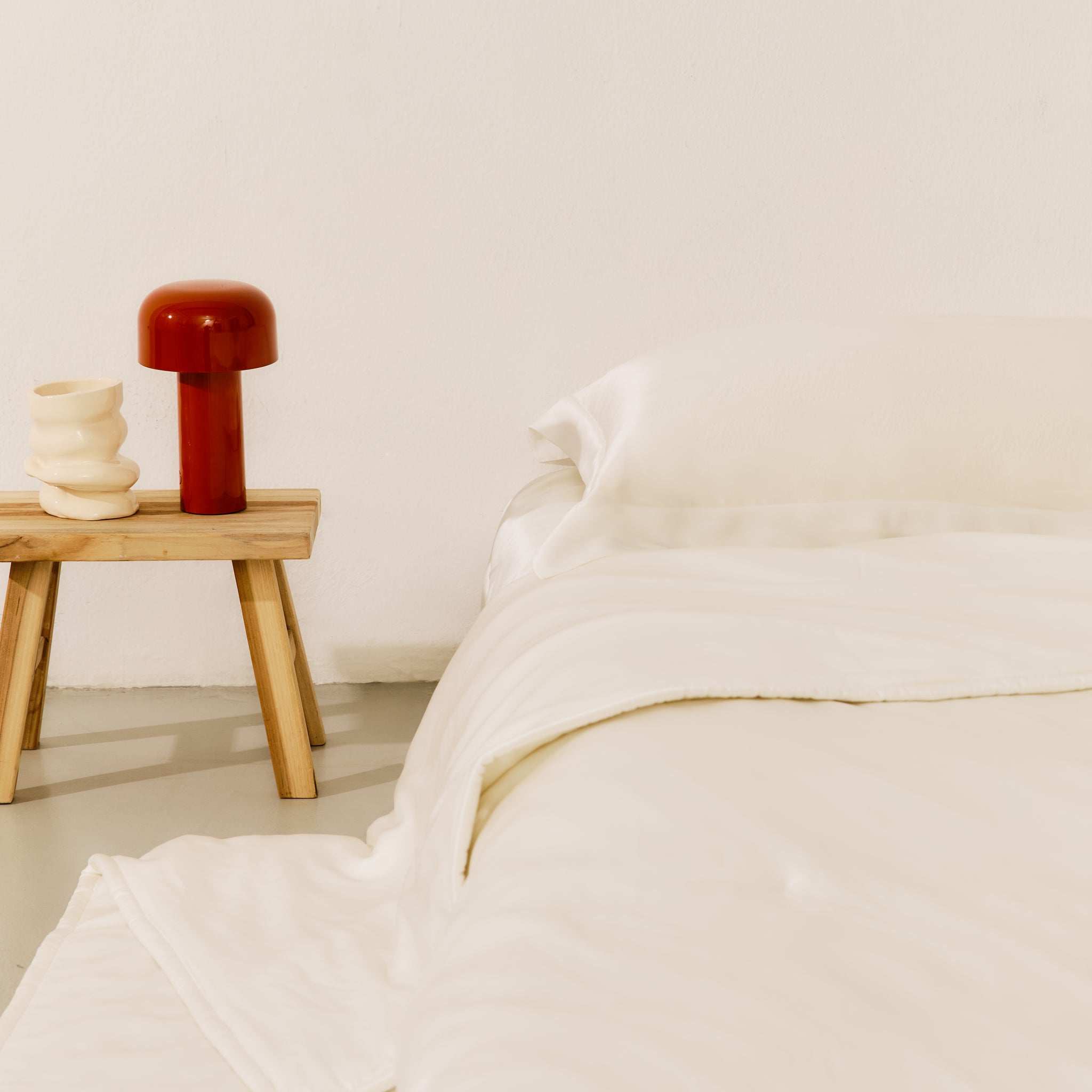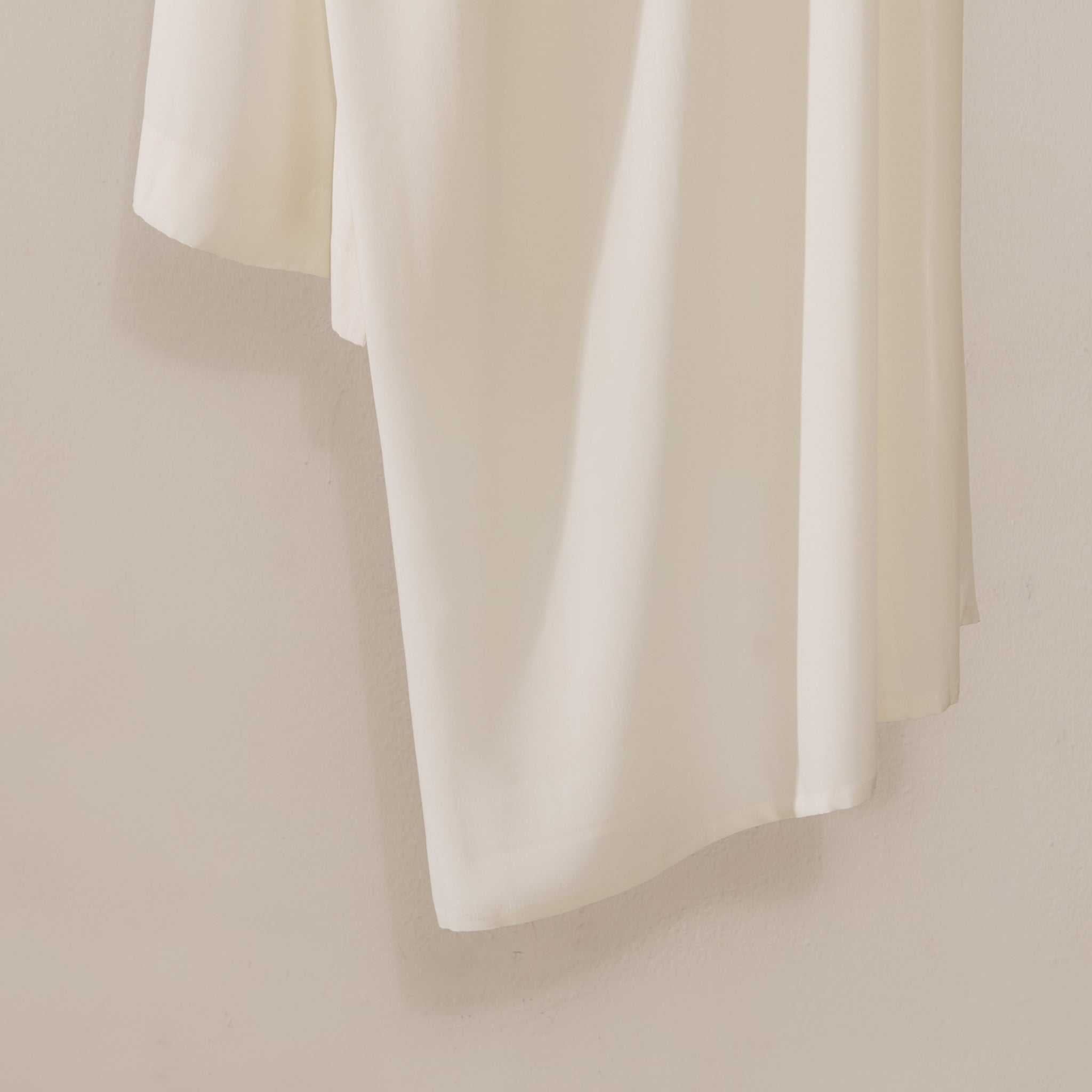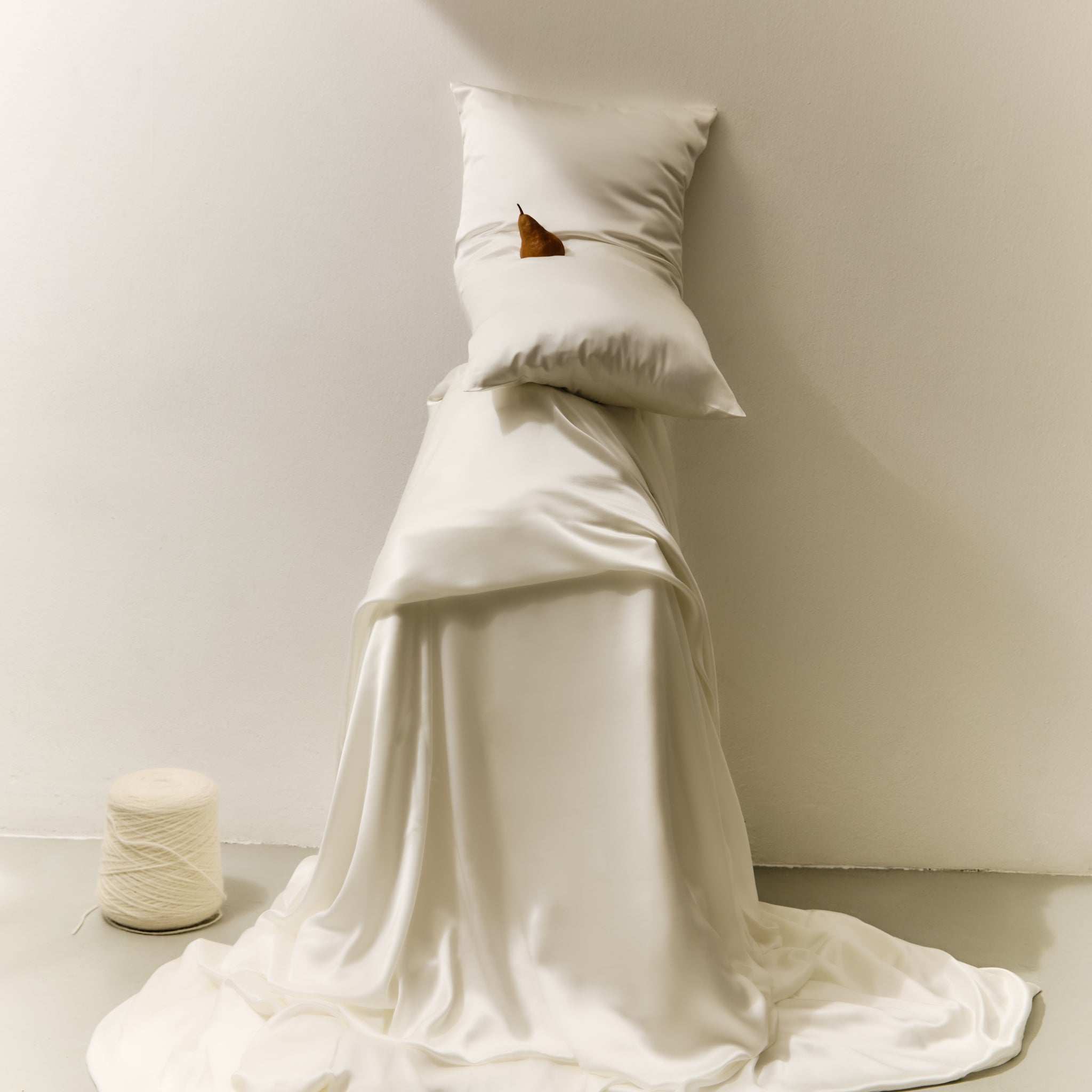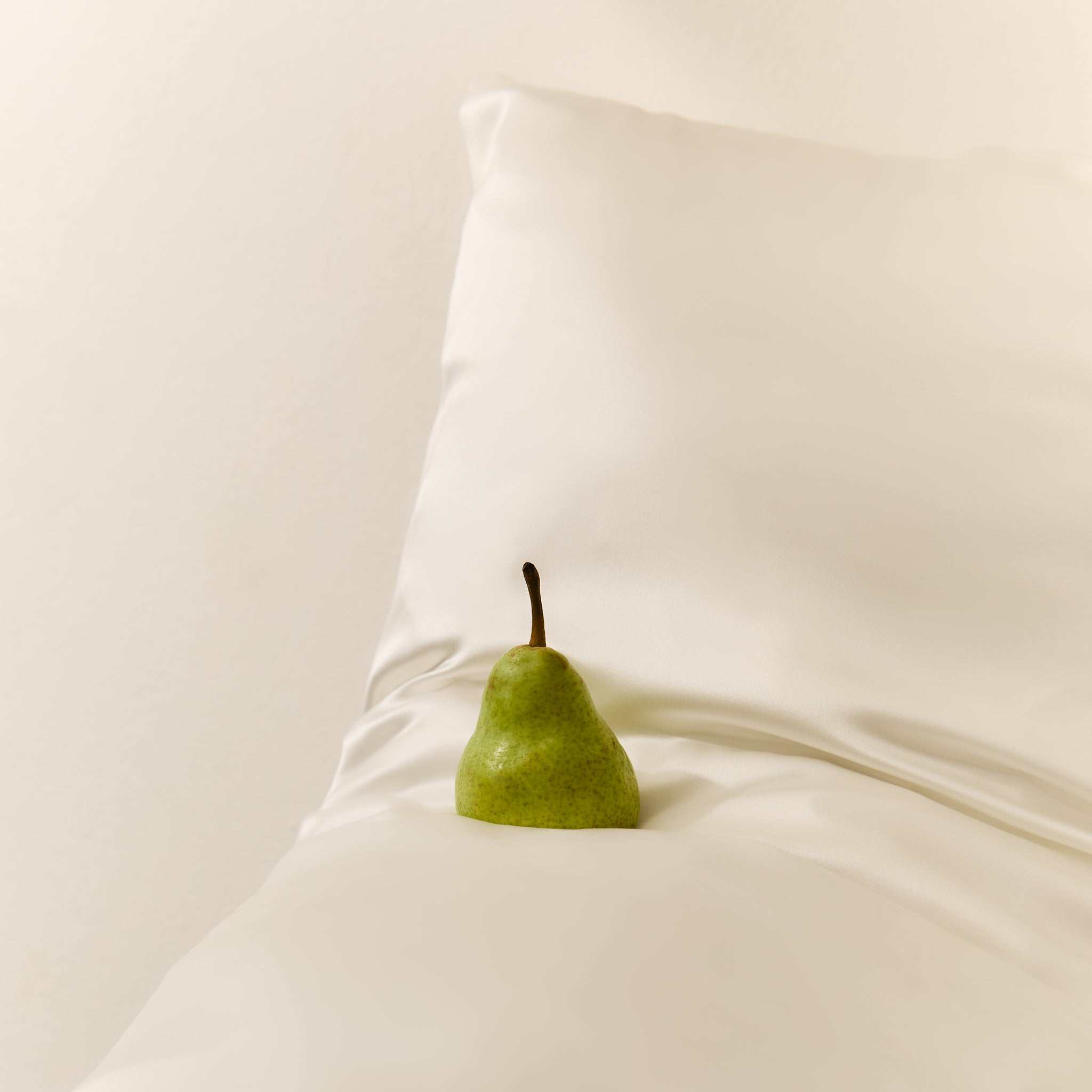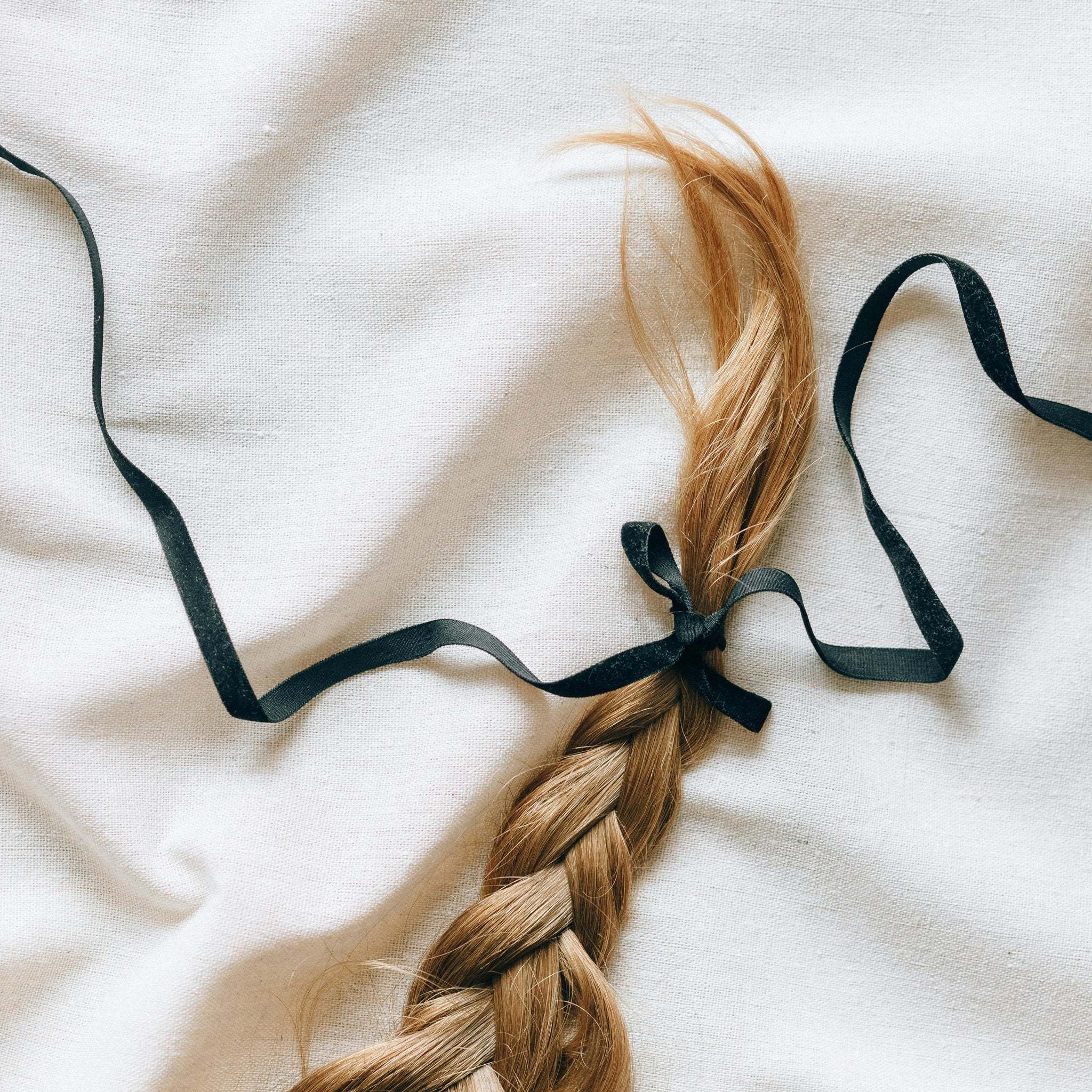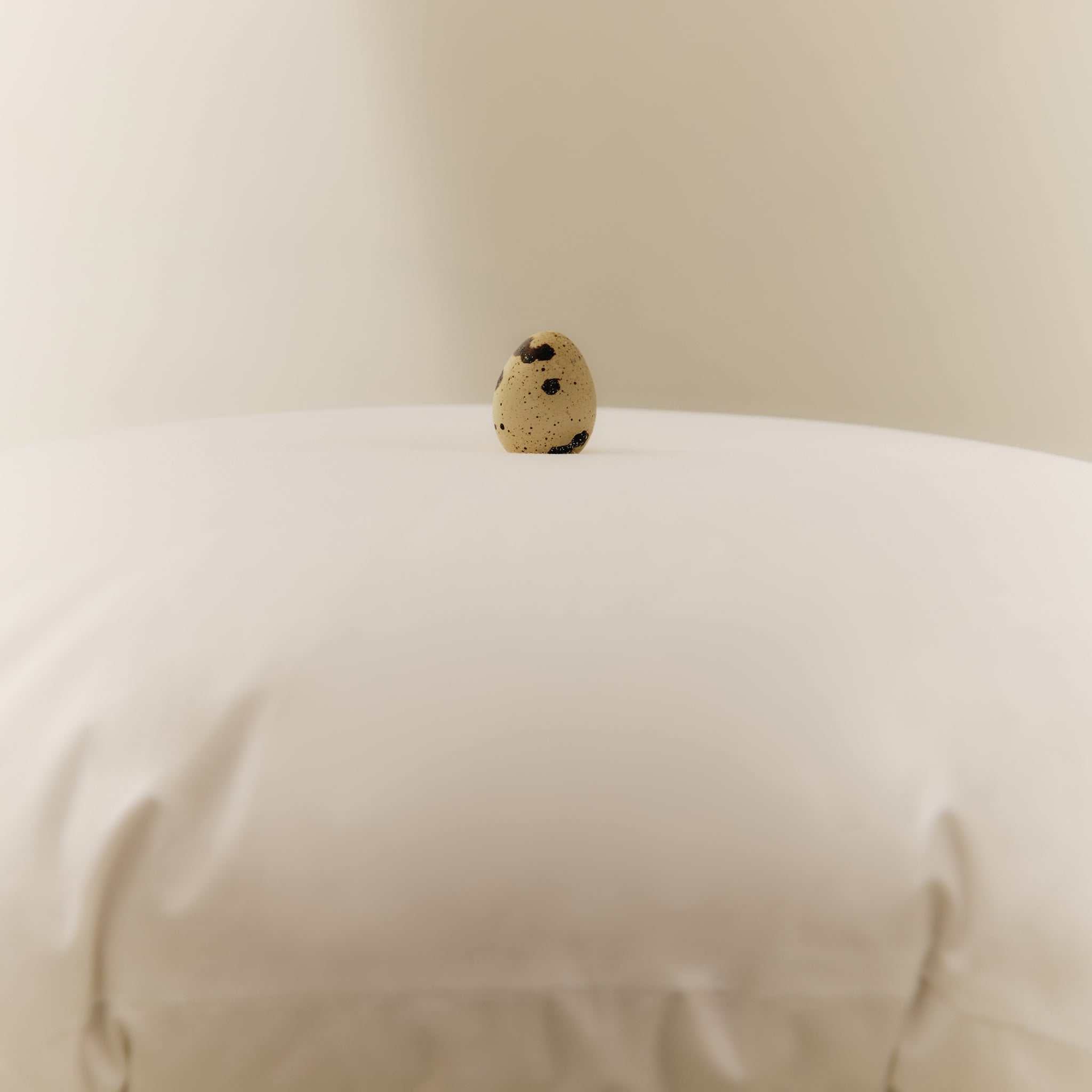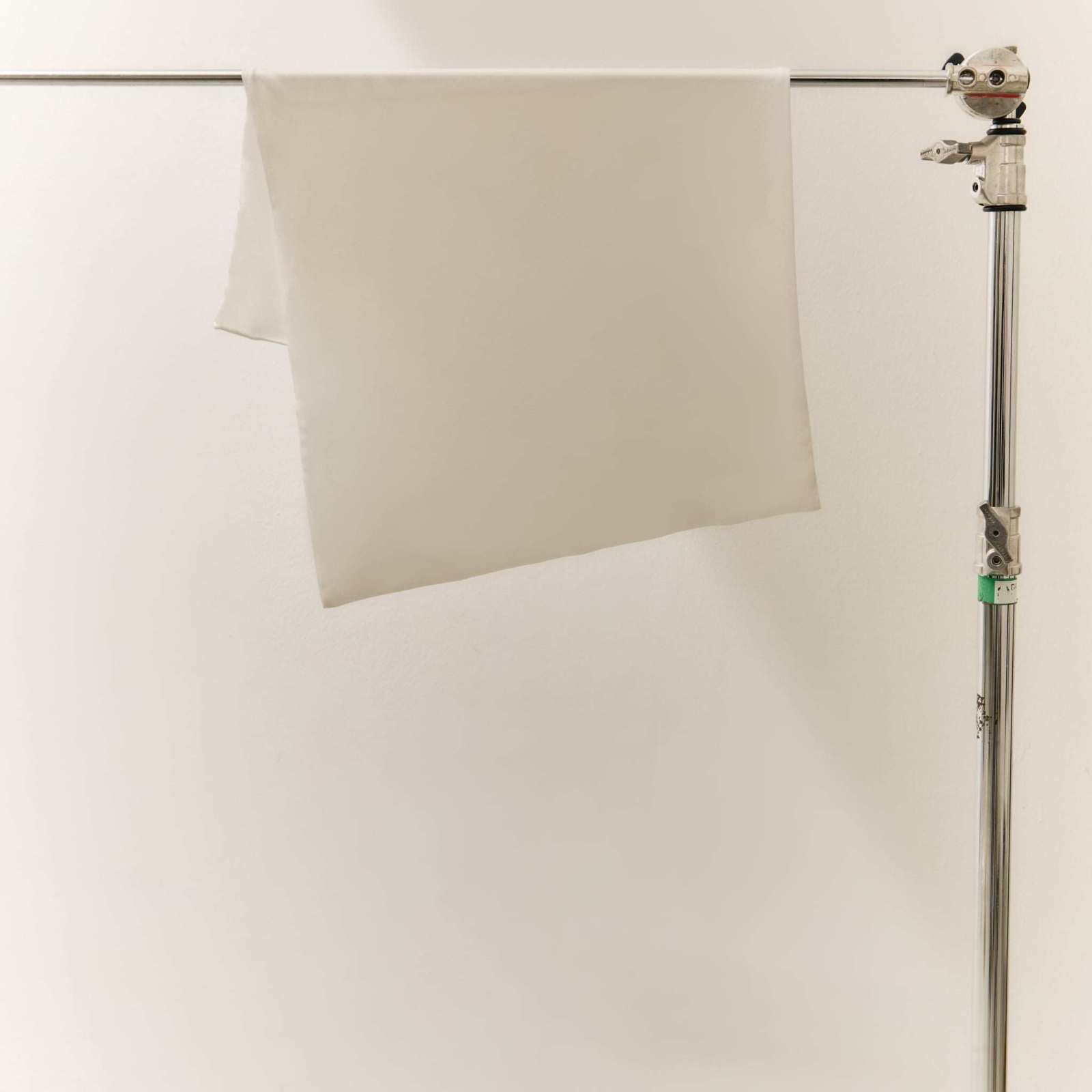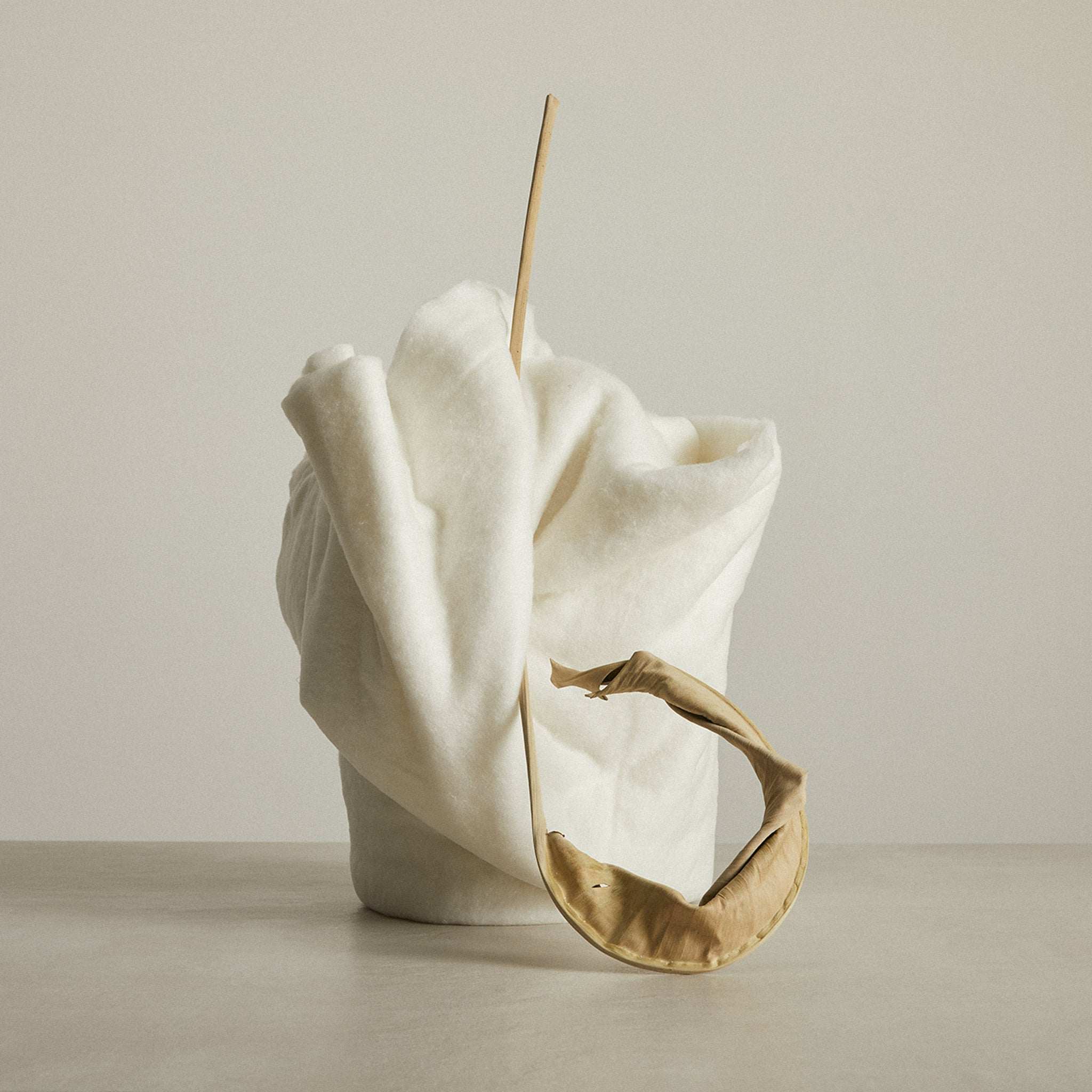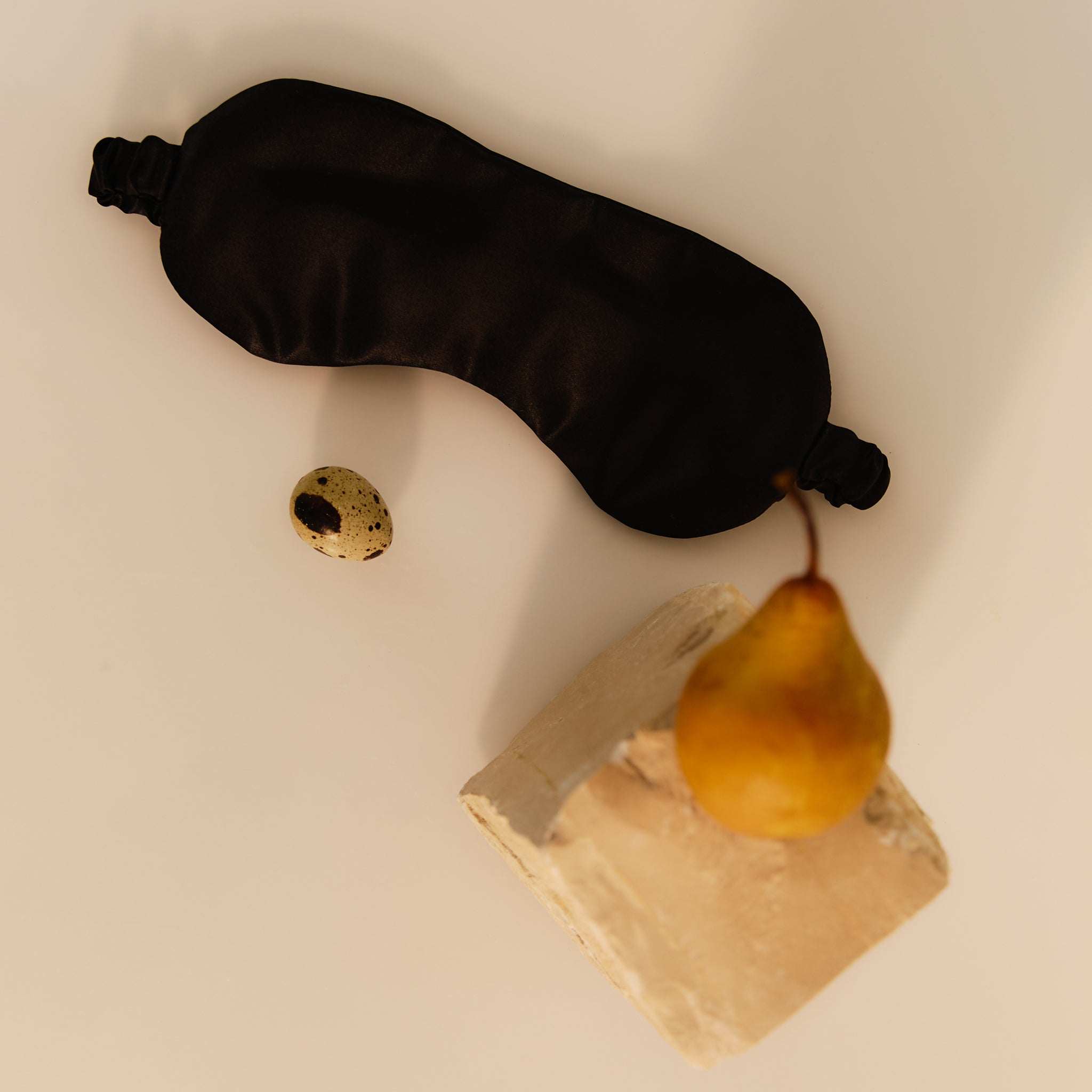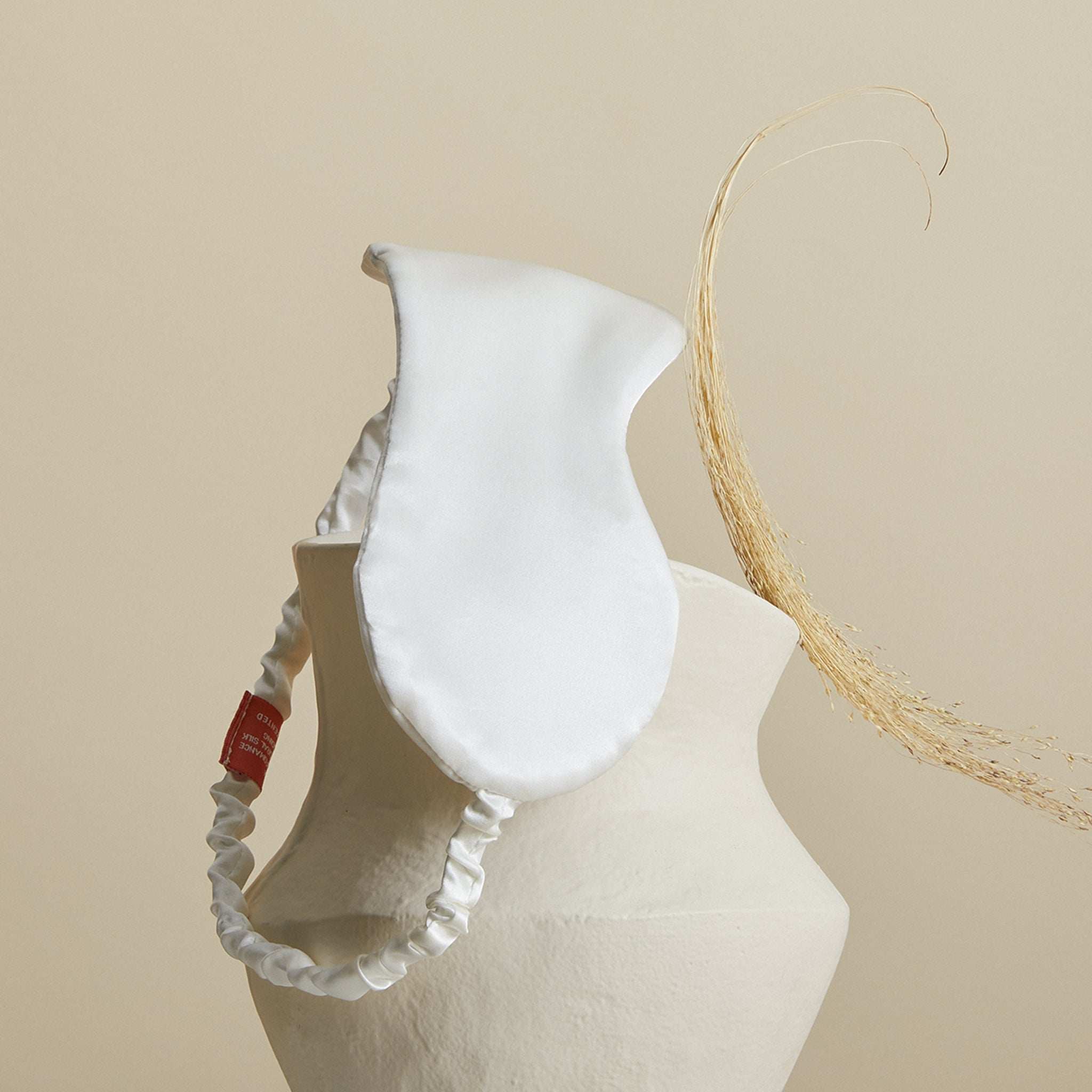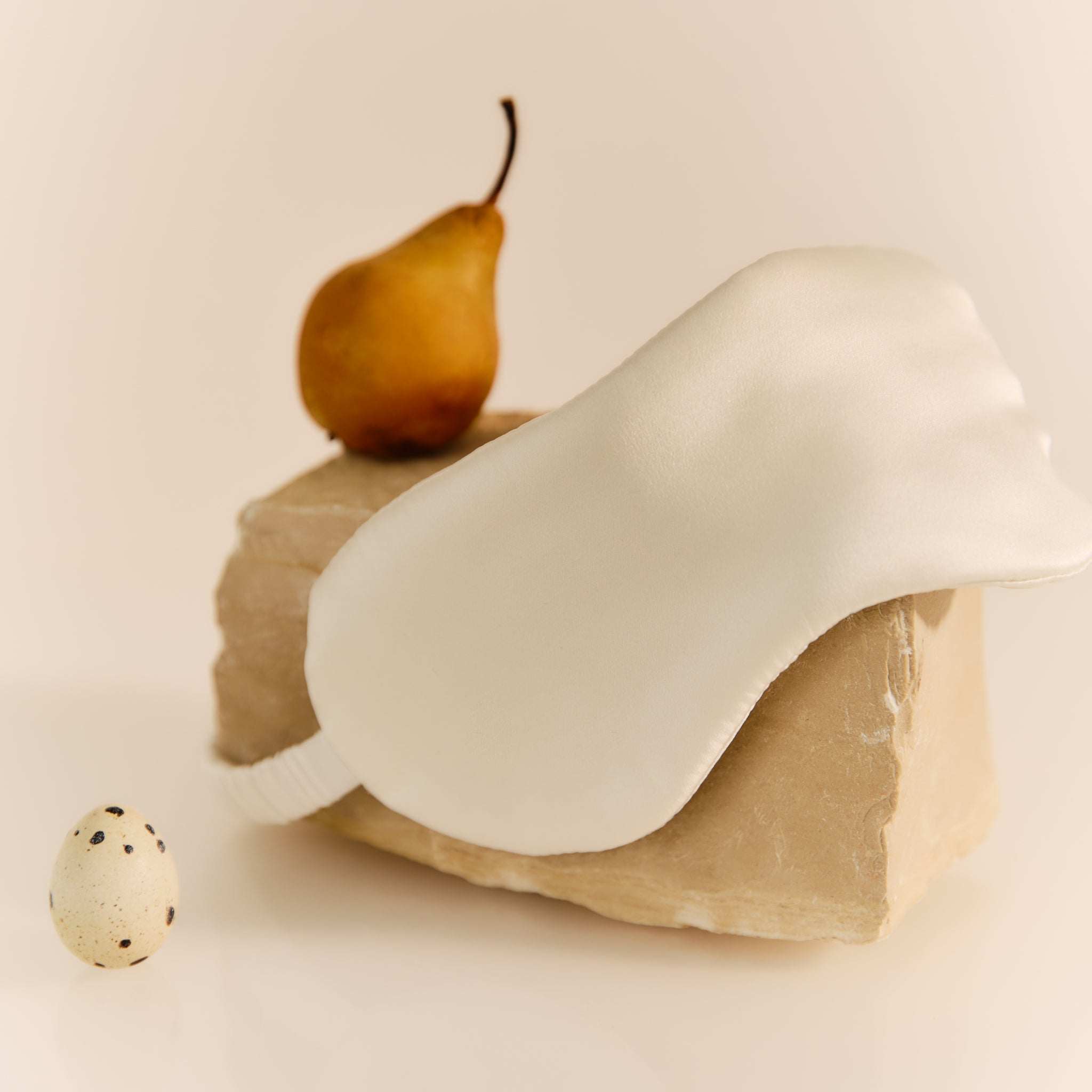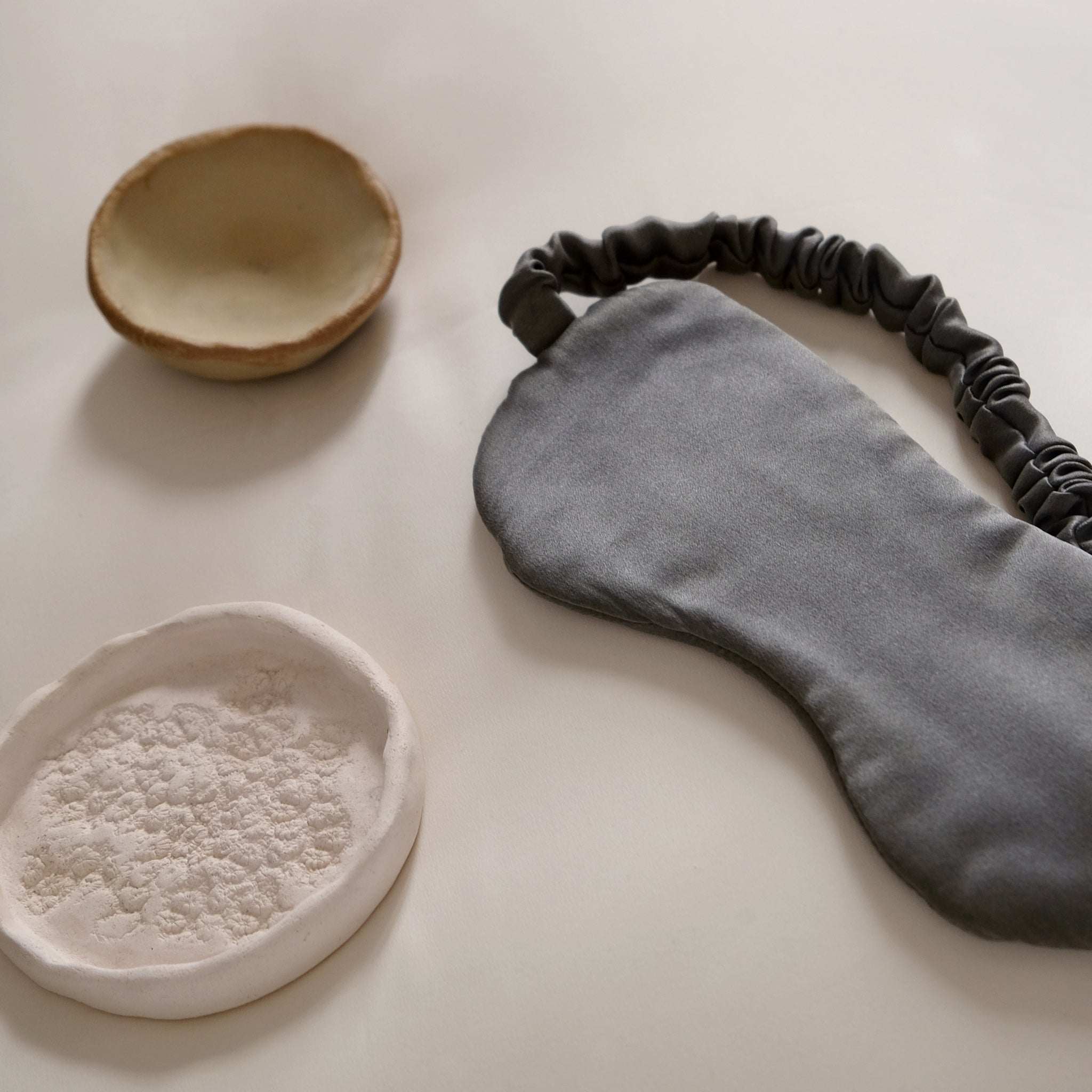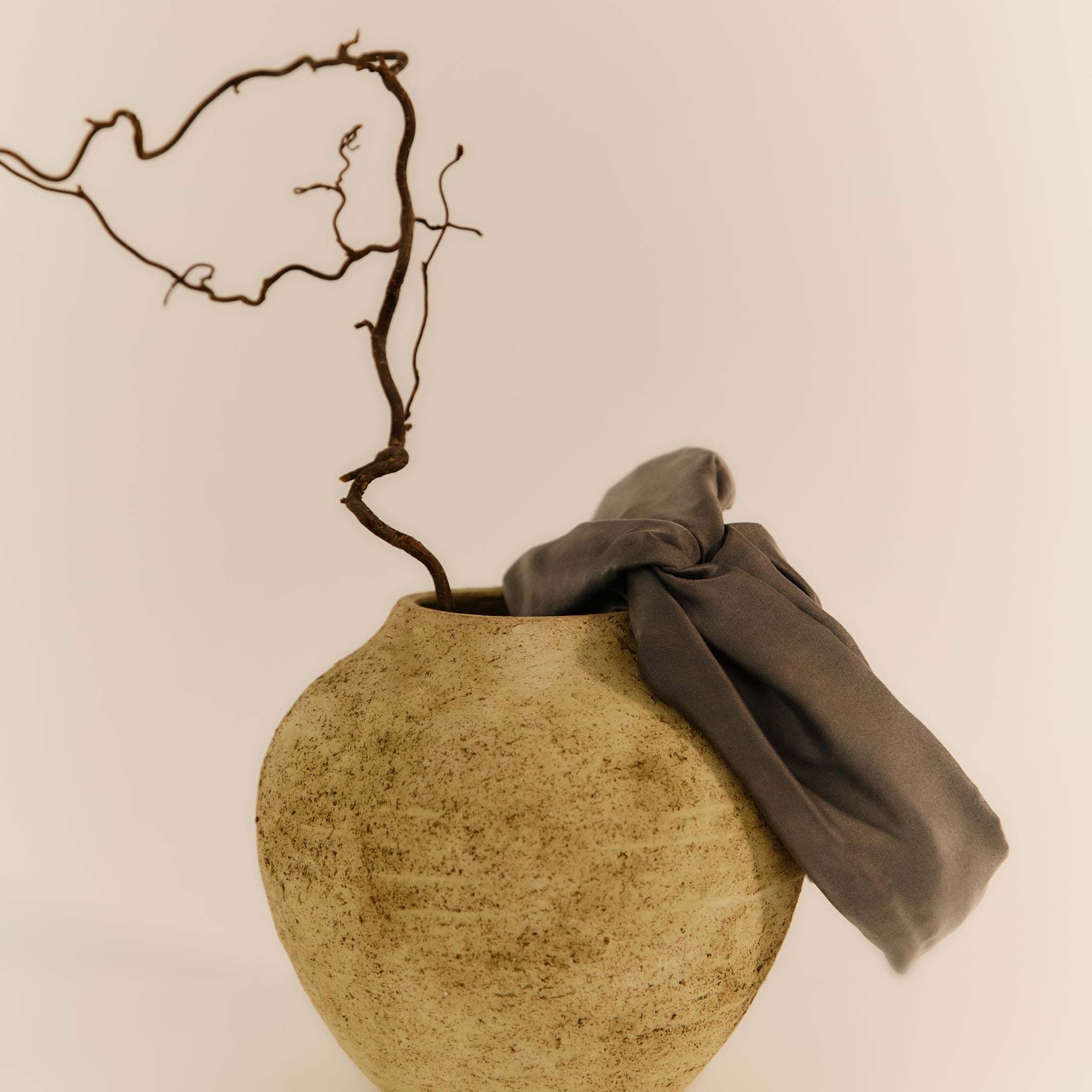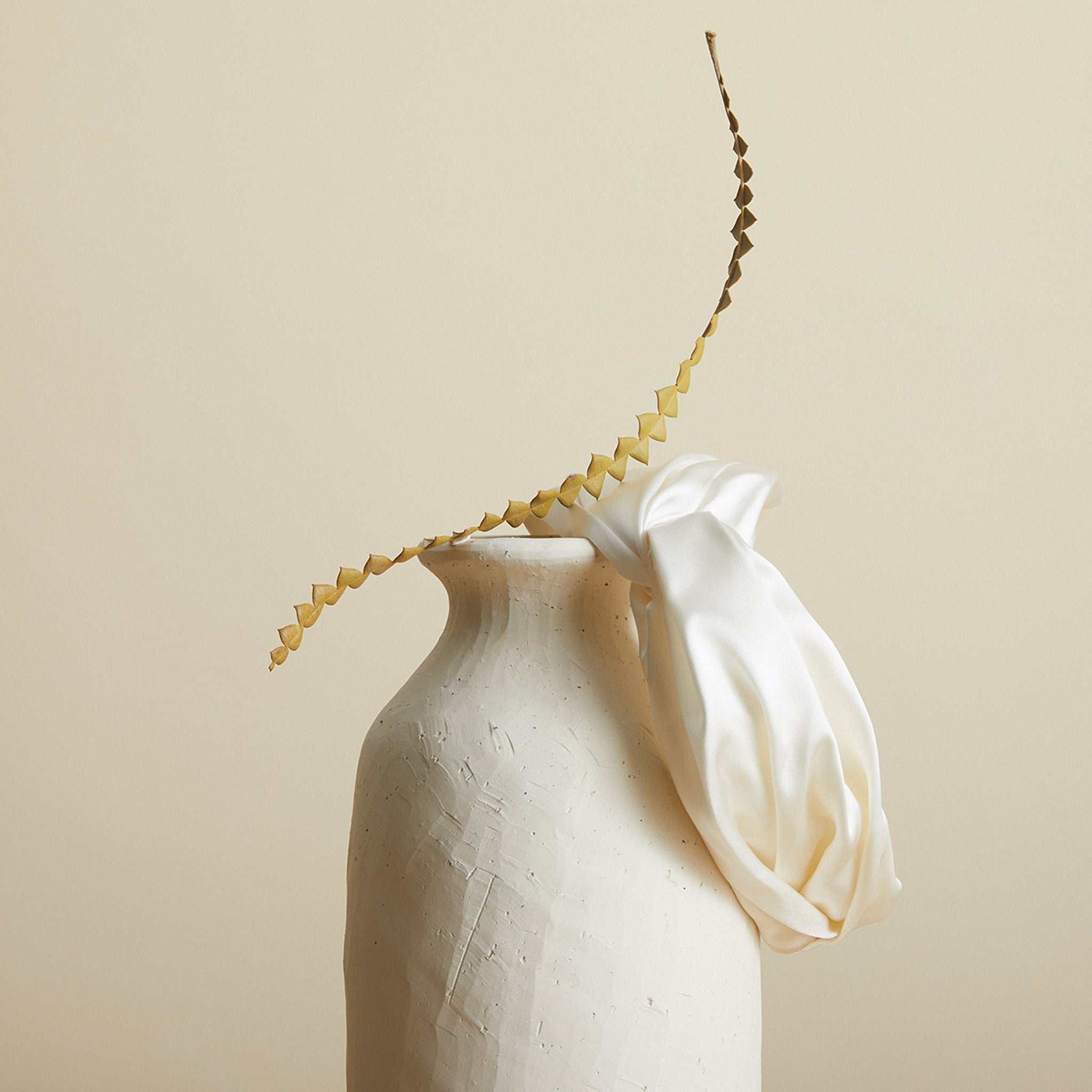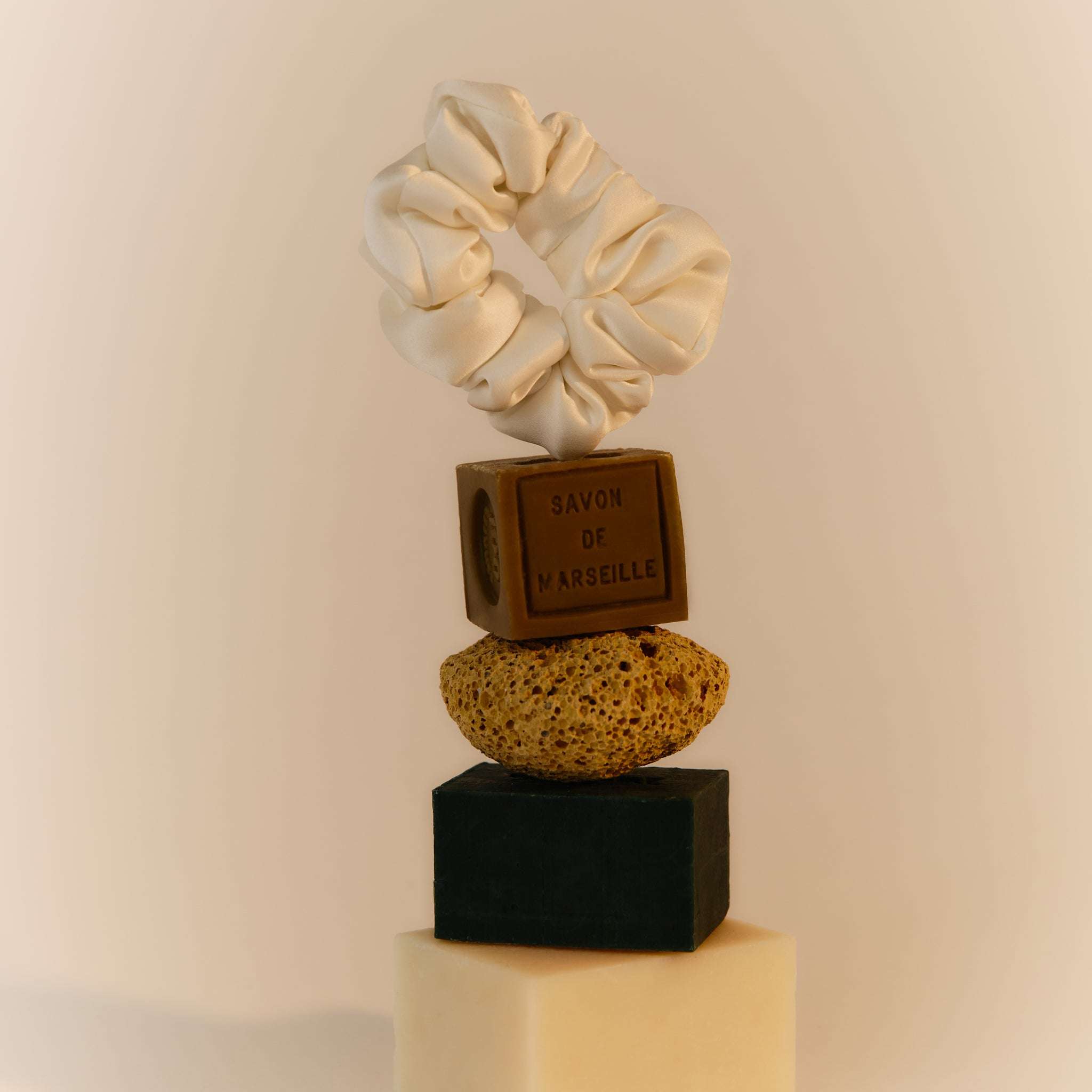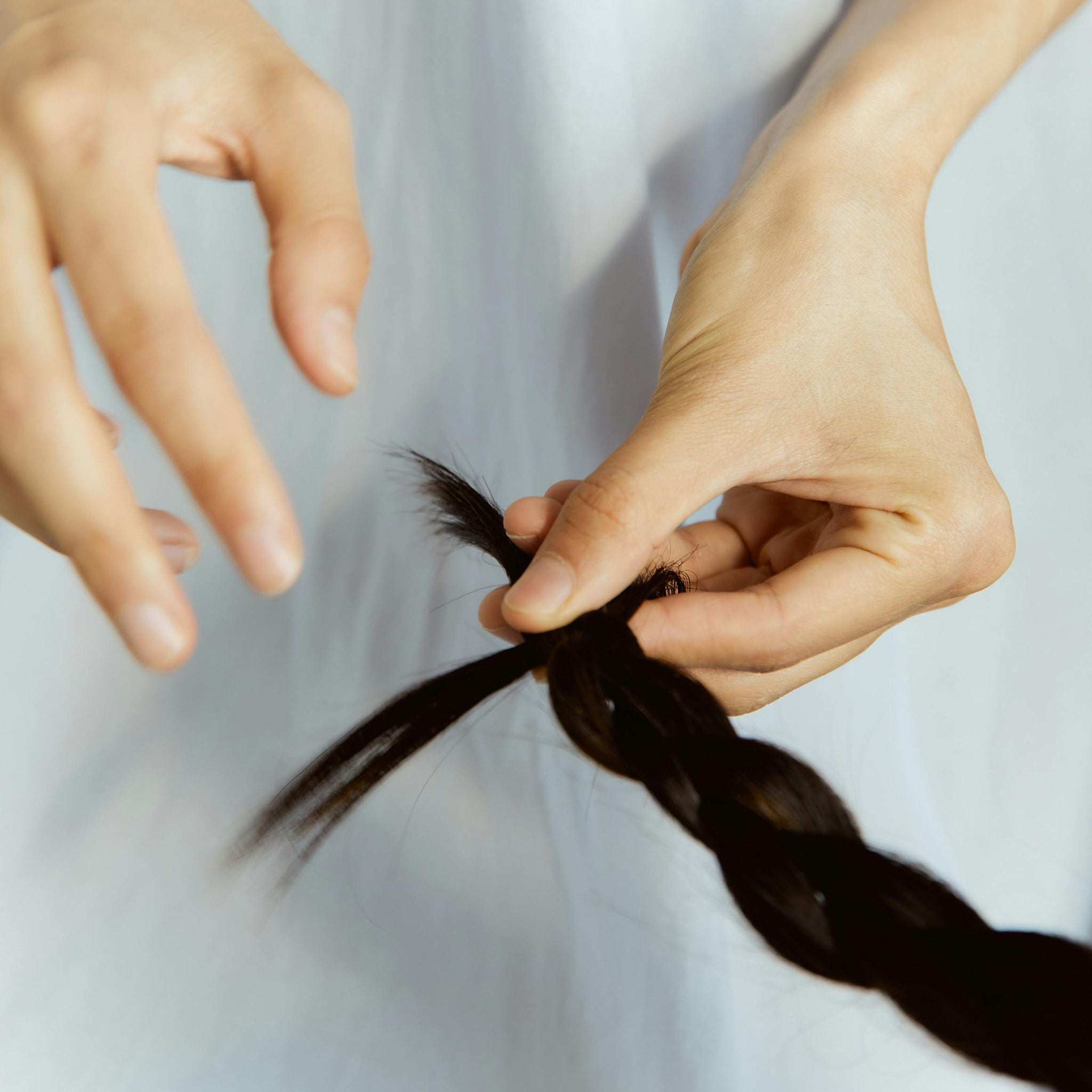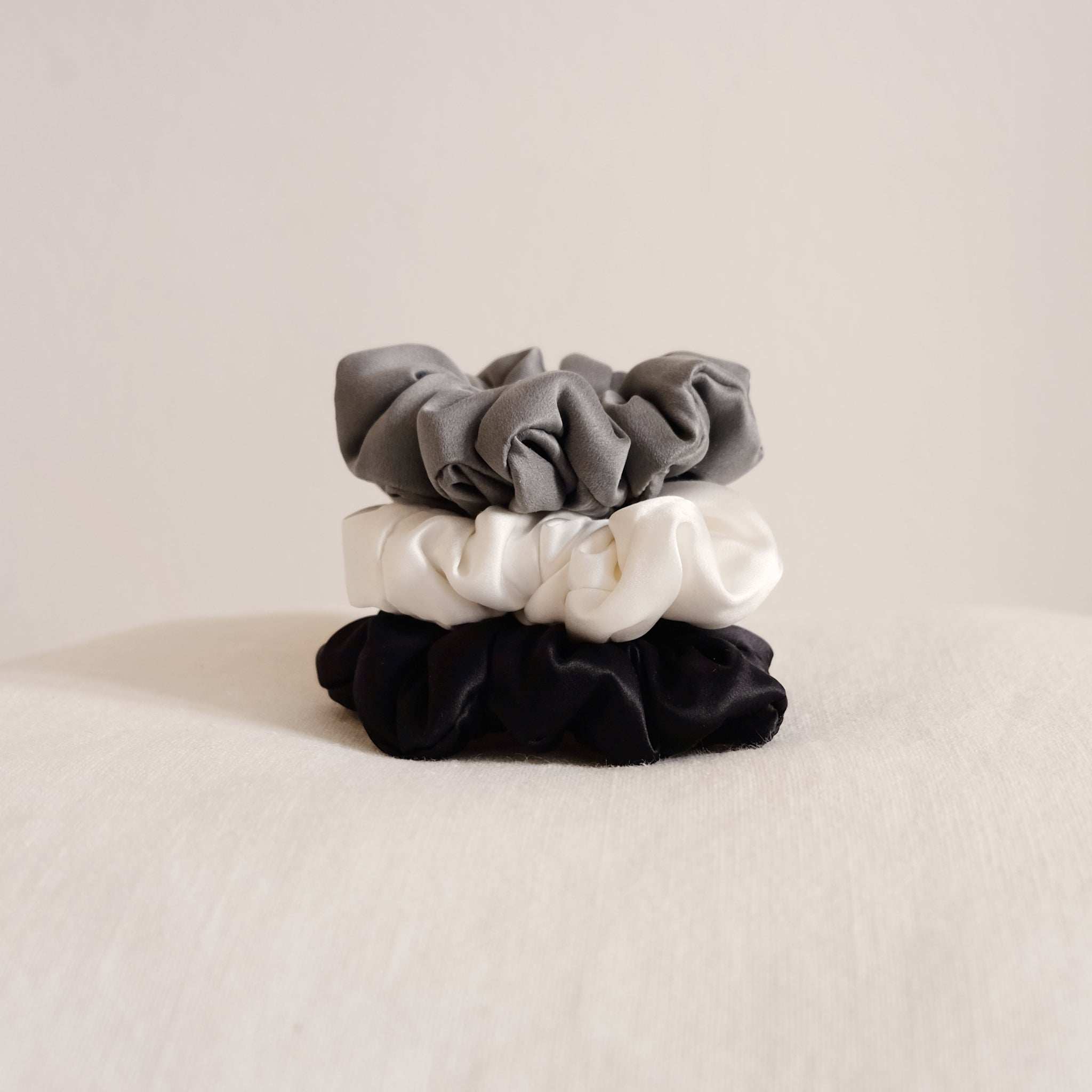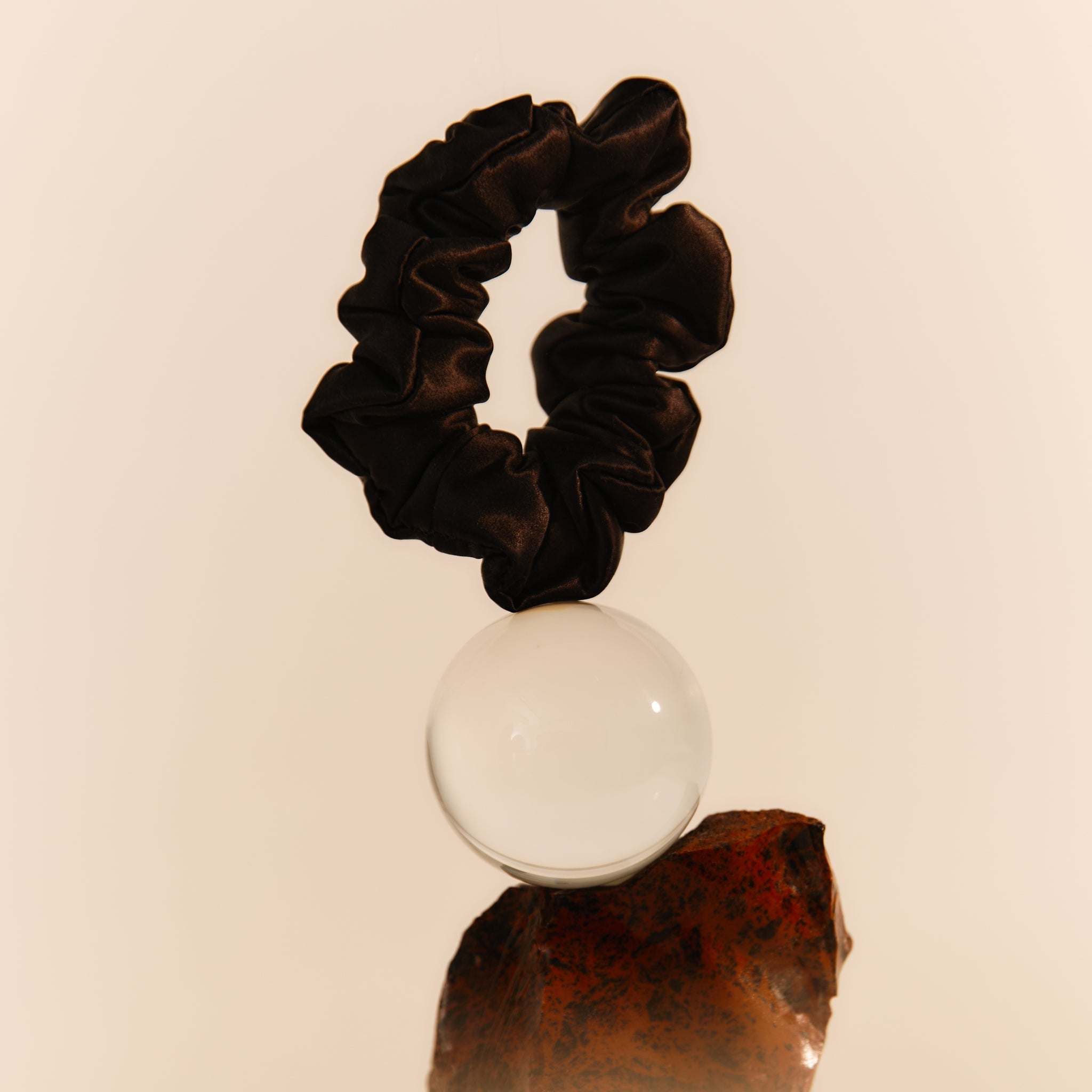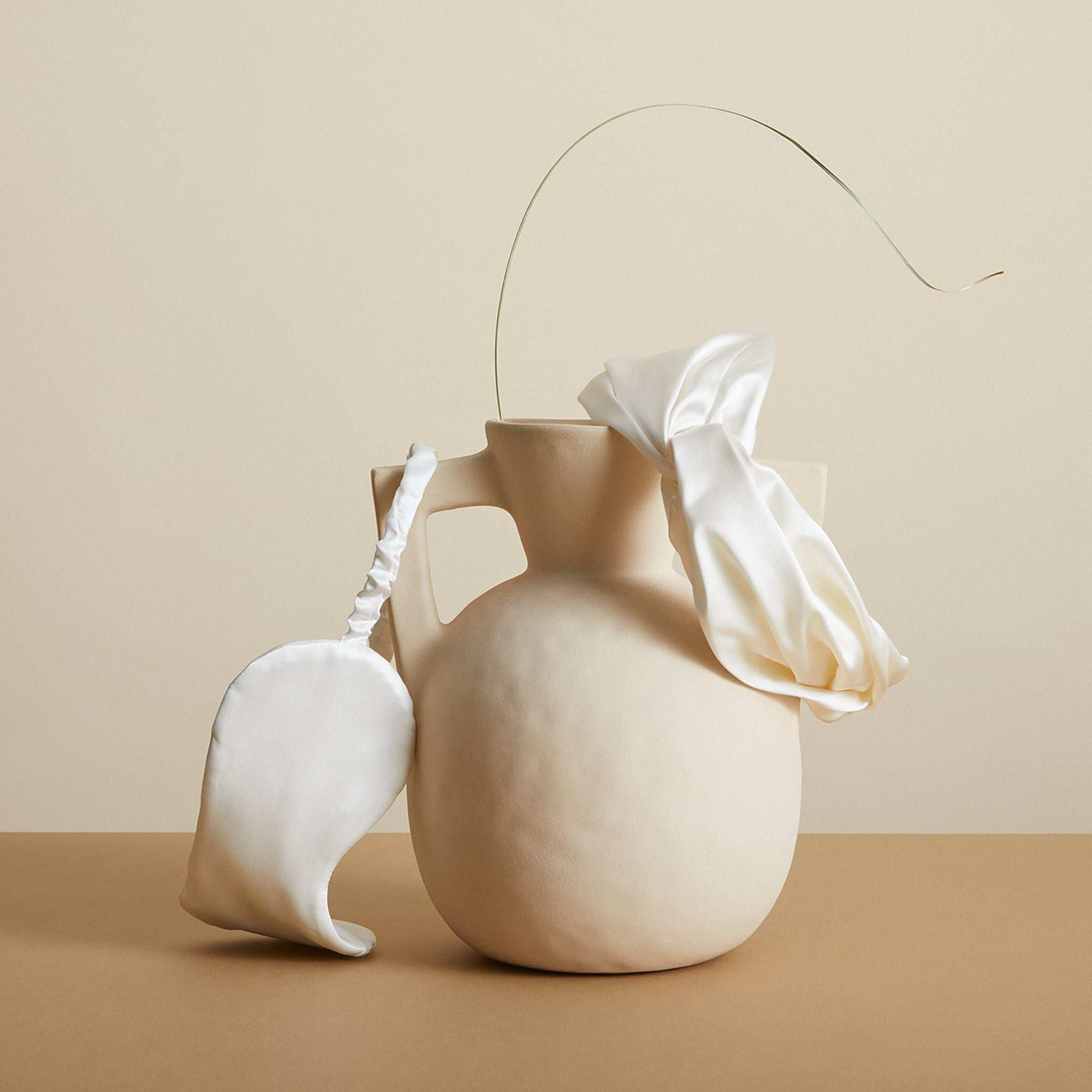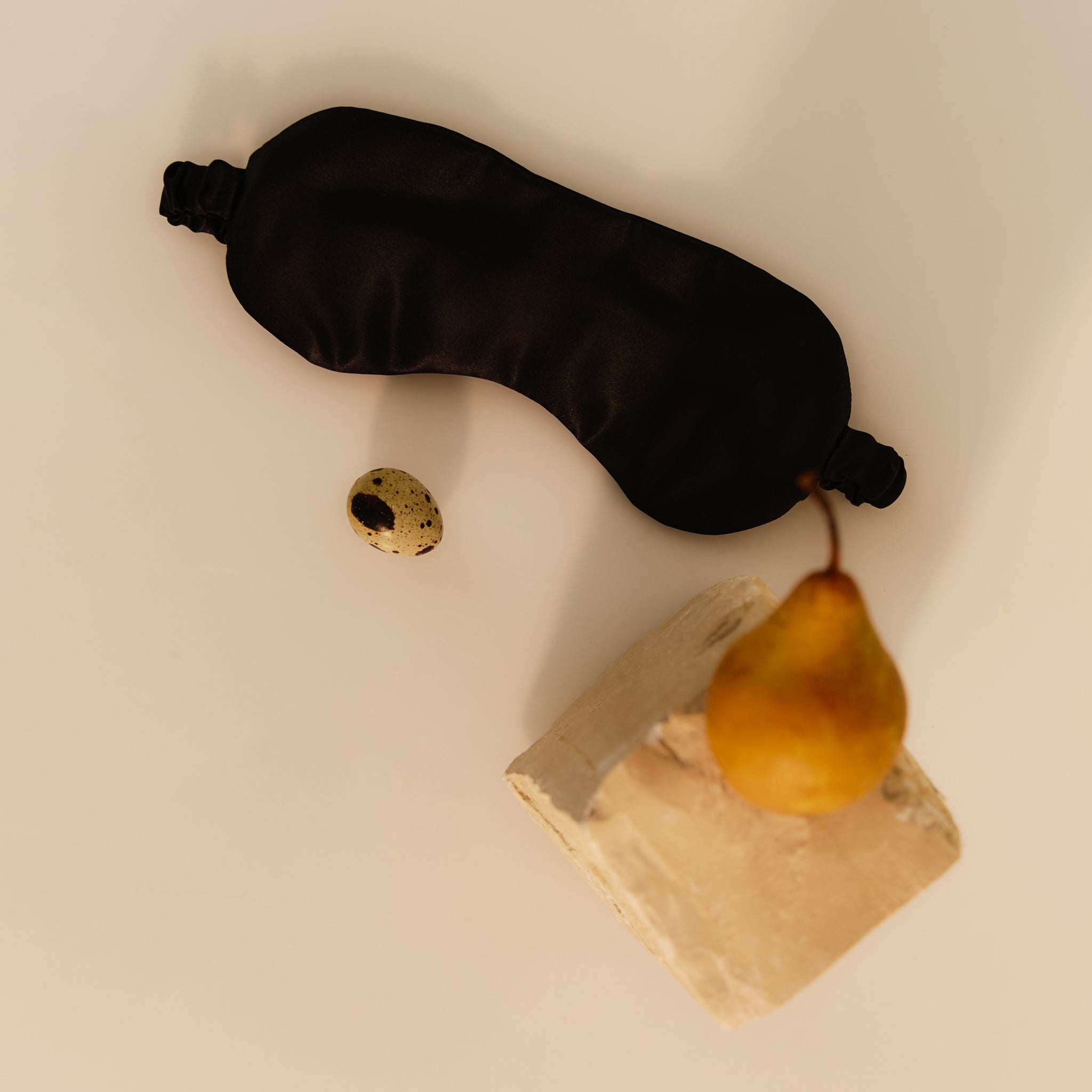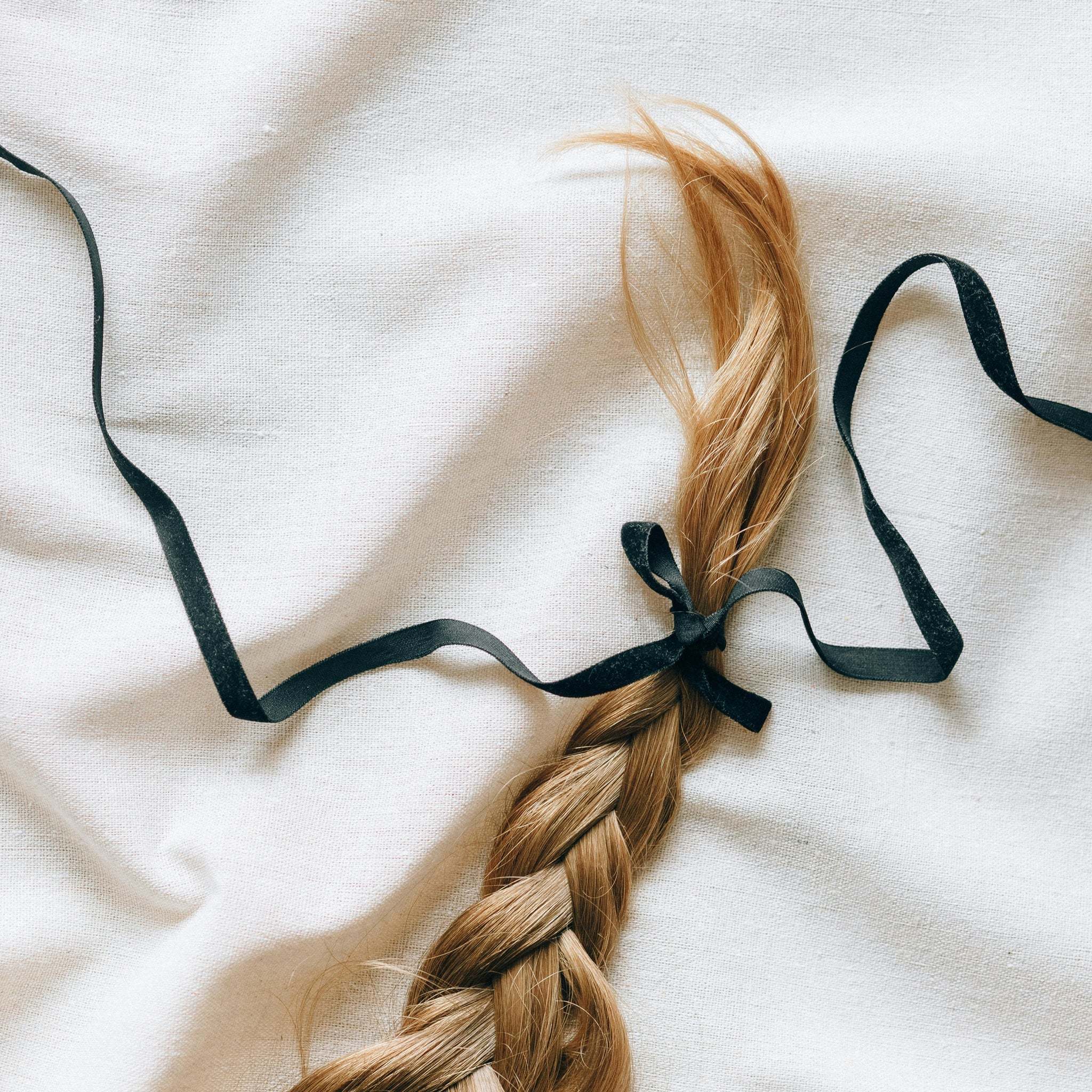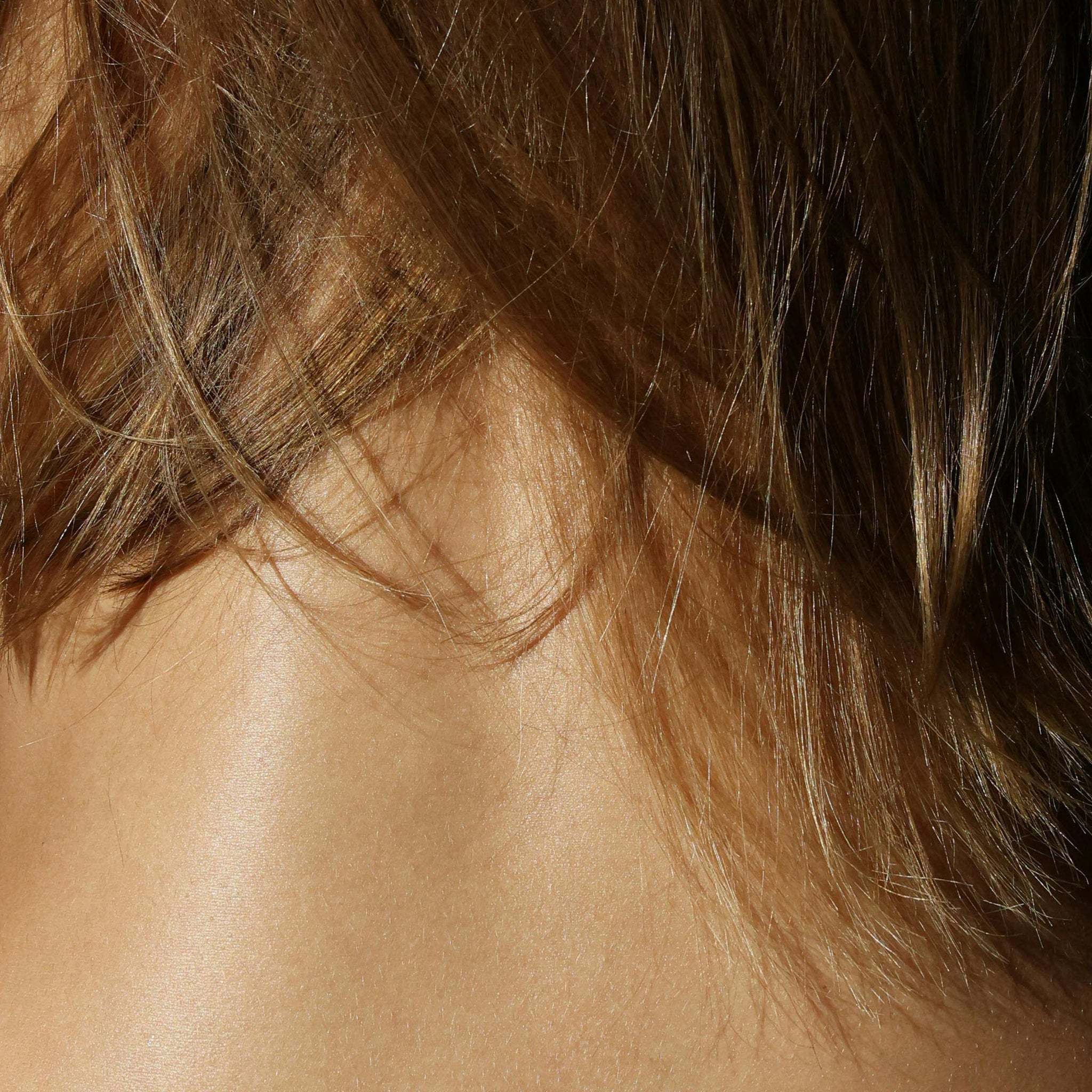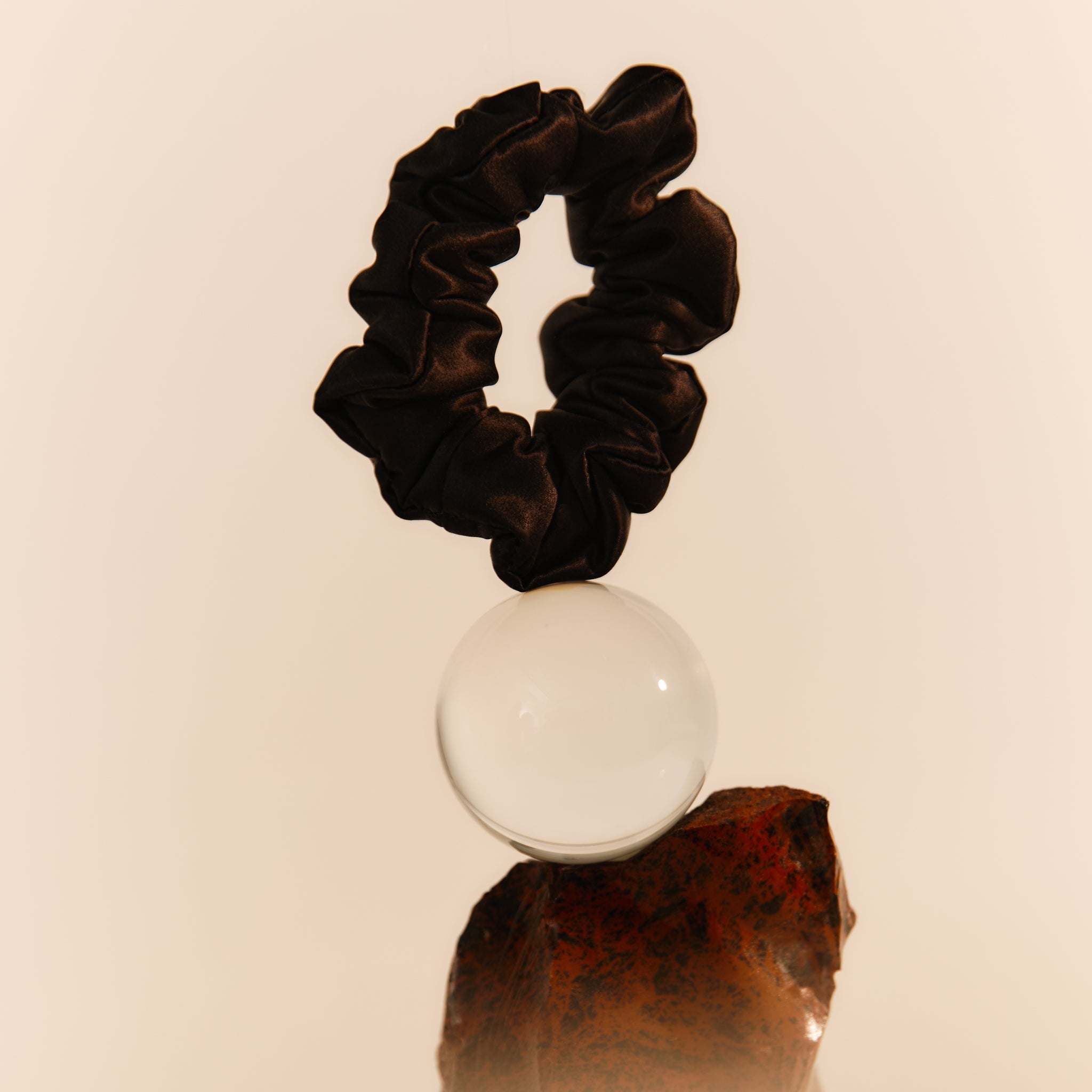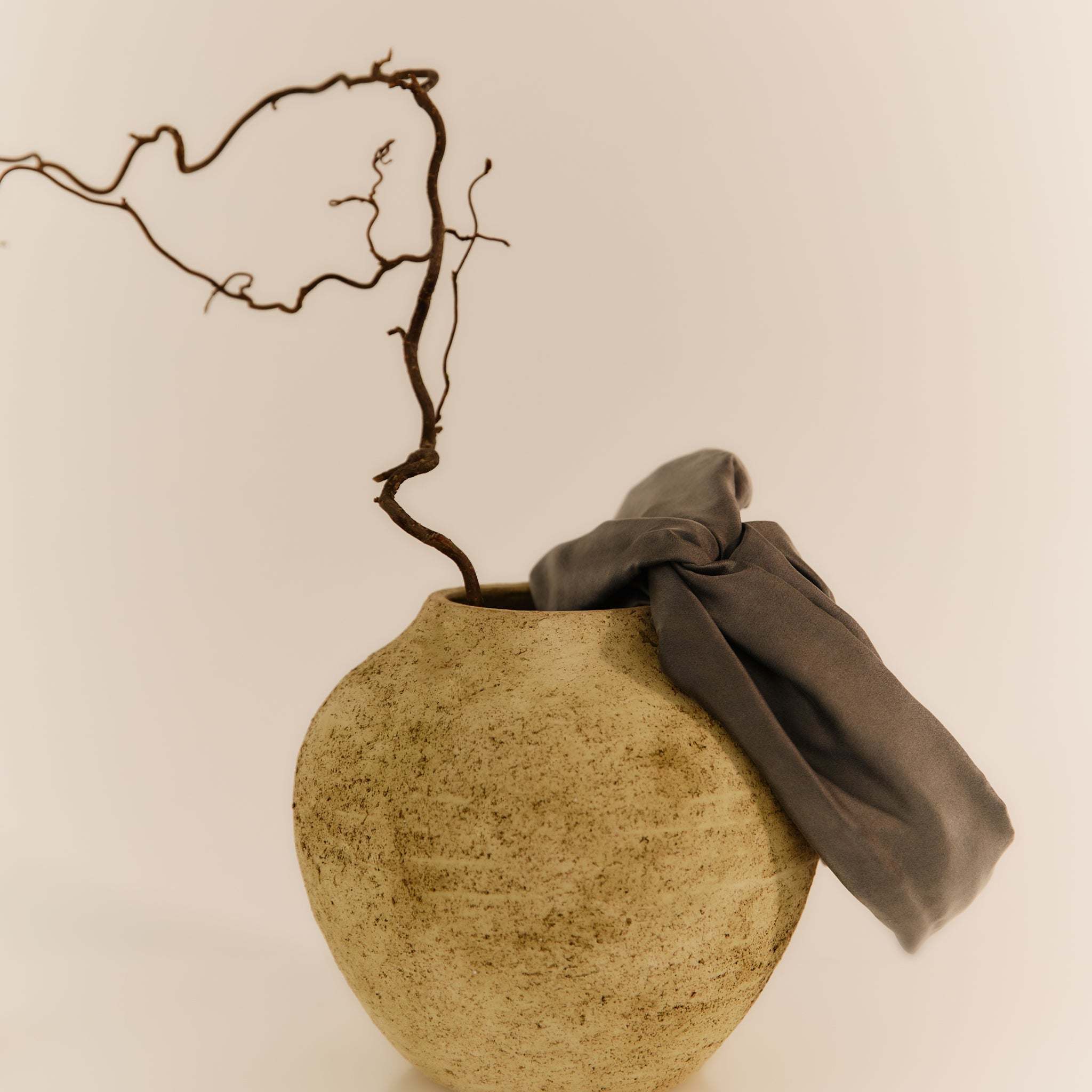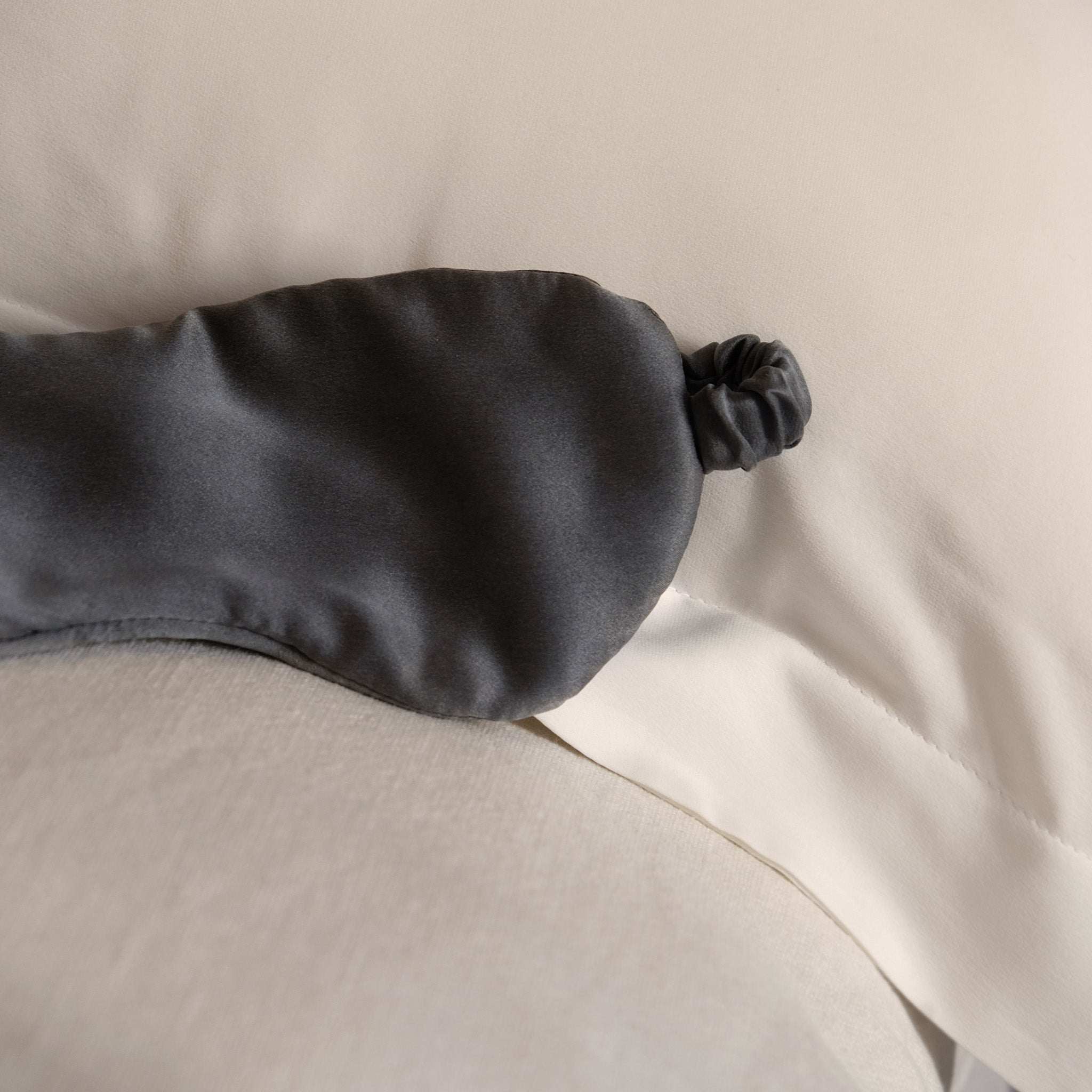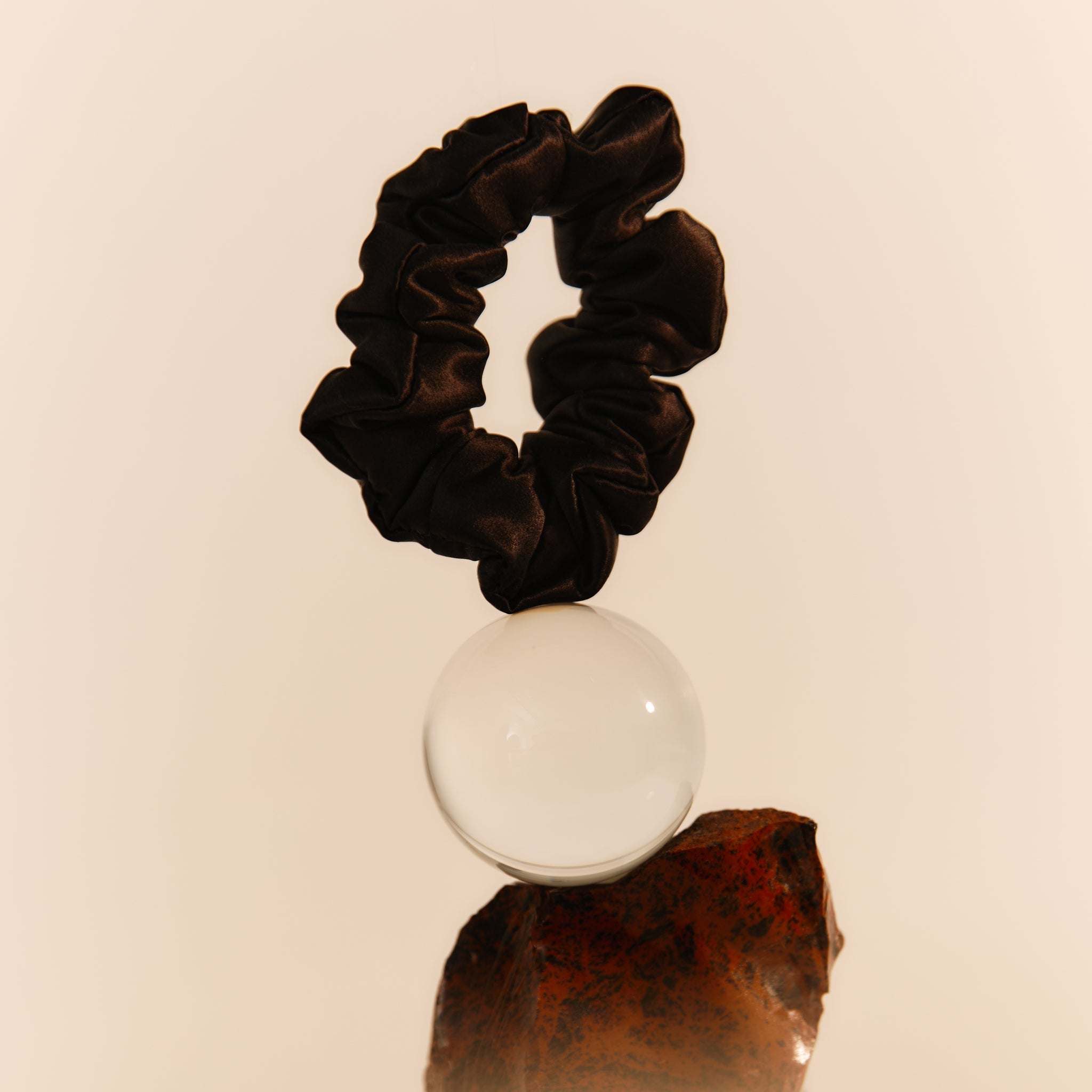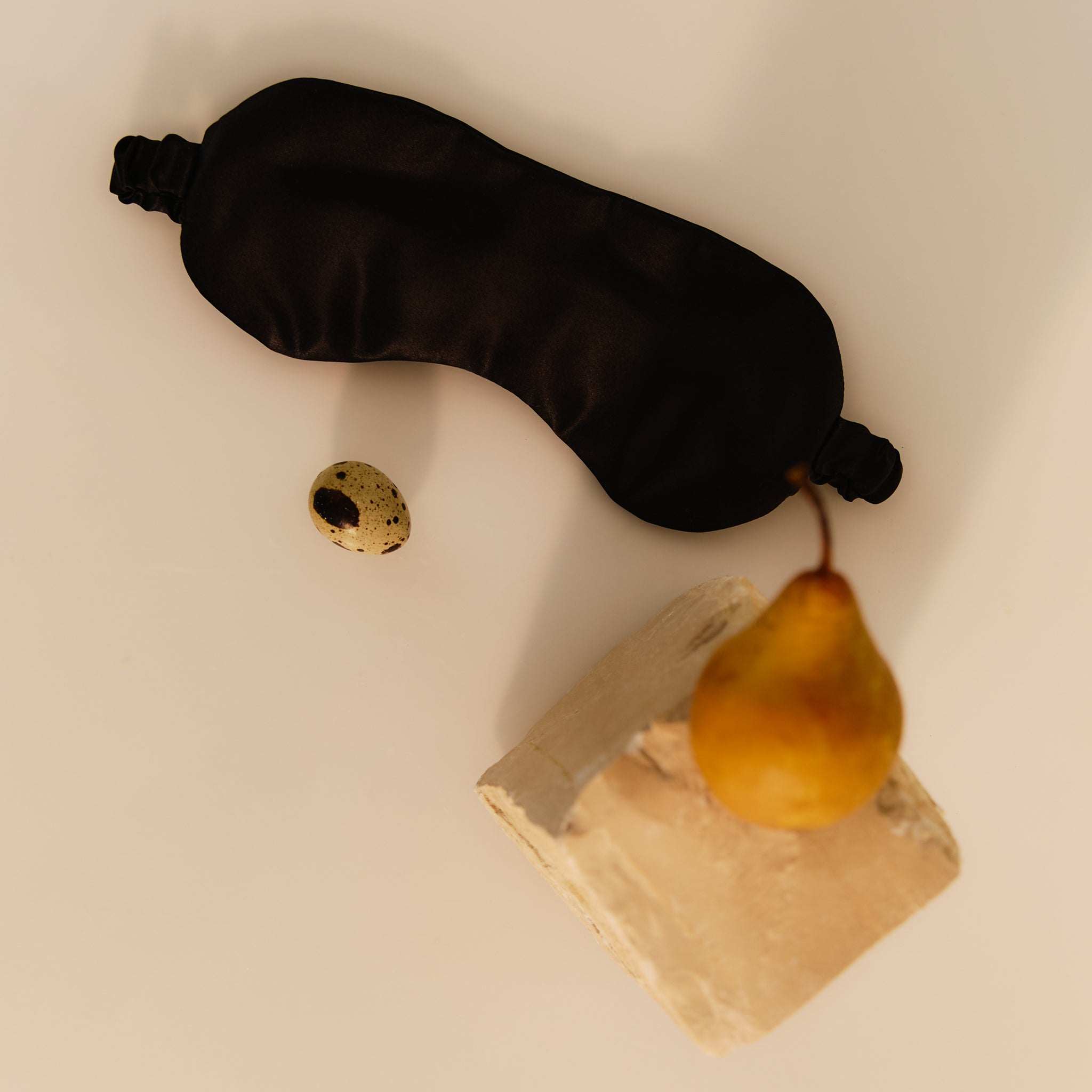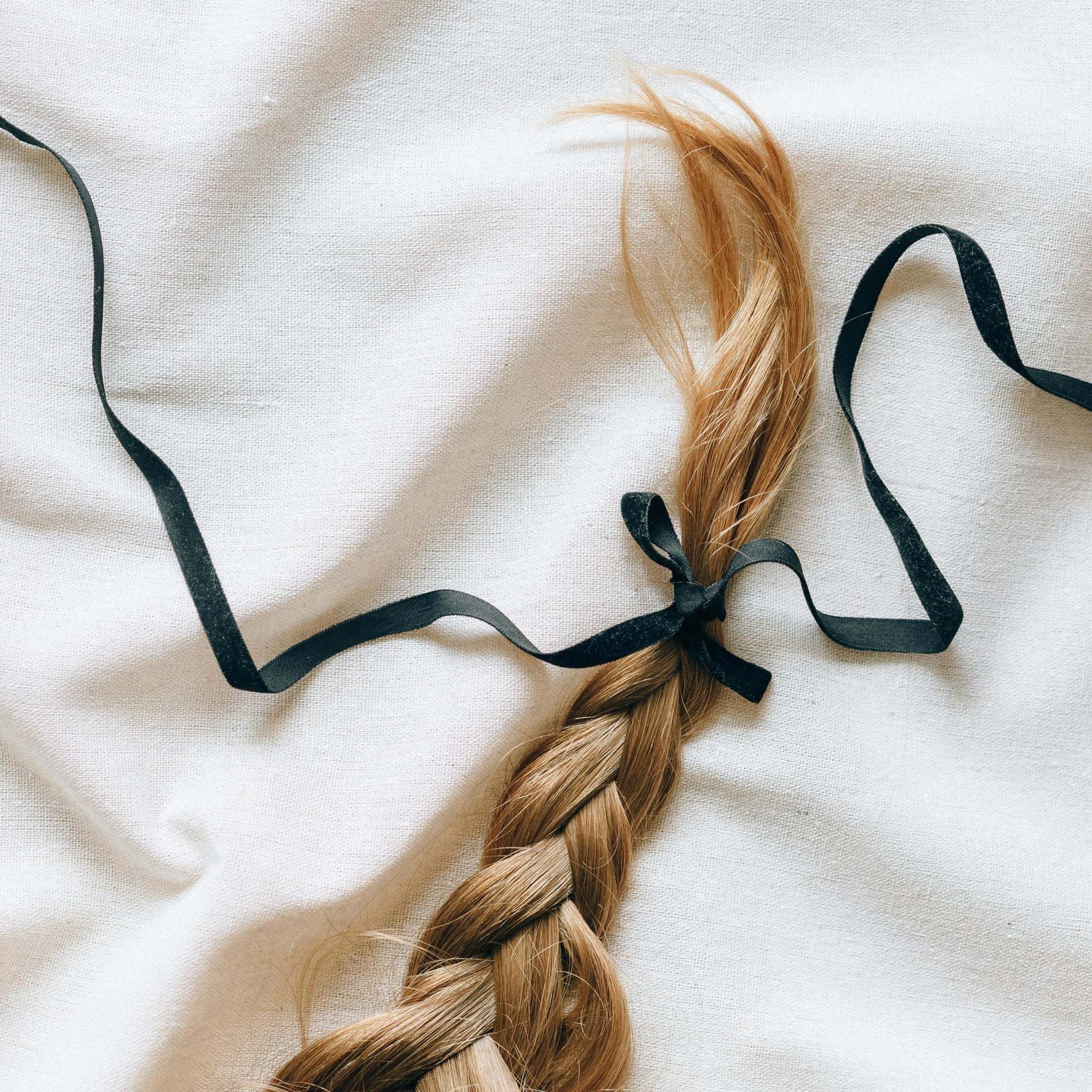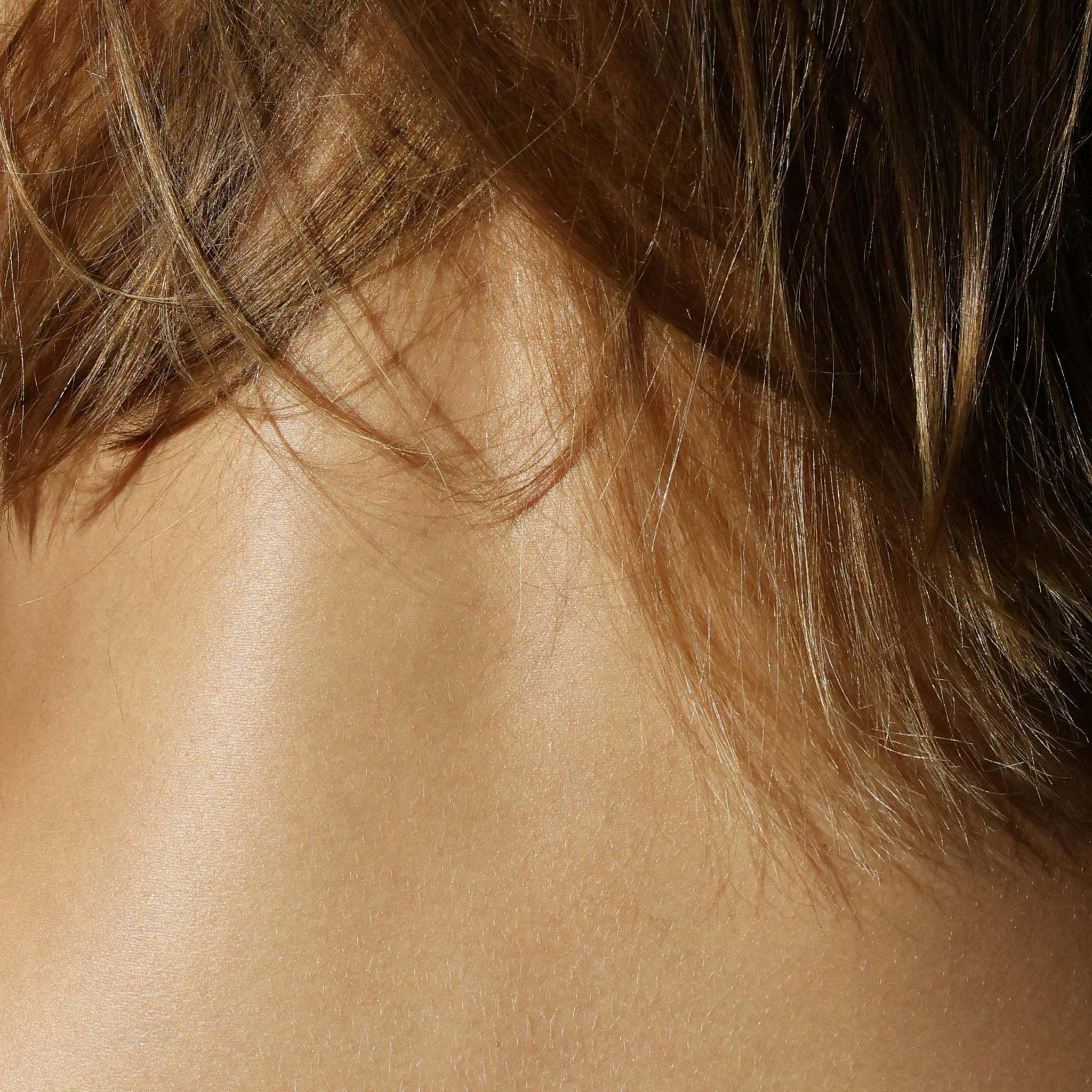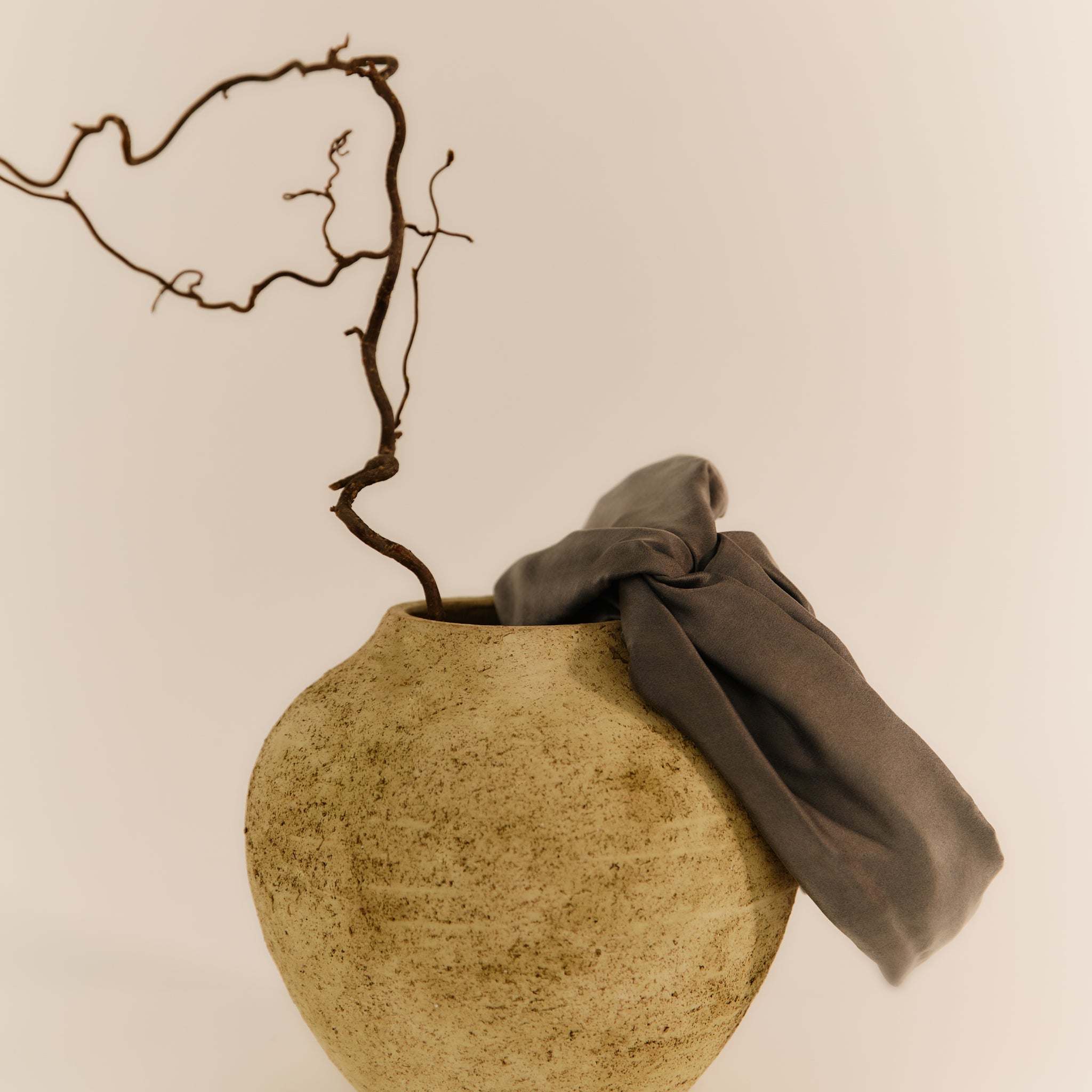The natural silk microfiber duvet
The Setino double duvet , the Topper mattress cover and the entire range of T.SILK COLLECTION products are the innovation applied to the exclusive natural silk fibre that allows the traditional duvet or comforter to go beyond natural microfibre , which goes beyond the concept of a microfibre quilt that revolutionises the silk pillowcase , the silk-padded pillow, the silk sheets.
The excellence of the naturalness and comfort levels of silk with the characteristics of the unique natural microfibre.
What is microfiber?
In the textile world, the term microfibre refers to fibres with a count of less than or equal to 1 Dtex.
Dtex is the titration system that defines how many meters of a certain fiber are contained within a gram of product/yarn
Microfibers are defined as very thin fibers, conventionally less than 10 microns. Considering that a micron represents one millionth of a millimeter, fibers with a cross-section smaller than 10 microns are extremely light and impalpable, with their intrinsic softness and some unique characteristics:
- extreme flexibility and adaptation to the body they wrap around
- featuring a very pleasant texture to the touch
- very covering
- a bright, iridescent background color
- without external adhesions therefore smooth and sliding
Synthetic microfiber
When we talk about microfibers, we generally refer to the world of synthetic microfibers, even though microfibers are actually made up of different synthetic and man-made fibers . The most common composition is a blend of polyester and polyamide.
The development of microfibres occurred mainly towards the end of the last century with the advent of synthetic/artificial fibres from extrusion, with the never-before-denied attempt, by leveraging price, to replace natural fibres and in particular silk , trying to chase, without ever approaching them, its excellent characteristics.
Brief historical notes
Synthetic fibers, especially viscose, were initially called artificial silks and enjoyed enormous development in the field of cleaning products, due to their softness and presumed ability to absorb liquids and capture dust.
Subsequently, thanks above all to pressing marketing campaigns aimed at highlighting its unquestionable price strength, the use of microfibres was imposed in numerous other textile sectors including clothing, accessories and household linens.
Pollution caused by synthetic microfibers
The fibres that make up modern microfibres are fibres that, being mainly derived from petroleum, cause highly toxic and highly impactful forms of pollution:
- they use raw materials directly or indirectly derived from petroleum
- during their production they release dangerous and harmful substances to the ecosystem
- during their use they release various substances and elements harmful to health,
- impossible to dispose of, they deteriorate in the environment over hundreds of years, causing high levels of pollution
- responsible for very high levels of plastic microfibres in water
- responsible for high potential damages as they are now inside the food chain .
Natural Silk Microfiber
Silk fiber has a fiber fineness ranging from 8 to 12 microns.
Auctions of the finest natural fibers are regularly sponsored each year for exclusive capsule collections: wool, vicuna, and cashmere. Silk naturally reaches significantly lower levels of fineness.

Silk is a natural microfiber . The silk developed within the T.Silk project, thanks to the innovative processes to which it is subjected, is able to release and make available a high concentration of silk protein fibrils (fibroin) with a diameter between 25 and 30 nm (1 nm = 1 micron / 1000). Silk and the silk developed by T.Silk are in all respects a super natural microfiber .
The best natural silk microfiber duvet
Setino is the best double duvet for your bed system as it's the only one that fully exploits the exceptional properties of natural silk fiber. Setino is the best natural microfiber duvet.
The differences with a synthetic microfiber duvet
A traditional synthetic microfiber duvet cannot be considered a natural and eco-friendly microfiber duvet. A natural microfiber duvet cannot be considered a product, especially when the microfiber or one of its components comes from recycled products.
- The recycling of synthetic and artificial fibres, if of mechanical origin, creates significant problems of fraying and loss of large quantities of microfibres
- The recycling of synthetic and artificial fibres, if of chemical origin, creates the release of substances harmful to the environment and the human body.
A traditional, artificial microfiber duvet cannot be a natural microfiber duvet, even though it's often advertised as such. A synthetic microfiber duvet creates a barrier to heat, trapping it and preventing the body from breathing, triggering the cycle of hot/sweat/cool/cold/hot visions.
The excellence of a high-performance natural microfibre duvet
Thanks to the detailed study of 100% silk fabrics and the exclusive and patented T.Silk silk padding, Setino is the exclusive and only natural microfibre duvet.
A double natural microfibre duvet in silk microfibre which, in addition to guaranteeing the feel and softness of a super microfibre , allows you to achieve excellent levels of environmental compatibility, the sustainability of an agricultural and production system, and respect for the health of the body.
A product, the T.SILK COLLECTION natural microfibre duvet, with the highest levels of comfort (warmth and breathability)

